Stories of Service





To commemorate Anzac Day we thought it was appropriate to share the amazing stories of some of our Ryman residents who have served their country.
We thank them for their wartime service, the contribution they made to the freedom we enjoy today and for sharing with us their personal experiences.
We hope you enjoy their stories.
This booklet is not intended as a historical document, but simply to share memories and experiences of some of our Ryman Village residents.
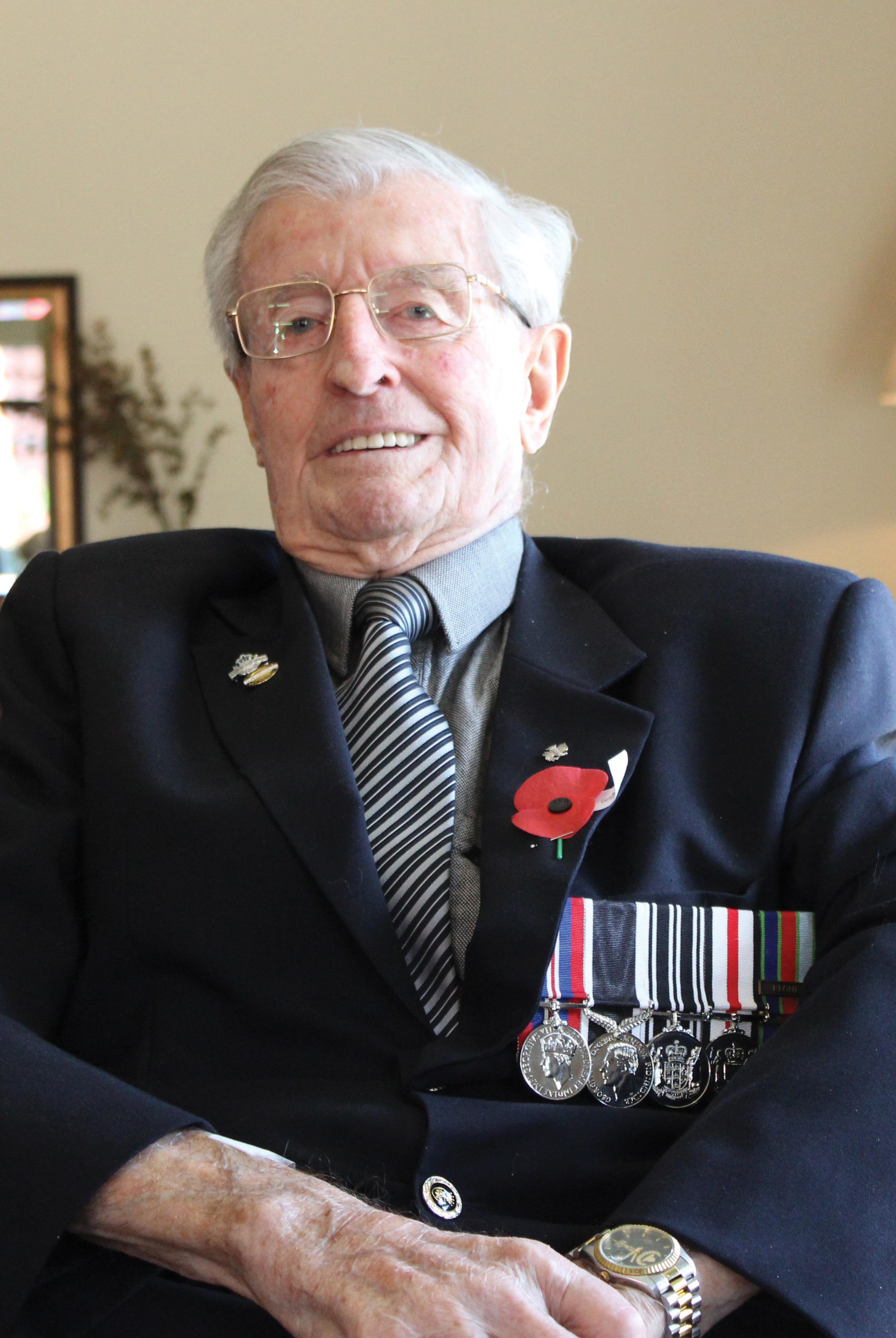
Allan was born in Akaroa and went to St Andrews College. His family farmed at Pigeon Bay on Banks Peninsula. He enlisted in 1944 and joined the 26th Battalion, and trained hard in the expectation of heading overseas. In 1945 Japan surrendered and he was discharged.
“We were disappointed because we’d worked so hard, but then I heard about J-Force and I re-enlisted to go to Japan.’’
He joined the 27th Machine Gun Battalion and he has vivid memories of the destruction of Japan in the aftermath of the bombing. He lost a lot of mates from school in the war and looks forward to Anzac Day.
“It’s all about the mateship – there’s not too many of us left now.’’
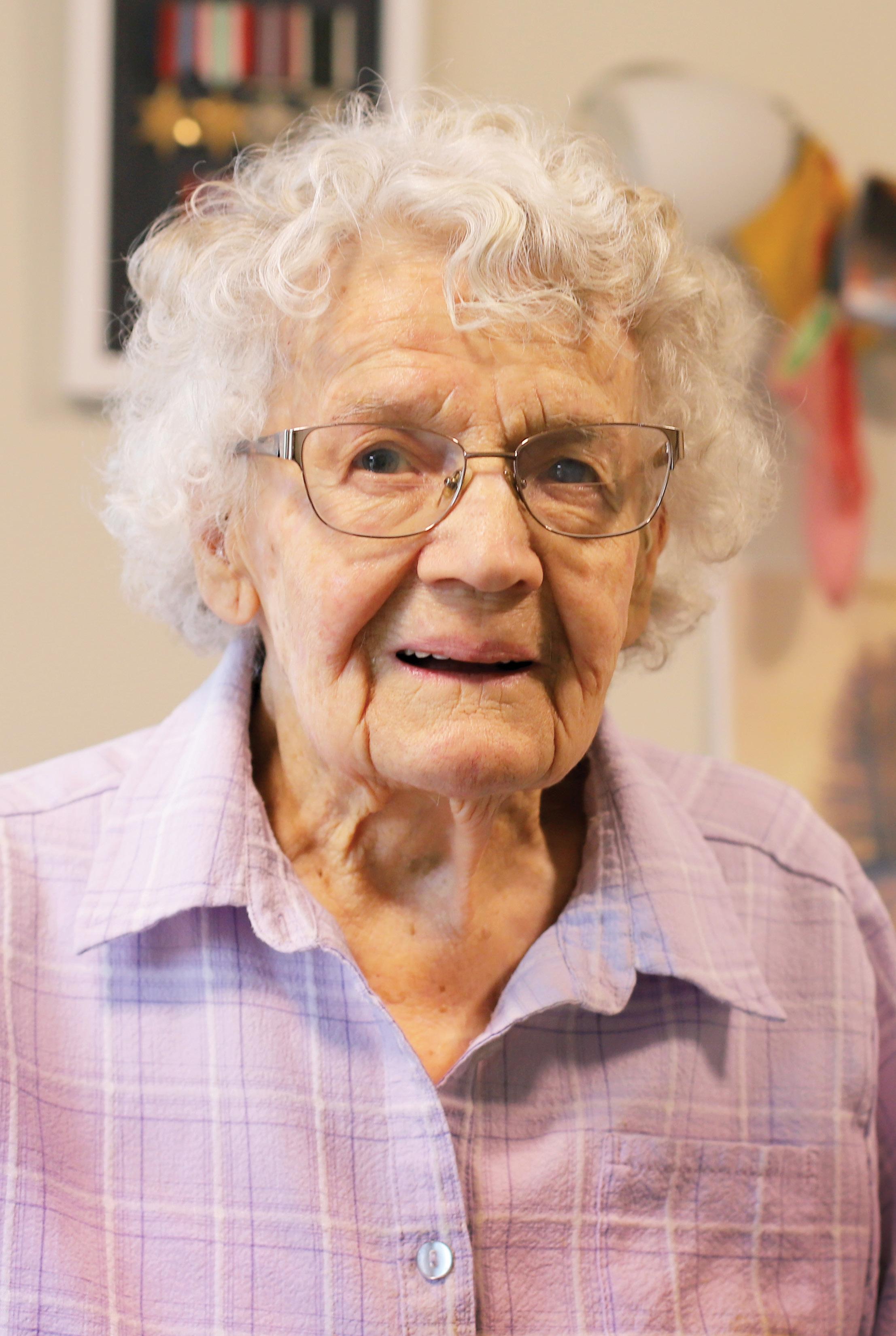
Heather Haylock, says her World War II nurse aid service years were simply about her trying to help her country and the injured or suffering soldiers in need.
She was initially with the New Zealand Voluntary Aid Detachment (VAD), helping or aiding hospital nurses, and that work folded into the New Zealand Women’s Army Auxiliary Corps.
“I joined the army to help with the war,” she says of her work at Addington, Burnham and firstly in Nelson.
Heather Blair was born in Carterton, but at a young age her family moved to Nelson. Her schooling was cut short at Standard 6, and as the eldest she had to attend to her mother Agnes’ health needs.
With her mum on the improve, Heather went on to work for a time with Hannahs shoes. From the outbreak of WWII, she was very keen to help out.
Voluntary aids were trained from 1940 onwards with their help very useful to nurses, matrons and sisters of New Zealand hospitals. By February 1944 there were 268 voluntary aids on service overseas while there were 50 on duty at military camp hospitals and 119 on duty at air force station hospitals in New Zealand.
She served from August 31, 1942 through to April 18, 1946
Heather remembers hospitals could be hard work. For example, she would each day wash down the faded brown linoleum floors of the wards. “I think the patterns had worn off and we had to polish them every day.”
But the key part of her work was helping those in need. An early VAD memory is of feeding an ex-prisoner of war who was in a bad way and transferred into Burnham Military Camp. “He’d been deprived of food, so I just had to spoon it in,” Heather says.
To make things easier for the injured she would turn down the bedspreads for the men.
Her work in Nelson included the job of sewing a button back on a soldier’s shirt. That soldier just happened to be her future husband Roy. Son John says he thinks his dad had spotted his mum before the button sewing incident.
The couple got engaged but agreed not to marry at that point because of an uncertain future. Roy, who served for more than four years including in Egypt and at the battle of Monte Cassino, Italy was discharged in 1946
Heather and Roy married in May 1946 and moved back to Canterbury and the farm at Onuku, near Akaroa. Heather kept in touch with her friends from the army days but is now the only one remaining.
Heather was heavily involved in her Banks Peninsula community and only gave up driving, aged 94.
She lived on Banks Peninsula, for more than 70 years, eventually moving to Anthony Wilding village in 2017.
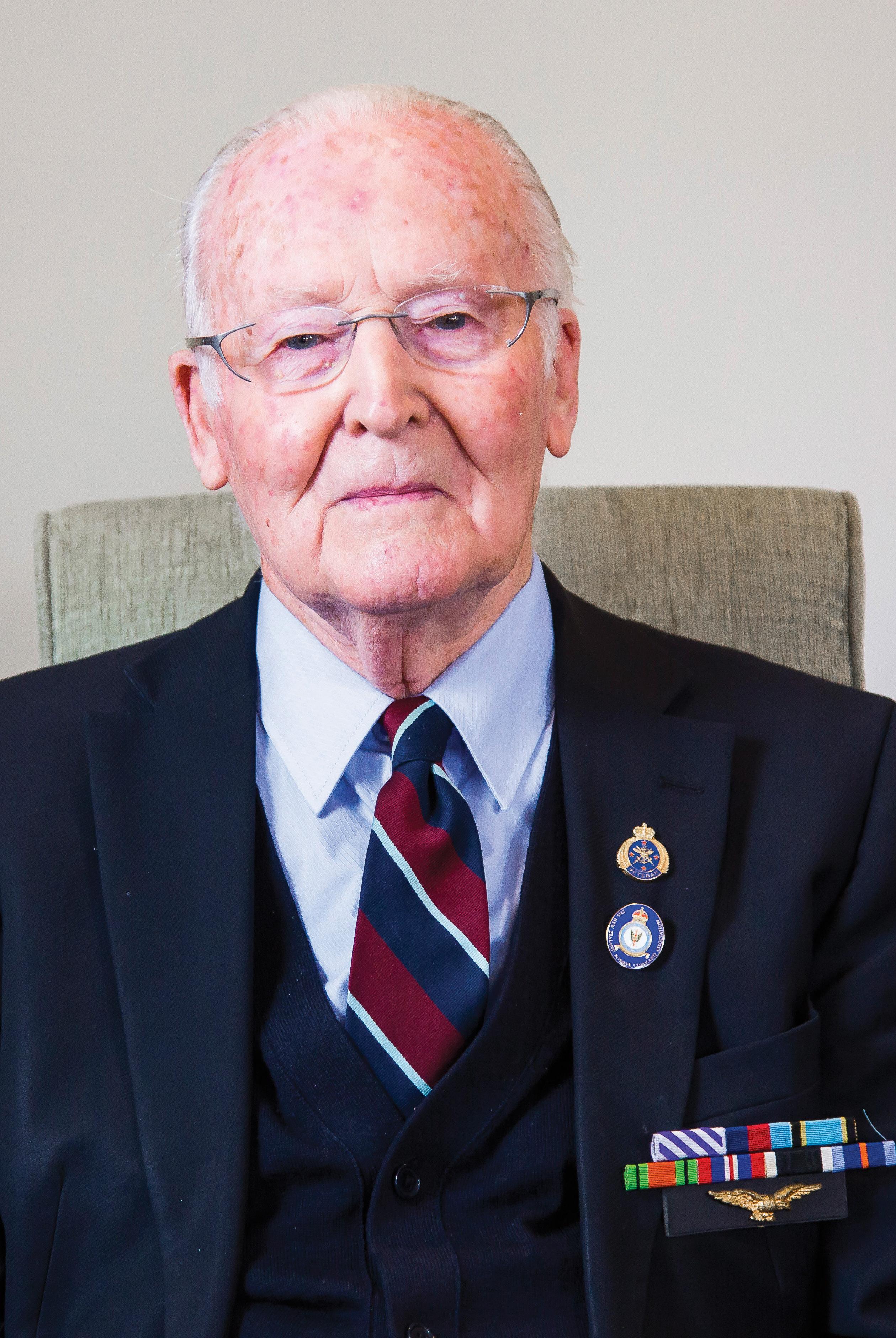
Jack Marshall was born in Balham, South London, but his family moved out to New Zealand in 1937 when he was in his late teens.
When war broke out he joined the RNZAF and headed back to Britain, and joined 115 Squadron flying Wellington bombers as a tail gunner.
He survived an early crash in his career when his bomber was forced to ditch in the North Sea, but he and the crew were rescued by a fishing trawler after 16 hours adrift.
Later on he switched to a pathfinder squadron, and flew Stirling bombers. He flew with Fraser Barron, a New Zealand pilot who became a close friend.
Fraser Barron was one of the most highly decorated New Zealand pilots who flew during the war. He was killed when he was just 23 when he crashed over France.
Jack went on to complete 46 missions and could have ended his flying career after 45 flights but he volunteered to do one extra mission when another crew was short.
The odds of survival were one in three, and he counts himself lucky to have made it through.
He married Molly in 1942, and by 1943 Jack’s war was over because he’d flown so many missions. He and Molly returned to New Zealand to start a family and had three children.
He says Anzac Day is significant, and not a day goes by when he doesn’t think about the mates like Fraser that were lost.
“When you fly in a bomber it is all about your crew. My crew is always at the back of my mind, every day.’’

John was born on the 22nd of June 1922 in Wanganui, one of 11 children he grew up on the family farm at Bell’s Junction, near Waiouru.
At 18 years old, in August 1941 John was called up and did three months training at Waiouru. After the attack on Pearl Harbour in December of the same year, John was conscripted and went into the army in Palmerston North.
John was a machine gunner in the 27th Machine Gun Battalion and was posted overseas in 1943 with the 10th reinforcements. He left New Zealand as one of 7,000 men on the Nieuw Amsterdam heading to the Middle East.
After Egypt, he was sent to Italy as, although Italy had capitulated, there was still great danger. John (‘Ding’ to his friends) was considered lucky and had many a ‘close shave.’
Once near Sant’Angelo clambering up a hill being heavily mortared and carrying machine gun ammunition, “as though it was in slow motion, I saw mortar hit just above me, ricochet off and go down the hill and explode.”
As head front-line medic and the aid to the major who asked him to find a place for wounded, John found a house on a stop-bank 8-10m from the Germans. He went upstairs to check there were no snipers inside and an Armor Piercing High Explosive (APHE) intended for tanks flew into house and exploded. John walked out unscathed!
His luck ran out the night he was captured by the Germans. He escaped in the confusion when the train they were on was attacked by Allied planes. John ran for eight to ten hours in the mountain ranges until exhausted and sick, he was discovered by some Italians who sheltered him. He was finally returned to his NZ division after ten days away. John still finds it difficult to talk about this time.
“As a soldier fighting, I had a job to do. I had a duty, and somebody ordered me to do it but on this one I was alone.”
“It was a tough war. It was bloody and it rained a lot. We lost a lot of men, and the fighting was some of the fiercest of the war. Especially at Monte Cassino. The Germans weren’t going to give up. Cassino was the worst battle area I’ve ever been in. The shelling, the mortar fire and sniper fire was unrelenting and constant. It was pretty miserable.”
John attended the 70th Anniversary of the Battle of Cassino. It was a moving time for him.
On Anzac Day when he was younger, he always went to the dawn parade.
“When we came back, for 30–40 years nobody talked about the war. Once I wrote it down, I could talk about it.”

Being born in 1920 meant it was Esmond’s destiny to be called up to serve in WWII which began when he was 19, so when that call finally happened at 21, he was expecting to be sent overseas.
“I knew it was coming and my mother would not be happy about it as my father had been in WWI.”
At the time Esmond was teaching at Karori Normal School, a vocation he continued after the war until his retirement.
He had already joined the Territorials at 20, and as he had been in charge of cadets at his Wellington college (St Patrick’s City) he was sent immediately to army school at Trentham to do basic training.
He recalls going by ship to New Caledonia and spending a short time in Guadalcanal in the Solomon Islands.
One experience that happened there still plays vividly in his memory.
“I was sleeping at the end of the tent and there were seashells all round us. I heard crunch, crunch, on the shells and I thought crikey, it was Japs coming out of the jungle. He was very relieved to find it was only seabirds heading down to the shoreline.”
Esmond spent a brief time at Maadi Camp in Egypt before heading to Italy.
“I was caught in a dust storm at night there. I was an officer then – a lieutenant – my driver got dust in his eyes that blinded him.”
From Egypt he headed to Italy where they worked their way north to Trieste. “I went through Cassino but I wasn’t there for the battle with the Germans.”
Esmond recalls crossing the River Po on a pontoon bridge. “The Germans were floating bodies down the river with explosives attached. This caused a lot of anxiety.
“And I remember the Italians hiding their ponies, as the Germans were gathering up horses for food. There was a wall that came down, and out from the cavity trotted a hidden pony.
“Blow me down, another time we were sheltering behind a concrete wall that turned out to have a toy factory inside. Some fellas had toys to take home. I saw nothing.
“I just wanted to stay alive.
“When I was in Bari I was responsible for the loading of five ships with vehicles, equipment and personnel. Mates from further north in Italy used to stay with me as I had an ensuite facing the Adriatic Sea.” One special moment in Bari was the day entertainer Gracie Fields was having lunch at the table next to Esmond in a hotel!
After the surrender, Esmond was sent to occupied Japan. He travelled through the Hiroshima area by train. Looking out a lasting memory is seeing the glass bottles on the ground melted into strange shapes. “It made me cringe.
“War is a terrible thing. It was a very difficult time.”
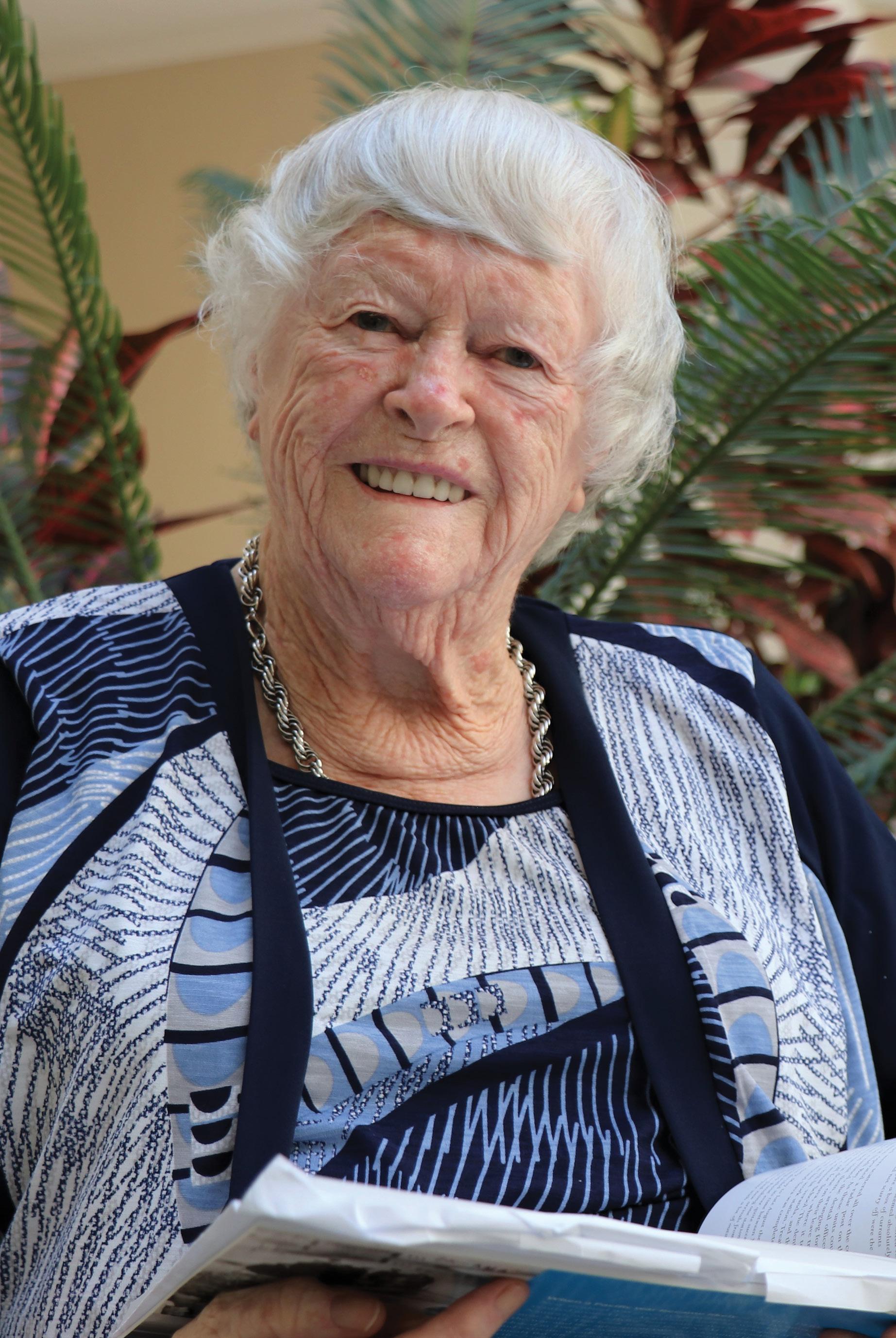
Nan was born in Taihape, where her father worked on the railway.
“When we got called up at 18, we had to go into either the armed forces, or essential work.
“I had been in St John’s Ambulance since I was nine, and I thought I would try to get into medical. I was accepted for the air force before the war finished, but they would not enlist any more women at that time.”
In 1947 they decided to keep the Women’s Auxiliary Air Force (WAAF) going. Nan got the ticket and away she went. Her initial training was at Wigram.
“I went to Hobsonville, which was the flying boat station, as a junior medical orderly. Then to the medical school at Ohakea.” After three years at the medical school Nan graduated and returned to Shelly Bay, Wellington.
Following this, she was selected to go on a special course at Wellington Hospital for another year, and on completion she received state registration.
During this year of study in 1951, there was a watersiders’ strike and the clinic at Wellington wharf was run by the services. It was an intensive time for Nan. “They slotted us in to help at 5pm after our classes finished. We had to get on the tram and get to the wharf, and work until 10pm. After that came study.”
In 1953 she was sent to Fiji, the start of an exciting time working overseas.
“It was the right time to be there during the royal visit. The air force had a lot to do with the organising of it.
“We formed the guard of honour on the jetty when Queen Elizabeth II left for Samoa, in a specially fitted out Sunderland aircraft. We then had to quickly get changed, jump into work-suits and get on the high-speed rescue launch in case an emergency rescue was needed.”
They also did a lot of work for the Fijian Government.
“We managed the arrival medical documents for Teal flying boats when they berthed at Laucala Bay. We had to spray the aircraft on arrival, and even provide blood at a moment’s notice!
“We visited ‘Leper Island’ (the leper colony on Makogai Island) every few months to check on the people there and give inoculations. We used to take treats for them. It was terrible.”
In 1954 Nan went to Changi, Singapore, where they did medical evacuations back to Australia.
Nan recalls Anzac Day – everyone was involved, cleaning and polishing the night before, and up at 5am for the dawn service.
Of her time in the services she says, “After ten years of very satisfying service, I would definitely repeat my time again.”
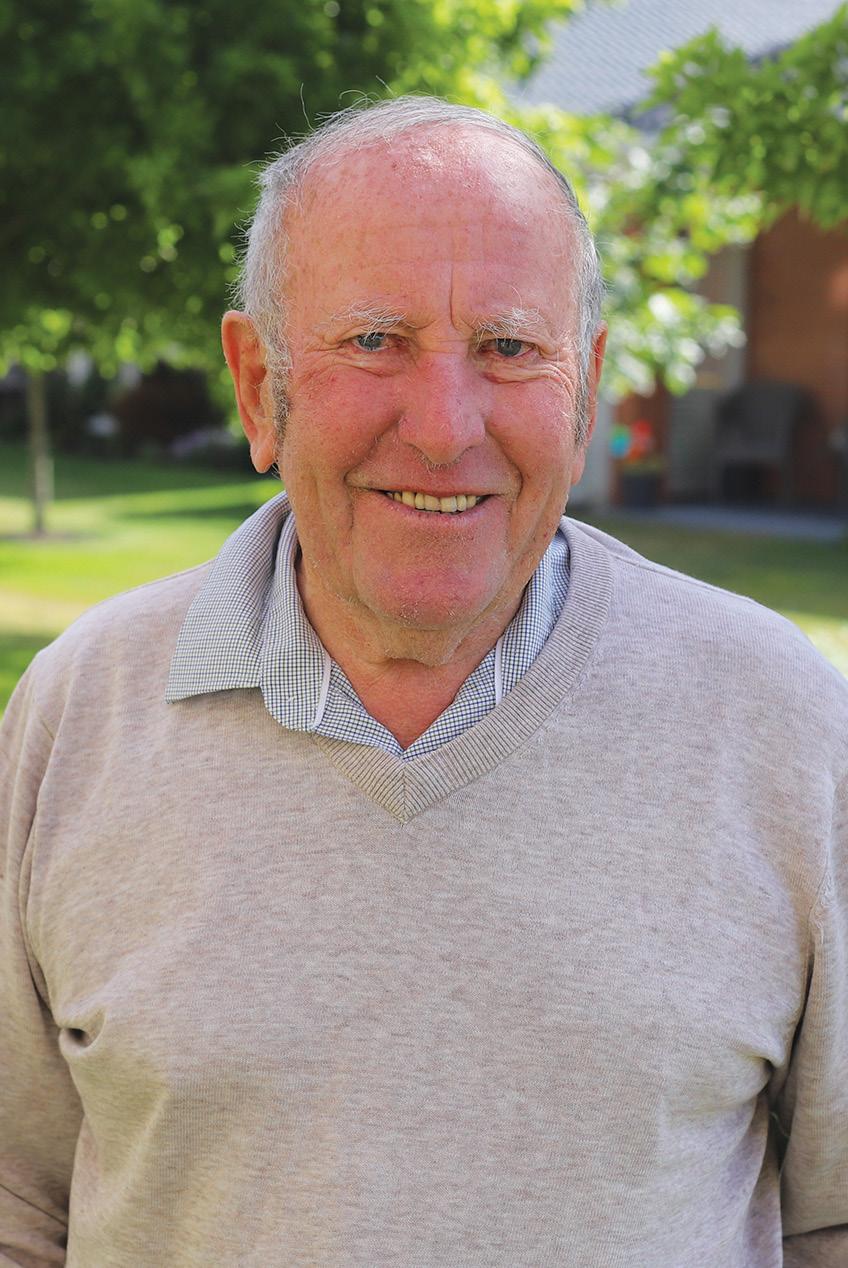
In 1965 David flew into Singapore at a time of real conflict to be part of a Royal New Zealand Navy (RNZN) response to attacks on the island from Indonesia.
Indonesia’s left-leaning President Sukarno launched “Konfrontasi” in 1963. This undeclared war included military incursions into areas including Singapore and East Malaysia.
Sukarno, like many Indonesians, believed the creation of a Malaysian federation was unwarranted. New countries like Singapore were emerging as a period of British colonialism in the Far East came to an end.
David, who had already served in the Naval Volunteer Reserve as part of his compulsory military training, was commissioned and flew into the conflict zone for a period of nine months, during 1965-66.
“I saw an opportunity to go to sea in the Far East because they were short of officers. I was a radio operator, and I was commissioned, and I was a sub lieutenant.”
David points out the confrontation was real. Singapore experienced a series of bombing incidents in which people were killed as a result of devices planted by Indonesian saboteurs.
In August 1965, the Malaysian Parliament voted to expel Singapore from Malaysia, leaving Singapore as a newly independent country.
“We were there (because of) the Indonesians. They were causing disruption throughout Singapore and Southeast Asia,” David says.
“We joined forces with K D Malaya (naval base) ... we weren’t there on holiday.”
Part of his navigation officer role was on board a mine sweeper HMNZS Hickleton, that started operations in the Far East in April 1965. This and other minesweepers, including some from the Royal Navy, patrolled at night on set patterns. These operations were the RNZN's last large-scale operation with the Royal Navy.
David says the ships would tend to leave port at 4pm and be back into Singapore by 8am, as part of an effort to stop Indonesians get into British territory.
The Indonesians tended to be on motorised-sampans, and gunfire was often exchanged.
The Hickleton, together with her sister ship HMS Santon, carried out hundreds of patrols, with dozens of incidents involving intruding Indonesians, and with some taken as prisoners.
“We challenged them and opened fire on them if they didn’t respond.”
Even then Singapore was a big city, he says, and offered rest and recreation for periods of time. “We used to hop in the car and drive down to Singapore... many nights.”
David, who had been given a leave of absence from his workplace, flew home and was soon back with Victoria Insurance Co. in Dunedin as an insurance assessor.
His naval reserve work continued for many years.

When Graham Fisher was deployed to Vietnam in 1967 his mother had a terrible sense of history repeating itself.
Graham vividly recalls his mother’s reaction when the family learnt his uncle would serve in WWII.
“She said ‘I bet you, when Graham’s old enough there will be another war’,” he said.
Graham enlisted in the Australian Army in 1964 when he was 18, with the rank of Private (Craftsman). After basic military training at Kapooka, NSW, he was posted to the Royal Australian Electrical and Mechanical Training Centre in Victoria to train as a Fitter and Turner and inspect and repair everything from small arms to tanks. He was deployed to Vietnam in June 1967.
“Prior to being posted I had to pass a three-month training course at the Jungle Warfare Centre in Canungra, Queensland,” he said.
“We were jumping out of moving trucks, firing blanks into the hills, shooting rifles, swimming with our packs on; all of the stuff you could come into contact with in war.”
Graham was posted to Vũng Tàu, a relativity calm part of the country, but his role involved travel to more dangerous areas.
“I went to the demilitarized zone located on the South and North Vietnam border, and to Saigon.
“I fixed weapons on army ships in the Mekong Delta and you would have to hide when you were on the deck and
hope no one came out of the bush. It was pretty daunting.”
But, overall, Vietnam was a rich learning experience which shaped his military career.
“It felt like more of an adventure when I got home. But I loved the experience, I’d do it again tomorrow if I was able to.”
Back home, Graham served as a section supervisor in Bandiana and Puckapunyal. There, he led military and civilian personnel inspecting and repairing everything from tanks to medical equipment.
In 1975 Graham was posted to Papua New Guinea where he instructed local soldiers on the repair of vehicles, gauges, and medical and dental instruments.
When he returned to Australia in 1976 he had postings at Bandiana, Broadmeadows and lastly at the Melbourne Mechanical Engineering Agency where he traveled to army units across Australia investigating small arm defects and evaluating weapons prior to entry into service.
Upon discharge in 1984 Graham was a Warrant Officer Class 1.
His time in the military continues to shape his life.
“It doesn’t matter where I go in Australia, I always seem to bump into someone I was in the army with.
“And those army mates, you class them more as family because of what you’ve been through together.”

Arthur Joplin was born in Auckland and went to Auckland Grammar before joining the RNZAF.
He trained as a bomber pilot at Ashburton and Wigram before heading to war in 1943.
Bomber Command had the highest losses of any allied force in World War II, with almost 50% killed. Including casualties and prisoners of war that number went up to 60–70%. But none of that was on Arthur’s mind at the time.
“I think to me it was a big adventure,” he says. “You were going out of New Zealand and going through the Panama Canal which you’d read about and heard about. It was all an adventure.”
Then the orders came through that he would be joining the most famous Royal Air Force bomber squadron of all – 617 – which flew the Dam Buster raids in 1943.
He joined the squadron as a novice pilot in 1944 but admits he was pretty ignorant of the squadron’s already legendary reputation.
His abilities were put to the test on November 12th, 1944, when Arthur flew his bomber to attack and sink the German battleship Tirpitz in a Norwegian fjord using giant Tall Boy bombs.
“The Tirpitz was the biggest battleship there was, and it was stuck up in the top of Norway.
“It was daylight, so they knew we were coming, and they were shooting at us.
“I think we were very, very lucky that we got a couple of direct hits and a few around about and that did damage to the Tirpitz, and it rolled over and sank,” says Arthur.
On his 10th raid he was returning to Britain in bad weather and was forced to crash land.
Two of his crew died and his legs were badly injured, and he still suffers from the effects of the crash today.
His war was over, and he returned to New Zealand to work in his family’s textiles business.
“I just loved flying, there’s nothing like it. I flew four operations before I was 21. It is hard to comprehend now, it is all such a long time ago.”
In January 2016, Arthur was awarded France’s highest honour, the Medal of Knight of the French National Order of the Legion d’honneur.
Arthur admits he is not a huge fan of Anzac Day commemorations.
“I get a bit sad about it all. You realise that you lost a lot of friends.”
He adds: “I think it’s great that the young people are going, and they might realise the damage that war does, but there was no pleasure at going to war.
“You’re doing a job and you did it, but you couldn’t think too much about it, otherwise you couldn’t cope.”

Gisborne-born James (Jim) Scott had his sights set on following in the medical footsteps of his father and grandfather by becoming a dentist before any idea of joining the military occurred to him.
Born on 1st October 1937, Jim went to Gisborne High School before heading to Dunedin and the Otago University Dental School.
But as the reality of being confined to a practice in a small room began to dawn on him, he followed a friend’s advice and applied to join the Navy and see a bit of the world.
Jim was commissioned as a Surgeon Lieutenant (D) in the Royal New Zealand Navy, and went on to enjoy a very rewarding 12 years. His commissions included HMNZS NTamaki, Royalist, Philomel, Otago and Waikato and took him to countries such as Singapore, Hawaii and Japan.
A significant highlight was being in Belfast in 1968 at the launch of the new frigate HMNZS Waikato, by Princess Alexandra.
By 1969, Jim was promoted to Surgeon Lieutenant Commander (D) and later was offered a two-year posting to Singapore – but only if he transferred to the Army first.
This was part of the Government’s decision to unify common services such as dental, medical, education and so on, and as dental was the smallest, they were unified first.
If Jim accepted, it would mean big changes, not least of them wearing a green uniform.
“I was very reluctant to make the change to Army because each service has its own culture and a different mindset.”
An ‘interesting’ period of Jim’s career was an operational tour of South Vietnam with a Mobile Dental Unit in 1972, soon after the Tet offensive.
“We treated all comers – NZ, US, Korean, Australian and local Vietnamese which probably included a few Viet Cong.
“I was embedded for several weeks with a US Special Forces (Green Beret) group, who were out actively patrolling the Cam Rahn Bay area.
“It bemused me that returning after risking life and limb on these operations, they would come to me, reporting that it was time for their routine fluoride application.”
During his last years in the Army, he had the honour to be appointed as an Honorary Aide de Camp to the Governor General, Sir Denis Blundell. During this time, he assisted during a visit by Queen Elizabeth, selecting and introducing the various chosen people to meet her at a Government House garden party.
As a Major, it became apparent that if he wanted further promotion he’d be sitting behind a desk at Wellington Headquarters, so he decided to retire from the Defence Force after 17 years and go into private practice.
He is now a dedicated attendee of Anzac Day services in the village.

When she signed up for Red Cross training in 1941, legal secretary Joan Daniel thought the furthest she would be going would be Rotorua.
But just months later, the 22-year-old former Auckland Girls' Grammar student was setting sail for Suez on the hospital ship Maunganui as part of the Voluntary Aid Detachment.
Joan was initially based in Cairo working at 1 NZ General Hospital at Helwan, near Maadi Camp.
The bulk of her work was dealing with sick patients with complaints ranging from the standard to the more serious, such as dysentery.
Joan worked hard on her shifts and enjoyed exploring the many exciting new sights with new friends during her downtime.
“The invitations were pouring in from everywhere!” she says.
When the Battle of Alamein got under way, with the Germans pushing down towards Alexandria, Joan was sent to the coast of what was then Palestine where 40 of them lived in a big shed right on the beach.
“We were a happy hospital, they were a lovely crowd,” she says.
When the flow was reversed and the Allies started pushing the Germans back again Joan was sent back to the canal zone, living five to a tent with a Nissen hut used as a mess.
Duties included taking temperatures, doing washes, making the beds – even with a very ill patient still in them – and preparing the sisters’ afternoon tea.
One joyous occasion was during leave when Muriel, her best friend from Auckland who had trained and travelled with her, got married with Joan as bridesmaid.
There was tragedy too however. Three fellow nurses were killed when a vehicle swiped the side of the truck they were travelling in. Joan was the wreath bearer at the funeral.
On New Year’s Eve 1943, Joan was on her way to Caserta, Italy where she soon saw first-hand the true cost of war, with injured soldiers from the Battle of Cassino arriving daily.
“That was really hard work, the wounded came in all the time.
“The Māori Battalion were very good patients and were good fun even if they were really sick and wounded, always with a smile, but with some it was quite sad and used to upset me sometimes.”
The men who’d been shell shocked were particularly upsetting to see.
When Joan had reached her three years’ service, she applied to head back to New Zealand.
She returned to her job to await the return of her fiancé Maurice, who had been a POW in Greece for most of the war. They married in 1945
Maurice wasted no time in buying a one-man law practice in Onehunga which still thrives today.
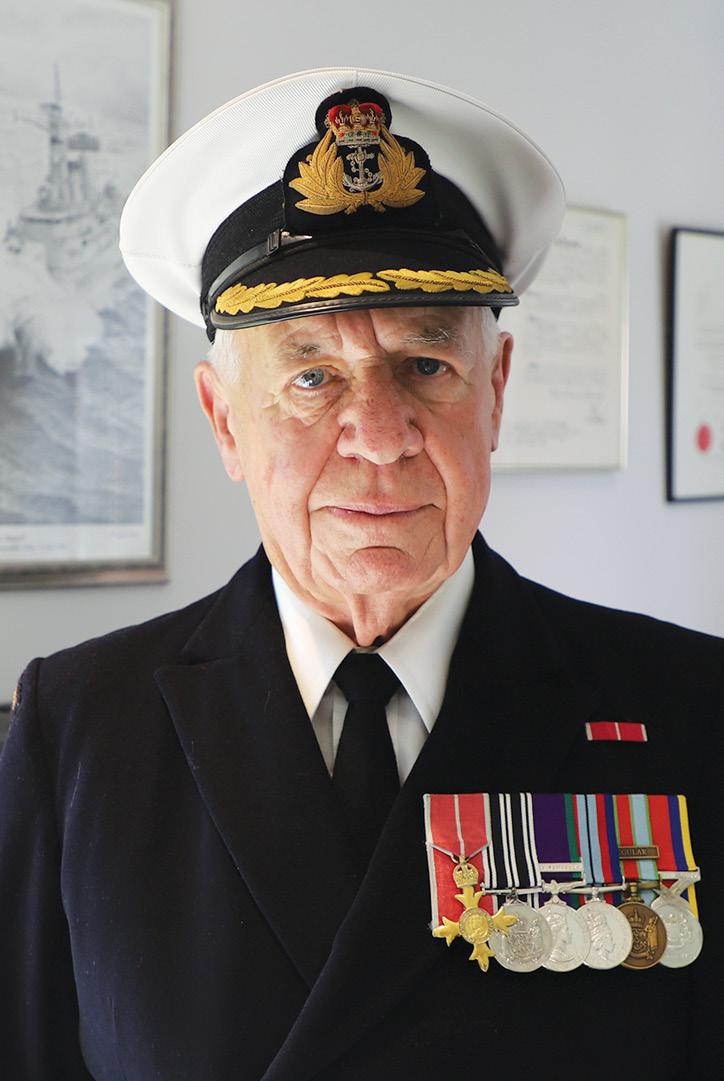
Born on 11 March 1941 in Christchurch, Ron Longley joined the Royal New Zealand Navy as an Artificer Apprentice straight after leaving Papanui High School.
Nearly three decades later, he retired as Fleet Engineer Officer, responsible for all marine, weapons and electronic operational engineering matters for the whole fleet which included 12 ships. But there were plenty of peaks and troughs along the way.
His first New Zealand ship posting was to HMNZS Royalist.
“They put me on there and forgot about me! I was posted on ship as a leading hand, promoted through Petty Officer (PO), then Chief PO before I passed my exams for Warrant Officer – no one else got close to doing that in one posting.”
As a Dido class cruiser, the ship was originally designed for a crew of 450. But following modifications the crew was swelled to 550.
“It was cramped!” says Ron, who nonetheless looks back on those years with fondness.
As a ‘boiler room tiff’, Ron experienced a couple of near misses, both involving extreme throat-searing heat in the boiler rooms and passing out!
The Royalist took Ron to Pearl Harbour twice, a North America tour, three Far East tours plus patrols in Borneo during the Indonesian Confrontation in 1963, ‘64 and ‘65.
He was posted to Singapore for six months in 1967 as a member of the base support party for the Borneo minesweepers.
Ron was then the Squadron Engineer for NZ coastal patrol craft and was then posted to HMNZS Blackpool for a year.
In 1968 Ron was commissioned to officer rank with a stint in the UK at the Royal Navy Engineering College in Plymouth and more training courses in Portsmouth.
Ron also spent two years seconded to the Republic of Singapore Navy, responsible to their Head of Engineering for advice on all technical matters, and was promoted to Lieutenant Commander.
Ron’s engineering skills were clearly in demand and saw him posted to HMNZS Waikato for four years, which included a 21-month extended refit and modernisation, which he says was’ the longest and most comprehensive refit undertaken by our Dockyard’.
Later, Ron was promoted to Commander and sent to the UK for nearly 18 months. For this role, he was the senior NZ representative responsible for the commercial refit of HMNZS Southland in Southampton, which was the first commercial warship refit in the UK. Ron was awarded an OBE for this achievement.
On his return to New Zealand, he was appointed the Fleet Engineer Officer role, responsible for all operational engineering matters concerning the Fleet, which included 12 ships and then retired in September 1985.
He is proud of his navy career and everything that the ‘senior service’ represents and says he wouldn’t change a single thing about it.

Albert Edward Thomson, nicknamed Tom, grew up fascinated with aircraft.
Born on 29 November 1935 in Christchurch, he dreamed of becoming a pilot in the RNZAF.
But he was met with a huge stumbling block when Air Force medics told 15-year-old Tom that his eyesight wasn’t up to standard.
“So, I signed up for the apprentice scheme for training as that looked like the nearest I would get to it.”
He spent three years at the RAF School of Technical Training in Halton, Buckinghamshire and when cadetship came along he was sent to Uxbridge in England where medics then told him there was nothing wrong with his eyes.
Tom went on to train as a pilot at the Royal Air Force College, Cranwell and graduated top of his intake with the Sword of Honour – an achievement his younger brother Russell went on to emulate.
In 1963, as an experienced transport aircraft captain, Tom was seconded to the US Navy squadron to operate C-130 Hercules equipped with skis to and within Antarctica. In March 1964, while expanding his professional experience as a flying instructor, his brother was killed while flying a Canberra bomber over the South China Sea.
After being posted back to 40 Squardron, training crews on the new aircraft destined for Vietnam, Singapore and Antarctic, Tom received a promotion to Squadron Leader.
In 1971, with wife Barbara and a young daughter now in tow, he was appointed
Commanding Officer 42 Squadron at Ohakea, a prestigious job as the unit incorporated the VIP flight, which carried members of the Government and official visitors including the King of Tonga and the Crown Prince of Japan.
Later, as Commanding Officer of 40 Squadron, he received a panicky call to evacuate Embassy people from Saigon.
"The late-night deployment to Singapore via a refuel at Alice Springs and two flights into Vietnam was the longest I have ever stayed awake and flown in my flying career!"
On leaving 40 Squardron, Tom was awarded the Air Force Cross for his leadership of the unit and was then posted as Military Attaché to Thailand, Burma and Laos.
Tom was promoted to Group Captain in 1980 and returned to NZ to Wellington with a number of special projects to oversee.
He was appointed an Officer of the Order of the British Empire (OBE) in 1982 and took over as CO of RNZAF base Auckland, which included Whenuapai and Hobsonville.
Overseas postings continued, this time with a year in Canada at the National Defence College. On his return, Tom was promoted to Air Commodore and took up the post of Air Officer Commanding Support Group with responsibility for all ground and aircrew training.
Another honour followed in 1988, when Tom was appointed a CBE and returned to Wellington for a promotion to Air Vice-Marshal before retiring in the early ‘90s.

Even though Bernie Lewis was still at Nelson College and too young to join up, he took a great interest in the air force during WWII. With two brothers as pilots, he was fascinated with flying having taken his first flight in 1934.
By the time he could apply to join the RNZAF he had his private pilot’s licence, but the only position offered to him was as a navigator. It was that or nothing, he was told.
“So, I took next boat to England at my own expense and applied for the RAF where there was a big demand for air crew.”
Bernie joined the Royal Air Force in 1950 and served as a jet fighter pilot on Vampires and Sabres before becoming an instructor.
He started training at Cranwell in January 1951. Later at RAF Feltwell, he moved on to the cumbersome Percival Prentices and Harvards – the Tiger Moths were gone by then. Bernie was awarded “Wing” and a trophy for best pilot in February 1952.
At RAF Merryfield, in Somerset he moved straight on to jet conversion on the Vampire 1
Bernie remembers his first jet flight. “We didn’t have jet trainers on Vampires, so we did flying on Meteor trainers which were a little different.”
Posted to Germany, Bernie was allocated to a squadron at RAF Oldenburg, near Bremen, which had updated Vampire 5s, and they were re-equipped with the American F-86 Sabre – “a wonderful
machine and very reliable; it performed magnificently. They were big, with air conditioning, and you could roll and loop without your flight instruments toppling.”
“It was there I managed to exceed the speed of sound a number of times. I’d go up to 42,000 feet, up into the stratosphere and go belting along and roll over on your back and dive down vertically at full power, and for a glorious four-six seconds you could exceed the speed of sound.”
From there Bernie went to Central Flying School, learning to become a flying instructor and then to instructing at Cambridge University Air Squadron at Marshall Airfield outside Cambridge.
He was there for 2.5 years and then applied and was accepted to go to the Empire Test Pilots’ School, Farnborough.
Bernie was seconded to the Ministry of Supply on special duties, and was asked to assess and report on the aircraft handling at high Mach numbers. First at 40,000 plus feet and diving faster and faster at different speeds.
“I noticed the flight engineer was reading the pilot’s notes. I said, ‘just one more dive’ and climbed to 52,000 feet. ‘Ok sir,’ he said still reading.”
At end of first term, they asked for volunteers to move on to helicopters. Bernie tested models including the Westland Wessex for the navy.

On leaving Nelson College, young Bill Morgan joined the public works as a surveyor. The staff there were mostly returned servicemen and they told some great stories. “My mother was not keen on me joining the army, but I didn’t want to be in public works.”
Bill joined the army in 1949, married his sweetheart, Ngaire in 1950 and over the years the army took him to lots of places, including Burnham, Linton, Dannevirke and Waiouru. Bill recalls shifting 14 times!
During the Malayan Emergency he was posted to B Company as quartermaster. Ngaire and the kids would go too. They were there for two years but Bill but spent two or three weeks at a time with the Company at Tanjung Rambutan rubber plantation on the outskirts of Ipoh – a friendly tin mining town. Bill’s recollection of jungle warfare was of the enemy who were silent, quick and cunning.
“I enjoyed my time in Malaysia before moving back to the regimental depot at Burnham as quartermaster.”
During his stellar career, Bill held various appointments as an instructor in the Royal NZ Infantry Regiment and also that of the Regimental Sergeant Major of the 1st Battalion Royal NZ Infantry Regiment while stationed in Malaya.
In 1967 he was appointed to a quartermaster commission and was appointed as quartermaster to Burnham Camp.
After a brief period as Investigating QM for the Southern Army Region, Bill assumed the appointment of Commander of the
Nelson, Marlborough and West Coast Army area, the appointment he had until his retirement in 1979.
Bill recalls one posting to Dannevirke and wondered what on earth he had done wrong. But the army had plans for Bill and wanted him to spend some time with civilians building good public relations and community respect for the army.
Living now in his hometown of Nelson it’s easy to see he was the right person for the job with his hearty greetings and friendly quips to fellow residents as they pass by his seat in the café.
“But looking back, my last posting to Nelson was special and a great thrill as I was very proud to represent the army in my hometown.”
“Anzac Day is remembering,” he says. One loss that has never left him is of a young dog handler who was shot when his dog caught the scent of a band of terrorists, and it dragged him ahead of his patrol.
“My father went to WWI and WWII and received an MBE for his service.”
Following his second term in Malaya, Bill was also awarded the MBE for military service.
“Anzac Day to me is for remembrance. It’s the little things I remember.
War is hopeless. But what’s the answer? It seems so futile.”
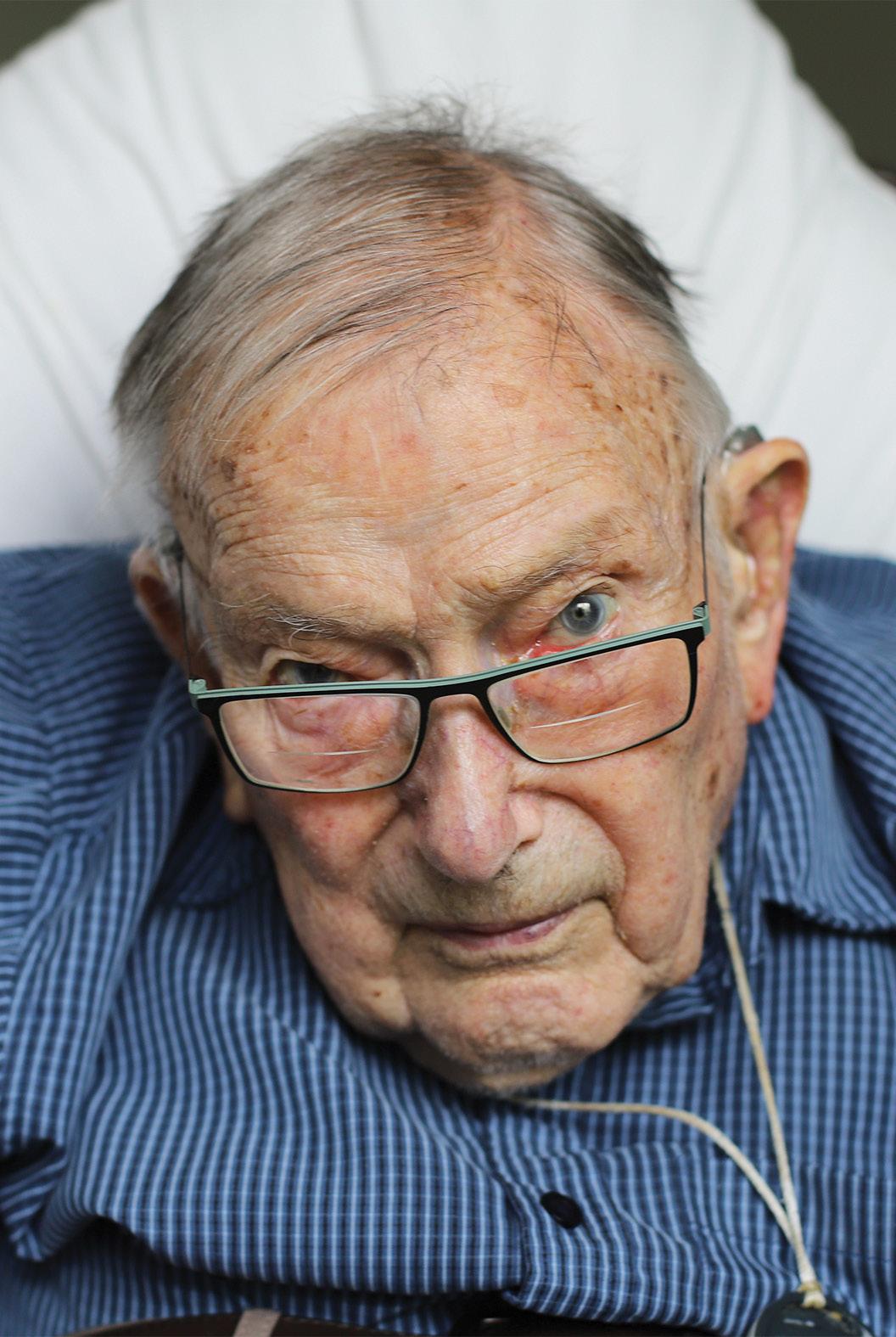
Having celebrated his 102nd birthday
Brian Stedman looks back on his life journey including military service in the remote tropics during World War II.
He has memories of flying over the Pacific Ocean as the Allied troops made forays between the islands during the battles against the Japanese. The air was heavy and humid, and the action continuous.
Brian wasn’t a pilot but rather a meteorologist, making sure the conditions were favourable to allow the bombers and following fighter planes to get safely to their destination and back.
His service during an always dangerous war was not surprising given his family background.
In his early days, with encouragement from his father Maurice, he joined the Territorials. His father, who had served in France in World War I, had a role as camp commandant at Burnham.
At university, he concentrated on mathematics, physics, and chemistry, and completed a bachelor’s degree. In 1942, he transferred from the Territorials to the New Zealand Royal Airforce. He started as an airman and began his training in meteorology.
While learning the basics he visited various bases including Harewood, Wigram, Wellington, and RNZAF Station Waipapakauri, north of Kaitaia.
In the North Island, he heard talk of German surface raiders, that were essentially merchant, or cargo vessels outfitted with guns. He remembers war wreckage located along 90 Mile Beach.
His Pacific wartime memories are strong, including an initial airfield base at Whenuapai. He was part of a station personnel on the islands and was the squadron’s weather observer.
He also flew on occasion as part of a bomber reconnaissance group.
By this time Brian was a commissioned officer, and at the start of his Pacific travels. The bombers would fly in clearer weather to help those manning the fighter planes. There were “vast distances” covered on such missions, he said.
Initially he was based at Guadacanal, part of the Solomon Islands. Guadacanal had been the location of bloody fights between the Allied forces, including the US Marines, and Japan.
Brian says by the time he arrived in the Solomons the Allied forces were pushing forwards to the Marshall Islands.
From Guadacanal he would be on board bombers as they flew north or south to help with weather predictions for Allied aircraft manoeuvres in and out of Pacific airfields. Those destinations included Bougainville, Vanuatu, and Noumea/New Caledonia.
“So, they would be waiting for these weather forecasts to make sure the weather was going to be clear all the way… they would also have people looking at the weather down in their area, to make sure it was nice and clear.”
The Lockheed Hudson or Ventura bomber aircraft and Corsair fighter planes would fly in formation, he remembers.

Murray Drury was born at his family home in Christchurch in 1935 and trained and worked as a butcher while also enjoying a role in the Army Territorial Force.
He joined the military after being conscripted in 1953. Compulsory military training, known as CMT, was reintroduced to New Zealand following World War II
He became a territorial within the 1st New Zealand Scottish Regiment, which was later converted into an armoured unit of the Royal New Zealand Armoured Corps.
Murray is a Cantabrian and a details man. He even remembers his intake number, 821135, and has fond memories of the territorial force, also known as the army reserve.
His initial six-week “boot camp” training involving marching, exercise, and camping out, took place at Burnham, south of Christchurch.
Later he and other young men took trains and a ferry to the central North Island ‘military town’ of Waiouru. Murray says there was a real party atmosphere on the train to Picton, and then getting kitted out with the required gear on arrival at base at midnight.
He has fond memories of driving Scorpion tanks. This was around the time of Queen Elizabeth II’s coronation in June 1953, and her later visit to New Zealand.
The training on the central plateau included tank manoeuvres, small arms training and sessions on the firing range. He and fellow territorial soldiers did some preparatory work for involvement with ‘Kayforce’ in the Korean War, but in the end did not join other Kiwis stationed overseas.
A “pretty good” Waiouru army rugby team was formed, doing well in a North Island competition including teams from townships like Taihape.
Over his eight years with the Territorials he rose to the rank of sergeant and very much enjoyed the comradeship. Each February Territorials from Auckland, Wellington, Christchurch and Dunedin would gather for two weeks at bases like Linton Military Camp.
Back in Christchurch, the old Addington prison was used as the headquarters for the Canterbury Territorials, he says. The prison and grounds were big enough to be able to store three armoured cars, and some smaller Ferret scout vehicles taken on weekend camps. Often on a Friday night he and mates would gather for a drink. He now remembers them on Anzac Day.
Later, Murray represented Canterbury province as a front row rugby player, binding down with the likes of Dennis Young and Jules Le Lievre (both All Blacks). He also loved salmon fishing at the Rakaia river mouth.

Norm Scoles personally received a Distinguished Service Medal from Queen Elizabeth II for his heroic efforts to rescue a fallen comrade from a skirmish on the Korean mainland.
Queen Elizabeth presented him with the medal at a special ceremony at the Civic Theatre in Christchurch. The Queen and Prince Phillip were on a royal tour and arrived at the Civic for the ceremony on January 20, 1954.
Norm’s award related to his actions and bravery on the west coast of Korea in September 1951, when he was still aged 21 and one of those serving with the frigate HMNZS Rotoiti. He says the objective of the landing was to cause the enemy a bit of trouble. But that aim soon rebounded on them when his mate Robert Marchioni was shot.
Norman carried the body of Able Seaman Marchioni over a cliff top and along a beach, before being forced to find a hiding place for the body. Norman, a Leading Seaman, and the landing party came under heavy enemy machine-gun fire and were forced to move quickly during the incursion on Go-Rin-Chi-Ki Point.
Marchioni was shot and killed as part of the Korean War, and since then there have been negotiations to repatriate the body. Whether or not his body remains where it was hidden is not known.
One press clipping from the time reported: “Scoles according to a Press Association message from Tokyo, knelt beside a mortally wounded comrade and applied a field dressing during heavy fire.” Scoles adds that he threw back a standard-issue
grenade, followed by a spray of bullets before instructing the troops to return to the boats.
Norm carried Robert on his shoulders around a rocky point to where the boats were waiting but left the body when he was exhausted.
In the recommendation for decoration, it says the grenade silenced guns and facilitated the withdrawal of the assaulting party, he was part of.
Norm was born in Cromwell and grew up with four brothers and a sister in Arrowtown saying the Depression years were very tough. Food was so scarce they basically had to eat what they could catch, including rabbits, or grow.
His father had helped him get to as far as Dunedin before getting him on a rail car/then ferry in order to sign up for the navy in Auckland.
He trained in 1946 on the HMNZS Tamaki, then travelled throughout the South Pacific including Fiji, Tonga and on to Darwin and further above Australia. His first ship was the cruiser HMNZS Bellona. He remembers games of rugby against the Fijians.
Norm’s grandson Simon Bird wrote an account of his grandfather’s life, noting that after leaving the navy he worked as a watersider, then for 30 years as a foreman stevedore.
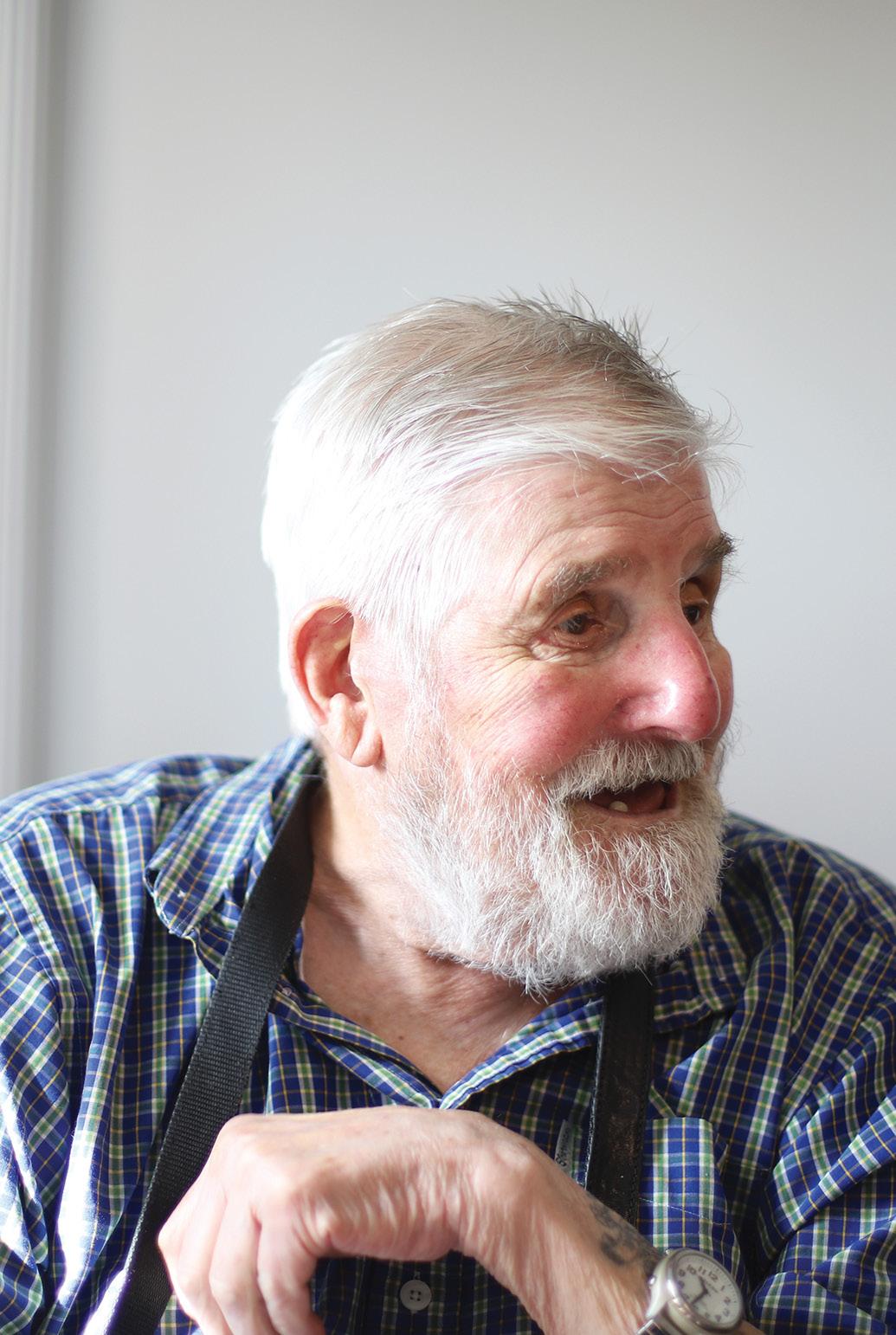
Jack was born in India more than 100 years ago. His service includes defending the border between his birth country and Burma, where war hungry Japan had staked a claim.
While brought up initially on the Indian subcontinent, Jack naturally exuded a British manner. He lived for a good part of his life in the United Kingdom. Aldershot Garrison, Hampshire was one military base he trained at in preparation for World War II.
Born in Mhow, a town in Madhya Pradesh, Jack was brought up in a small British Garrison, where his father Raymond was stationed acting as a bombardier with the Royal Artillery. His mother, Maude, worked as a lady’s maid to an officer and his wife. As a youngster he was sent to Cardiff to be raised by a grandmother and an aunt. His mother was worried, having come home to find a snake outside the nursery door.
His grandfather also was an army man, acting as an officer in charge of enlisting men into the Welch Regiment. There are historical items belonging to his grandfather in the Welch Regiment part of the Firing Line Museum in Cardiff.
With the outbreak of World War II Jack was initially involved in UK coastal defence but was soon on the move, this time back to the Indian subcontinent. The troop ship trip was made via South Africa, where Jack and his comrades spent about two months before making their way to India for further training.
The Welch Regiment unit ended up in the Burmese jungle, fighting the Japanese. Jack says the jungle conditions were oppressive. He was serving as a corporal and remembers combat during the Battle of Kohima, which took place in Assam Province during April to June of 1944. The Japanese were taking on the Allied Forces.
“They drove the British all the way back through Burma right up to where you drop down into India,” he said.
“There was a huge invasion of Burma, and the upper reaches of India. There was a very famous battle, and (or our troops in India) there was a long man-made cement road which went all the way up to where Burma started.”
He had a dice with death when a Japanese howitzer shell detonated near the foxhole he took cover in.
Jack remembers being in hospital, for some time, and suffered from malaria, dysentery hepatitis A, and gangrene. He was also shot in the foot though the wound was minor.
After the war he went back into civilian life, got married in 1946 in Penarth to Jean, having known her before he joined the war effort.

Ron claims he was known as the village idiot – why? “I put my age up and ran away to join the navy.”
He was born in Puddle Dock, Kent, England in a two up/two down cottage with dirt floors downstairs and a well outside. There were only about six cottages in the small village, so Ron who was born in January 1926 went to the closest school in Hextable. He left school at twelve and with war looming, the local builder gave him a job building air raid shelters. He was a busy lad, doing evening firewatching, and because of his local knowledge of the district, was a messenger for the Air Raid Precautions (ARP).
“Our house was like a pepper pot with bombs. We had two air-raid shelters. One out the back and one inside.” One night the village got hit by a load of fire bombs. Clearing up, Ron’s younger brother collected a barrow load of unexploded fire bombs thinking they might be worth a bob or two! “My ol’ daddy went spare! Dad put them in a nearby pond.
“I volunteered in 1942. I lied about my age and joined the Royal Navy.”
Ron did ten weeks training at the HMS Collingwood shore establishment at Fareham, England, then went straight overseas. He travelled on a troop train to Glasgow and was sent on the Aquitania with eight to ten thousand others to the United States of America.
From New Jersey he boarded a troop train to New York and a week later was sent to Vancouver. In Vancouver he joined the HMS Thane, an escort carrier. They took part in exercises with the US Air Force and visited San Francisco.
Ron travelled widely with the Royal Navy, protecting convoys and ferrying aircraft for use in the European Theatre. In Panama they picked up 200 US marines, took them to the naval base in Norfolk, Virginia where fully packed with aircraft, they headed to New York and back to England.
On arrival in England, after unloading they headed straight back to New York, then Capetown in South Africa. These were dangerous times to be travelling.
Ron, a navy gunner, also served on HMS Ajax the sister ship of the HMS Achilles.
Ron hadn’t had leave for two years, when on the 15th January 1945, his ship the HMS Thane was torpedoed close to home. The vessel had called into Belfast, picked up nurses and left without an escort. Ron was busy down below packing for his well-earned leave.
HMS Thane was torpedoed by a German U-boat in the Irish Sea, causing a hole extending almost to the keel. The U-boat also hit and damaged a Norwegian tanker in the area. This happened just 10 days before Ron’s 19th birthday.
Ron also served on the RFA Cardigan Bay for a month, but when the war in Europe finished, Ron was on the HMS Ajax in Trieste.
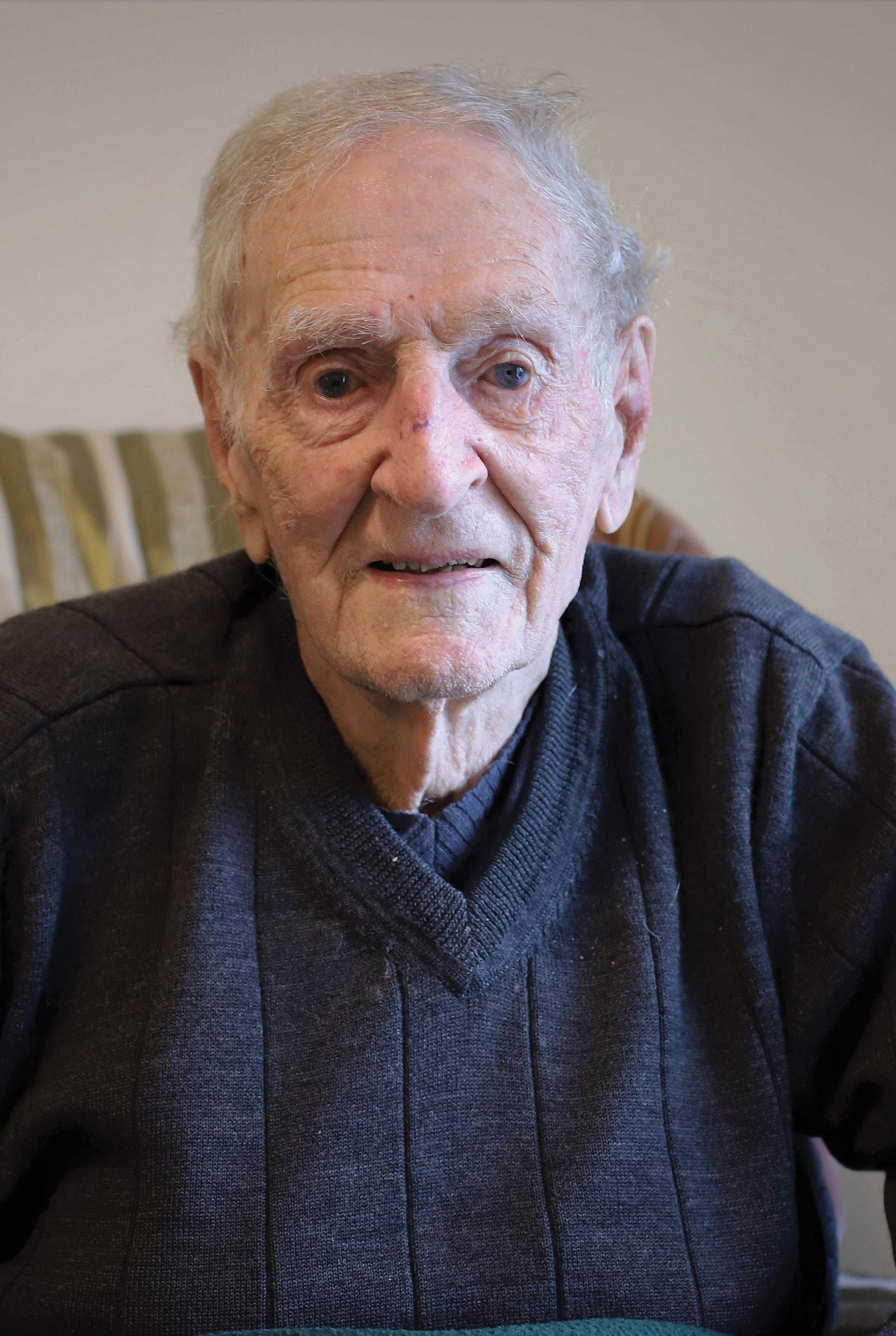
James ‘Curly’ Easton was born on the 12th of December 1916 in Kirkintilloch, just outside Glasgow, Scotland.
His family left Scotland for Winnipeg in Canada before settling in Australia’s Hunter Valley in New South Wales when James was 12.
When war broke out, he would take photos of the men wearing their new uniforms.
He then got called up to do his compulsory three months with the Militia – the then name of the Australian Army Reserve –and after that he put himself forward to fight overseas, becoming a Signalman in 8th Division Signals of the Australian Army at the age of 23.
He was soon sent on a boat to Singapore. The conditions on the island were basic with open drains running through the streets. James was posted onto front gate duty and after a relatively uneventful start to the war, he found himself being bombed by the Japanese.
The allies had no tanks and no planes so fighting off the Japanese became a challenge. They held them off for two to three months until they were captured and marched off to the troops’ base in Changi, where they were set some gruesome tasks.
In 1942 James joined 3,500 Aussies and 3,500 Brits designated as F party who were sent in cattle trucks to Ban Pong, Thailand, a journey which took four days.
The men learned that they had to build a railway going up to Kanchanaburi in Burma. They would march by night, set up camp and work 16-hour days, fuelled only by a cup of rice with three beans in it.
“The slightest thing you’d get bashed,” says James.
For the 3–400km length of railway he reckons there would have been 100,000 people on the route, all labouring by hand, sometimes standing waist deep in water.
“It was actually good to get back to Changi, after 14 or 15 months up on the railway it was like coming home!
And we put on a bit of weight, and we weren’t getting bashed.
“We went back the same way we came in, in the cattle trucks.”
By war’s end, James was down to 7.5 stone – his normal weight was 12 stone 4lb.
He says it was a long time before he could sleep in a bed again.
While James puts his survival of the war down to ‘a lot of luck’, his approach to life has always revolved around having a wicked sense of humour.
However, when it comes to paying tribute to his fallen comrades James takes his duties very seriously.
He has travelled to Singapore and Thailand six times to pay his respects at the POW cemeteries and only stopped his annual trips back to Sydney to march on Anzac Day at the age of 94.
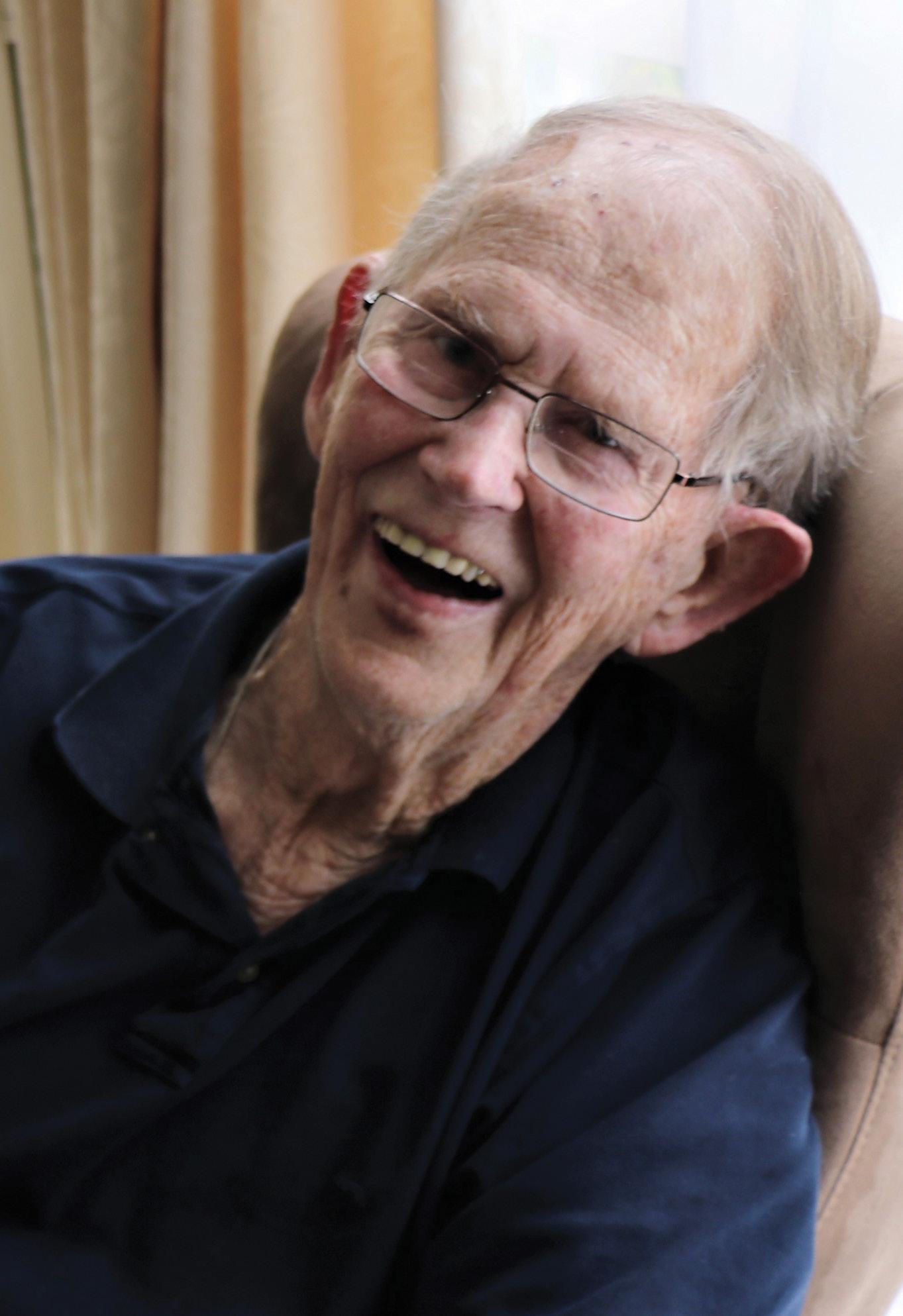
Bruce was born 30th December 1931 and raised in New Plymouth. He was conscripted at 18, and this was his introduction to a long and distinguished career in the New Zealand Army.
After his three months training, he decided to leave his job as a newspaper reporter and joined the army at 20.
During that time, he was involved in three campaigns:
The Malayan Emergency – a communist uprising which he describes as the “British Vietnam” 1948 to 1960.
After World War II, the British, who had quietly supported and trained the Chinese communists to fight the Japanese, refused to let them become leaders. The communists retrieved their weapons hidden in the jungle, formed a guerrilla army and shot some British rubber plantation managers, which created a rebellion.
Britain had a lot of losses but gradually forced the communists out of the towns. The British had a lot of power. They were not only the army, they were the government.
At times the New Zealanders would be in the jungle for two or three months. The Kiwis were expert in the jungle and were desperately quiet, often using sign language. This unnerved the communists.
Posted to Borneo in the 1960s – when the British were withdrawing from Borneo, Bruce fought against the Indonesians who didn’t like the idea that Borneo should be joined (with Singapore) to Malaya, to form the new state of Malaysia. Bruce was in New Zealand Special Air Service (NZSAS) then.
He was a young married man when he went to Borneo and his wife was due to have a baby. He was in Borneo when the baby was born in New Zealand. He was nearly killed in Borneo, and he realised how hard that could have been for her.
Bruce and his family subsequently went to Singapore in the early 1970s for a two-year posting and this time his family was with him.
During this time, he was sent to Vietnam. He was 40 then, so he was in Australian Headquarters in Nui Dat, Phuc Toi Province east of Saigon.
“We were aware a lot of people did not want us there; but then a lot of people did. We were also aware there was good reason for us to be there. We were also conscious that our government didn’t really want us there but were forced to send us there!”
As a regular soldier you don’t get to choose your wars. When the soldiers got back, a lot of New Zealanders didn’t like them for having been there. “They should have been booing the government, not us!”
Bruce started as a private and went through every rank to finally become a major. He was awarded an MBE (Member of the British Empire) after 30 years’ service.
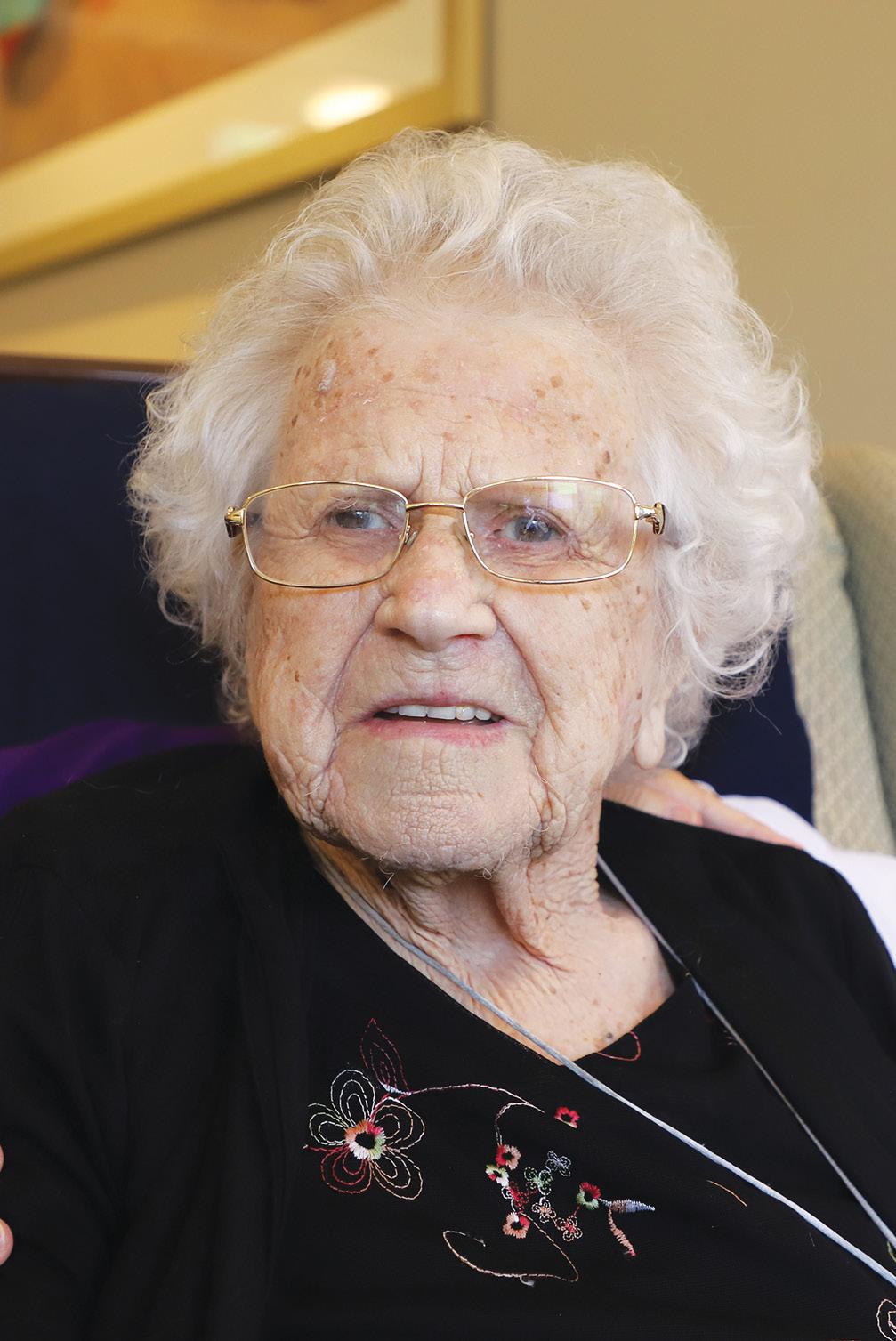
The war years for Catherine Brown were a far cry from her remote upbringing in the Shetland Islands but nothing seemed to faze the young nurse, dubbed ‘The Mighty Atom’ by her colleagues due to her short stature and strong work ethic.
Born on 31st March 1917, Catherine started her nursing training at Lincoln County Hospital in Lincolnshire before moving to Manchester to train as a midwife, which is when war broke out.
She volunteered to join the QAs (Queen Alexandra Imperial Military Nursing Service) and left by convoy from Glasgow.
“I can remember sailing down the Clyde and the terrible noise of hammering in the port as it was wartime and they were building as many ships as possible, because they were getting torpedoed.”
The nurses were diverted to a site not far from Cairo to set up tent hospitals in the desert.
Until a desalination facility could be established, they were rationed to just a pint of water a day for washing themselves, their stockings and veils.
Catherine was a hospital sister in the theatre hospital, nursing around 600 men. Injuries were typically shrapnel wounds, with many needing operations on their eyes or amputations.
The nurses were doing things that the doctors would normally do because there weren’t enough doctors, and Catherine completed an eye operation.
“It was a very tough time and we worked really hard. I have tried to blot out these memories.”
Catherine says doing the job required at the time was always the priority. “You just had to get on with it.”
There were some lighter moments, when Catherine would do the tourist thing with a group of friends or a boyfriend.
She tells of ‘dancing in the streets of Damascus’ and riding a camel near the pyramids, or visiting the famous Shepheard’s Hotel in Cairo.
From Egypt, Catherine was sent to Malta where she enjoyed the relative luxury of living and working in buildings rather than tents.
She was in Malta when it was razed to the ground and people were forced to live in caves.
After four and a half years, she went back to England and worked in an army hospital in Oxford until the end of the war.
With her great experience and obvious intelligence, friends suggested she train as a doctor at the Royal Free Hospital in London, but she never did.
At a family wedding she met up again with fellow islander Peter Brown, marrying him in Edinburgh in 1947 and then working as a nurse in a factory.
Two daughters followed, first Susan then seven years later Julia and the family emigrated to Australia before moving to New Zealand.
Catherine eventually worked as matron in a girls’ hostel and retired to Nelson in 1981.
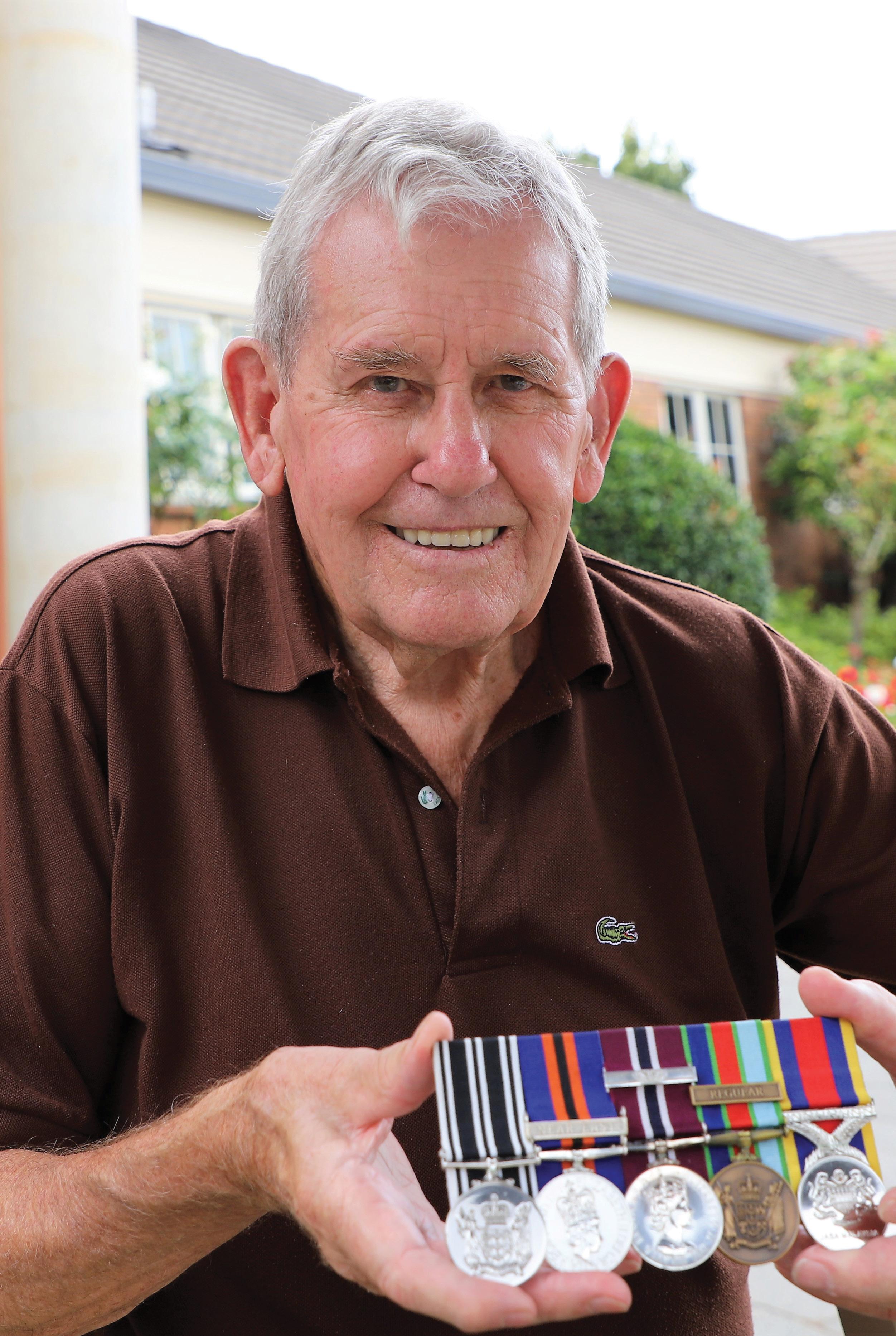
The course was set for Peter’s 11-year career in the Royal New Zealand Navy after his cousin went on the Coronation Cruise in 1953.
“I decided ‘that’s me, I’m out of here!’” says Peter, who being born in October 1938, was only 15 years and four months when he signed up.
The eldest of five growing up in the tiny settlement of Sanson in the Manawatu and schooling at Palmerston North High School, Peter relished the chance to explore the world.
His first major posting was to Malaysia and Singapore on HMZS Black Prince in 1955 during the Malaya Emergency, but greater tension was to follow.
After being sent to the UK on HMNZS Bellona to bring back the HMNZS Royalist from Plymouth, Peter left England on 8 July 1956 travelling Malta to join up with the Mediterranean fleet.
“That’s when we got caught up with Operation Musketeer, known as the Suez crisis.”
Peter was in Naples, Italy when the captain received word they had to depart immediately, and the sirens were sounded to call the crew on shore back in.
“We were oblivious to what was happening because you had no access to the news back then.”
They soon realised they were in the middle of a serious situation however as the world’s superpowers tussled over rights of access to the important link between the Mediterranean Sea and Indian Ocean, and a very tense 10 days ensued.
“Even in the downtime we were on edge, and it would be action stations at 4am because when the light’s starting to get up it’s a good time for anyone to attack.”
The ship was finally released to return home in November 1956, travelling along the western side of Africa as the canal was still blocked, arriving back on 20 December, 14 months after they’d left.
His subsequent years included a return trip to Singapore in 1961 where he had a taste of jungle warfare on an exchange with 2 Battalion.
“We were training in the jungle then out in the bush, which was exhausting but luckily I did physical training every day and I’d run on the decks when we were alongside.”
Much of his remaining time in the navy involved being part of the admin team at the Tamaki training depot and the naval communications station HMNZS Irirangi at Waiouru until his term expired in October 1964.
Then, love came calling, and Peter left in order to marry Pamela.
“I always said I’d marry a farmer’s girl – and we’re still together!”
Peter gives back to the community as a life member of the Katikati RSA and is proud to play an active part in the Hilda Ross Anzac Day commemorations where he reflects on former colleagues.

George had a harder start in life than most, being a foundling baby in Christchurch, born in March 1932. His first few years were spent in an orphanage in Ferry Road before he was fostered out to the Roberts family.
He remembers moving up to Auckland in primer four and going to Albany Primary and Northcote Intermediate.
Like many children of that era, George left school at 14 and went to work at Stotts Butchers.
After the war, compulsory military training (CMT) was reintroduced and after turning 18, George was eligible for the first intake in 1950.
While the training was just a matter of weeks, the impact it had on his life was far-reaching.
He initially returned to the butchers but later did another six weeks training and joined the territorial army where he remained an active member for many years.
It was while he was with the 9th Coast Regiment of the Coast Artillery that he met his wife Hazel.
He later worked as a firefighter and was based out of various Auckland stations including Parnell, Auckland, Takapuna, and East Coast Bays.
When CMT was stopped in 1972 George was one of those keen to see it reintroduced because of the skills it gave him in life.
He believed there were great benefits including confidence and discipline that could be instilled in young men who may have had a similar rough start in life to him, with the ultimate hope that would reduce the rising numbers in youth crime.
George and Hazel married in 1954 later having two children, Gaylene and Gavin.
Hazel started driving school buses which eventually led to the couple buying into a bus business which later took them north to Whangarei.
At one point they had a fleet of 35 of Whangarei’s Blue Buses with George managing the business and Hazel still driving.
In 1996 George was awarded a Queen’s Service Medal for public services.
He wears that medal proudly alongside those he received for his CMT, his firefighting and his territorial army service and is always actively involved in village commemorations for Anzac Day.

While serving in Vietnam, Lieutenant Gordon James Keelty was sweltering in jungle patrols, and taking helicopter trips across enemy lines. He is still thankful he and his battalion unit survived.
Gordon rose to the rank of Lieutenant as part of the Royal New Zealand Infantry Regiment, having trained at Burnham, south of Christchurch. He served in Vietnam in 1969, having flown to Malaysia in 1967.
He motored down to an operations base at Nui Dat, to the east of Saigon, and also close to Long Tan, which had been the location of a famous battle in 1966 involving Australian troops.
He and other troops were there to make forays into Vietcong territory setting up in camp in their hoochie tents. Firefights ensued.
“In Vietnam, for example, you’d be out on a patrol that would last 28 days. You didn’t shower in that time of course. You had to be particularly careful operating in the bush. You had to be careful of your hygiene...
“Then you had two sets of clothes which were just denim and light denim, so you’d wear one set during the day, and you’d be sweating in the heat of Malaysia, and you had another set in your pack.
“In the night you’d get into your dry clothes to sleep in and then get up in the morning and get back in the wet clothes.”
After he left the combat zone, two good friends he served with were killed by enemy fire.
Gordon says rendezvous times, for example for water drop offs, were dangerous. “Of course, helicopters coming in was a sure sign to the enemy of where you were... you’d get off out of that area as quick as you could.”
Anzac battalion members stationed in Niu Dat lived in tough conditions. New Zealand had two companies as part of the forces, he says. “They were large tents we lived in, sandbags round the outside... That was in the middle of an old rubber type plantation, that was quite different.”
He has images in his mind of his arrival into Vietnam. “We flew into Saigon from Singapore, and I was in a Bristol freighter, which was an old bucket of bolts.
“But they were an old aircraft, that was a bit of a source of amazement to the Americans, that they saw these planes and thought they can’t possibly be still flying because they were that old.”
It was overseas in September 1968, at Terendak Camp, he says he met his lovely wife Marjorie. She’d come from England to teach in the British army secondary school.
Gordon stayed in the forces until the early 1980s, retiring as a Major, and had various other periods of service including being stationed in Singapore from 1976 to 1978.

Neale Lester Flinn served in the Army in the Second New Zealand Expeditionary Force embarking for service in Europe from Wellington near the start of the war.
With the service number WWII617264, Neale entered the service not too long after England on September 3, 1939 declared war on Germany. He was only just 17 and had been working as a grocer’s assistant. At the age of 16 he’d been an army cadet.
Initially, upon signing up he and others marched from Auckland to the army camp of Waiouru to set up as part of a tent city. In the initial war years, he was an instructor, already having two older brothers serving overseas.
But in 1943, when there was no-one left to train, Neale applied to join the transport division of the Second New Zealand Expeditionary Force. Embarkations took place from January 1, 1944, to March 31, 1944.
He shipped out from New Zealand, disembarked, and spent a few months in Egypt. He then went on to Italy, where he served in the expeditionary force’s transport arm for the remainder of the war. He learnt Italian and his responsibilities covered everything from tanks to field ambulances.
Following the end of hostilities with Germany he stayed on in Europe, as a single man, for another year or so to be part of the reconstruction team.
He rose to the rank of corporal during his service in the transport division. During the reconstruction it was not all graft. Neale was blessed with both a good voice, and the coordination to be a dancer. That set him up well to be part of any social occasion. He remained a dancer until the age of 85.
He returned to New Zealand and married Nancy in 1950. Nancy was from Blenheim and the couple met on a hop farm located near Motueka. They then went to work, briefly, helping her brother at Shannon Station, a sheep and beef operation station near Wairoa in Hawke’s Bay.
The next move for the young couple was to Kaitaia, where they waited on the chance of a ‘rehab’ farm – eventually taking on a property in Waikiekie, halfway between Dargaville and Whangarei.
The Government's proposals for rehabilitation of ex-servicemen of the Second World War included settlement on the land. This was done by a Land Settlement Board.
Neale used his knowledge of someone having brought up on a farm, plus a year of farm management training at Massey University. Life on the new land was definitely not easy.
“The only reason we lasted was Dad had some sort of demolition training qualification etc from the army, which he used through the winter months – May through to August... he worked as a blaster at the local limestone quarry.”

Jack was born in the small Central Otago town of Naseby in 1925 and grew up in nearby Ranfurly.
Living in an inland part of the South Island and having never left Otago, Jack had hardly ever seen a ship before and certainly had never been in a boat of any sort! At 18 he volunteered for the navy
His training began at Devonport Naval Base, then on to nearby Motuihe Island, Lyttleton, and Auckland.
While finishing training in Auckland the HMS Gambia arrived.
“It was only about 8500 tonnes, but it seemed enormous to me. I had joined the navy and I wanted to go to sea,” said Jack.
Fortunately for Jack, a telegraphist had taken ill, and Jack joined the ship which headed to join the British Pacific Fleet forming in Sydney. It was his first time on a ship. “I thought this was marvellous,” he recalls.
“Sailing into Sydney Harbour I couldn’t believe the sight.”
They headed to the Admiralty Islands where there was a huge American naval base on Manus Island and then joined the American fleet, south of Japan just before they attacked Okinawa.
The 82-day battle began on April 1st and continued until June 22nd, 1945. During that time, they never left the ship and supplies were delivered about every two weeks.
They were the fleet guides escorting their aircraft carriers. Their role was to supress Japanese air activity. They were bombing the Japanese airfields that kamikaze pilots were using.
“Eventually the Americans took over Okinawa and we all moved up.
“On the 6th August we detached from the main fleet to bombard some airstrips on Formosa (Taiwan).
“That day they dropped the first atomic bomb on Hiroshima. We thought the war would be over, but it wasn’t.
“On the 15th August the Japanese surrendered. We were still just off the coast. I was on the bridge when I heard all this gunfire – but the war was over! I went outside, and a kamikaze was coming straight at us from the stern, being chased by an American fighter who shot it.
The Japanese plane hit the water about 50 meters in front of us and blew up.
“I have often wondered if this one guy even knew the war was over, or was he determined to give his life to the Emperor?
“About a week later we sailed into Sagami Wan Bay near Tokyo Bay.
After the signing the Gambia was detached and sent to the inland sea south of Tokyo. There were Japanese prisoner of war (POW) camps there.
“We went to help to get POWs onto hospital ships and send telegrams back, giving the names of the blokes who were rescued.”
“We never learn, and you never forget it.”
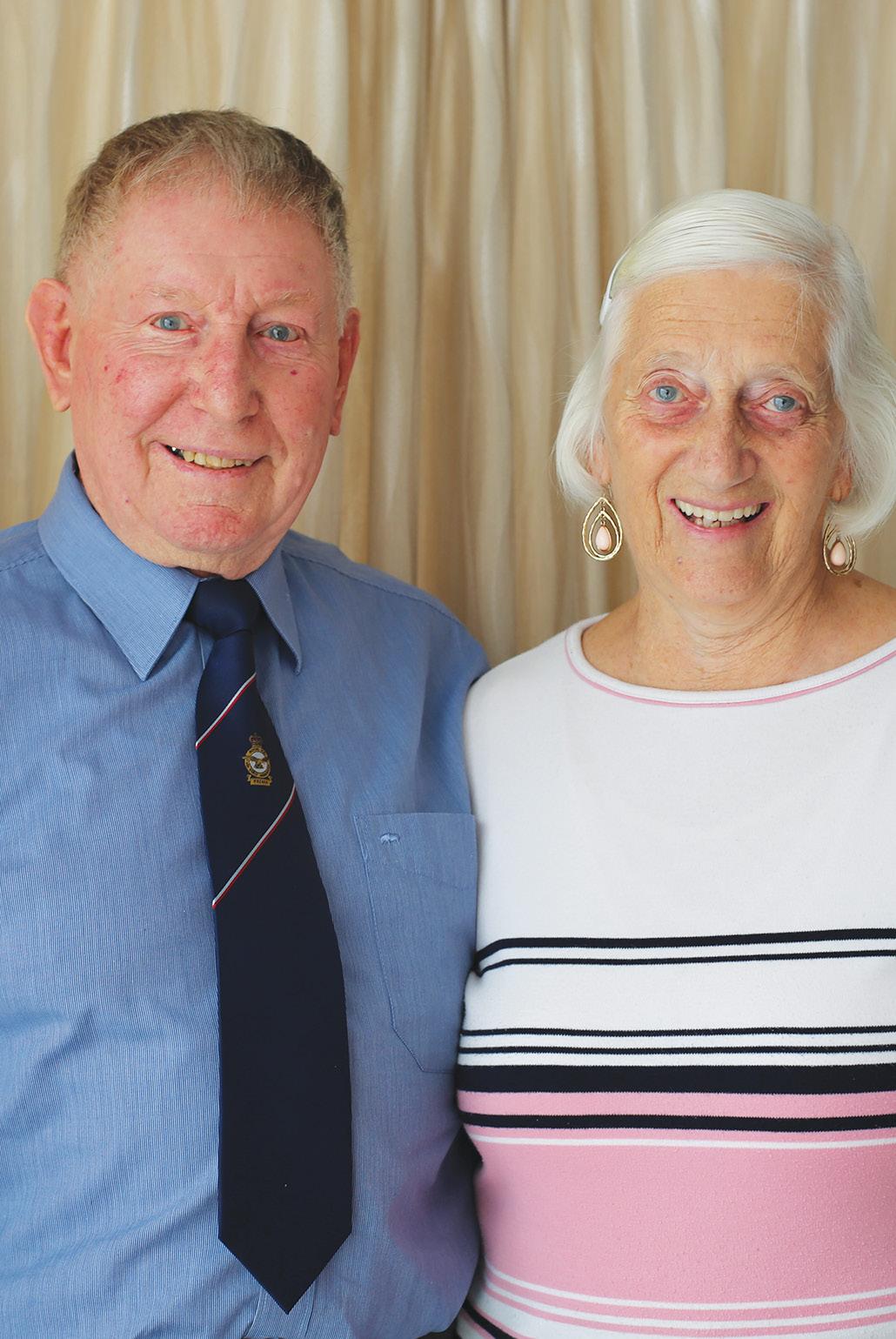
Together Murray and Ann Evans spent a combined 28 years of service with the Royal New Zealand Air Force and New Zealand Army.
Murray joined the RNZAF in January 1958, as a 16-year-old ‘boy entrant’, while wife Ann joined the Air Force in 1968. Eventually, their service brought them together while they were both at the RNZAF Station Te Rapa.
Murray says joining straight out of high school meant he really didn't know what hit him. After his 18 months of initial recruit training, he was posted to do his first 12 months of service in Wigram, Christchurch.
Then he was transferred up to No 1 Stores Depot, Te Rapa in Hamilton, which held all the spare parts for the air force aircraft. “We were commonly known as 'grocers'; our trade was equipment and supply,” he says.
Ann started her service at Wigram in Christchurch, having lived in Papakura in Auckland.
“A friend talked me into joining the air force, so I went in and joined and went down to Wigram in Christchurch for my recruit training, and then was transferred to ASDA (Aeronautical Supply Depot Auckland) at Hobsonville,” Ann says.
“They then transferred me down to Porirua in Wellington as the air force was operating a new computer mainframe system, which was bigger than our house. As a data processor, I operated the NCR33 accounting machine.”
In 1970, Murray was transferred to RNZAF Air Movements at Wellington Airport for four years in charge of all military aircraft flying in and out of Wellington.
“The first two weeks I was there, one of our Bristol Freighter aircraft came in on its regular run,” Murray remembers.
“The freighter missed the turn off to the hangar, and was cleared to ‘backtrack’.
“Unfortunately, his main landing gear found a soft spot where recently new runway lights had been installed. This resulted in the airport being closed for a short while the aircraft was ‘cleared’.”
In the early 70s Ann was transferred to Woodbourne, Blenheim, to run the accounting machines. By this time, she’d been promoted to Sergeant and was also in charge of the air-women's barracks as well as the machine room.
To visit Murray in Wellington, the base aircraft used to fly from Blenheim over to Wellington. If there was a space Ann would hop on to visit Murray in Wellington for the weekend.
“I left the Air Force in 1971 and came over to Wellington and worked there until Murray finished his term at Air Movements. We were married in ‘74 and had two children, both of which now live in Australia,” Ann says.
Murray remembers that in 1972 while at Air Movements, the air force was asked to help with a shipment of pedigree bulls that had arrived from France and were required to go into quarantine on Somes Island. The No. 3 Squadron Iroquois helicopters lifted about 50 bulls off the ship that they were on and put them on the island. This was called ‘Operation Bull Ship’.
Murray says in the mid 70s he was transferred to an operational role to support aircraft operating overseas. These included Bristol Freighters, the C130 Hercules from 40 Squadron, and 42 Squadron which included Douglas DC3s and Hawker Siddeley Andover aircraft. He was also involved with ‘air drop’ support. One heavy load flight was a 39,000 ton generator dropped into Rarotonga.
He and the team ended up going some interesting places. “We went to Australia, Kathmandu, Burma, the UK, most of the Pacific Islands, Papua New Guinea, Hawaii, the Azores, Antarctica, Singapore, Bangladesh, India,” Murray says.
“Our team flew to assist the Squadron whenever when they were away overseas on operational exercises. The main one being 75 Squadron A4 Skyhawks to Singapore and Malaysia.
“The C130’s would fly with them to Singapore, and Malaysia with all the squadron support equipment, come home and then 8-10 weeks later we'd recover them back to NZ.”
Murray made two trips to Kathmandu in support of Sir Edmund Hillary and the school and hospital trust he set up there.
“There were also relief support flights following cyclone and earthquake events around the Pacific islands, which also included Cyclone Tracey in Darwin 1974...,” he says.
“Our team played a big part with Operation Deep Freeze support in both Antarctica and Christchurch. This included the movement of freight and personnel to and from McMurdo and around the continent.”
Some of Murray’s roles included loadmaster support with the US Navy Hercules to outlying scientific locations and South Pole station.
During this time he was transferred back to RNZAF Base Auckland at Whenuapai as a warrant officer in charge of air movements. Murray says he stayed in the service until the end of 1979, to complete 22 years of RNZAF service. “Six months later, I was asked if I wanted to enlist in the NZ Army. They had just completed restructuring the service corps and because I'd just come off operational movements logistics support – they were interested in my experience,” he says.
“The next thing I knew, I was back in a green uniform, and they transferred me to Christchurch... which again saw me involved in Antarctic support.”
Following a 25-year service career, Murray took on a second career of 27 years in the oil and gas industry. He finally retired in 2010.
“We were married in ‘74 and had two children, both of which now live in Australia,”
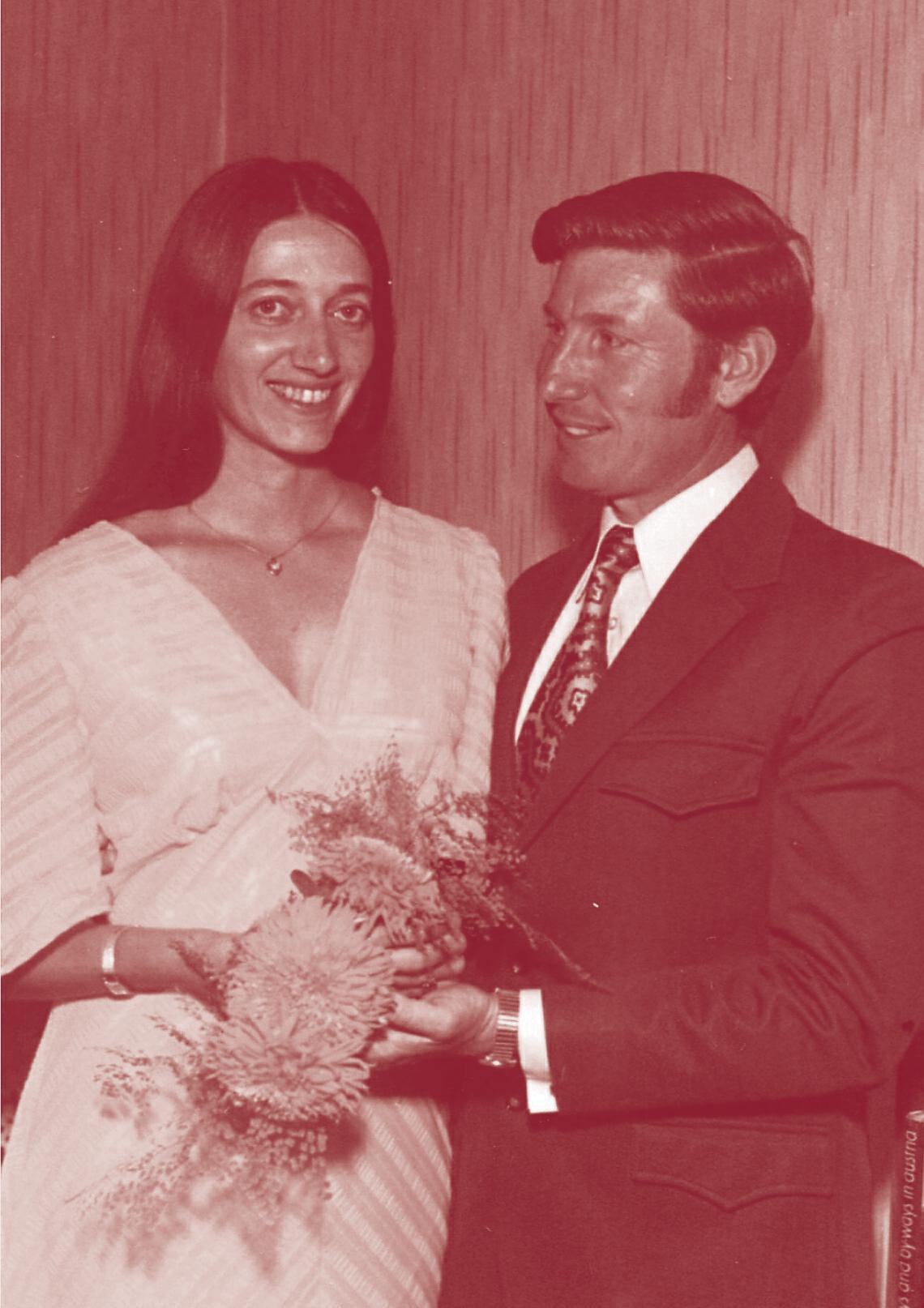 Photo courtesy of Murray and Ann Evans
Photo courtesy of Murray and Ann Evans

Ted Grace joined the army as a cadet in 1955. His chosen Corps was Armour. In 1957 he volunteered for a tour with 1 New Zealand regiment, an infantry battalion established to join 28 Commonwealth Brigade in operations against the Malaya Communist Party.
In Malaya Ted was posted to an infantry platoon, the main task of which was jungle patrolling.
“Patrols were difficult. The enemy at that time were at home in the jungle and we had to be very disciplined in our operations,” says Ted.
Patrols lasted from about 10 days to several weeks. Long patrols were resupplied by airdrop.
During a deep jungle patrol of six weeks Ted’s platoon came across a tiny village of Orang Asli, the indigenous people of the area. These folk have a history going back thousands of years. At times the platoon was able to provide security for them when they went hunting – with blowpipes and poisoned darts!
After 13 months in Malaya Ted returned to New Zealand, re-joined his Corps and was posted to various units around the country. He met and married Avon in 1965 and their son was born in 1969.
In late 1970 Ted was posted to 1 New Zealand Army Training Team in Vietnam. He and eleven other senior non-commissioned officers formed the training element of the Team.
In Vietnam the team underwent orientation training with the US Army. This covered US and enemy weapons, organisations and tactics and a “crash course” in the Vietnamese language.
After this the 12 New Zealanders were, in pairs, attached to 4-man US Army units who lived in Vietnamese hamlets and trained and operated with local troops.
“This attachment was particularly stressful. One simply did not know who the enemy was until the shooting started. Adding to the stress was witnessing the dreadful effect enemy attacks had on women and children,” said Ted.
Soon after arriving in Vietnam Ted had received a telegram to say Avon was expecting a “blessed event” which was Post Office telegram code for “I am pregnant.”
Their daughter was born while Ted was on tour, which was tough for Avon particularly as Ted able to make only two phone calls in the entire 13 months he was away in Vietnam. No cell phones, PC’s or Zoom. Snail mail only!
When Ted returned to New Zealand, anti-war sentiment was prevalent in the country, and Vietnam men and women veterans were not welcomed home as previous war veterans had been. “That left a bitter, long-lasting effect on those who made the sacrifice.”
And Ted says, “There are no doubt many stories of valour amongst those wives, husbands and children left behind who also made the sacrifice, and survived.”
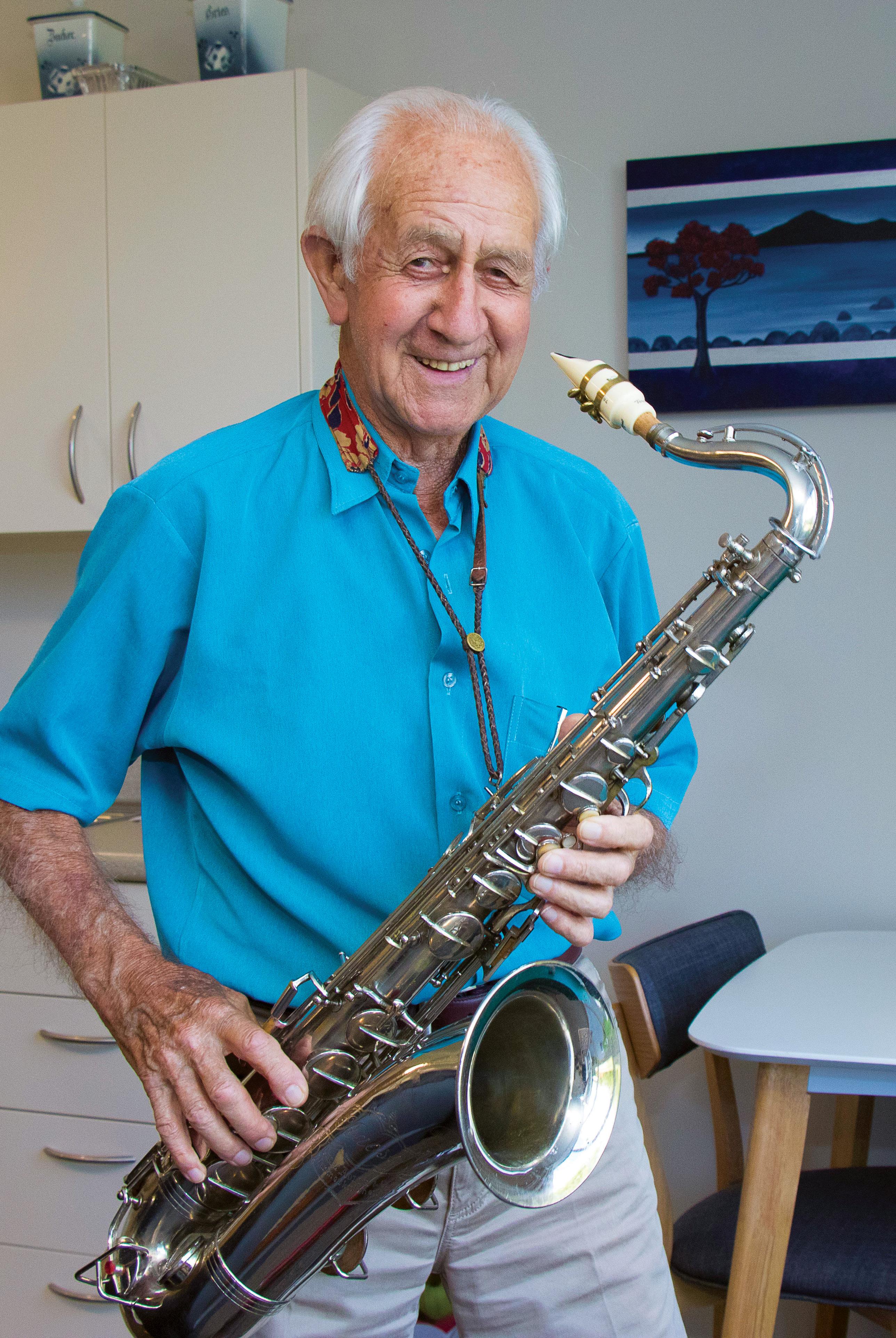
Peter grew up in a remote part of New Zealand called Cape Turnagain, Herbertville on the East Coast of the North Island.
He was born on the 4th April 1925 and celebrated his 21st birthday on his way to Japan in 1946.
“I signed up just before the end of the war. I was excited after the army training,” he said, “and I was old enough to join up for the occupation force in Japan.”
He sailed to Japan on the troopship, SS Empire Pride and was there as part of J-Force for about 18 months. “I was a Jeep driver for our commanding officer, so I got to drive all over different parts of Japan.” There he witnessed the remains of the cities of Hiroshima and Nagasaki after the atomic bombing and recalled it as, “just flat”.
Part of their job was peacekeeping but also to check for hidden stashes of munitions. Many Japanese people did not want to surrender and there was always the chance someone might retaliate.
It was such a different culture for someone who had never left New Zealand, but Peter picked up some of the language and can still count to 10 in Japanese!
“We made good friendships.”
On return to New Zealand, Peter attended a carpentry course offered by the army and completed an apprenticeship to become a builder. “I chose Masterton,” he said. He is a firm believer in the benefits and discipline of military training for young men and women today.
A keen musician, Peter bought a tenor saxophone for £25 while he was in Japan and he still plays it to this day. He belongs to a band called ‘Top Hat’ and he sometimes entertains the village residents.
Peter commemorates Anzac Day. He had two older brothers who went to World War II and he said it brings back a lot of memories.
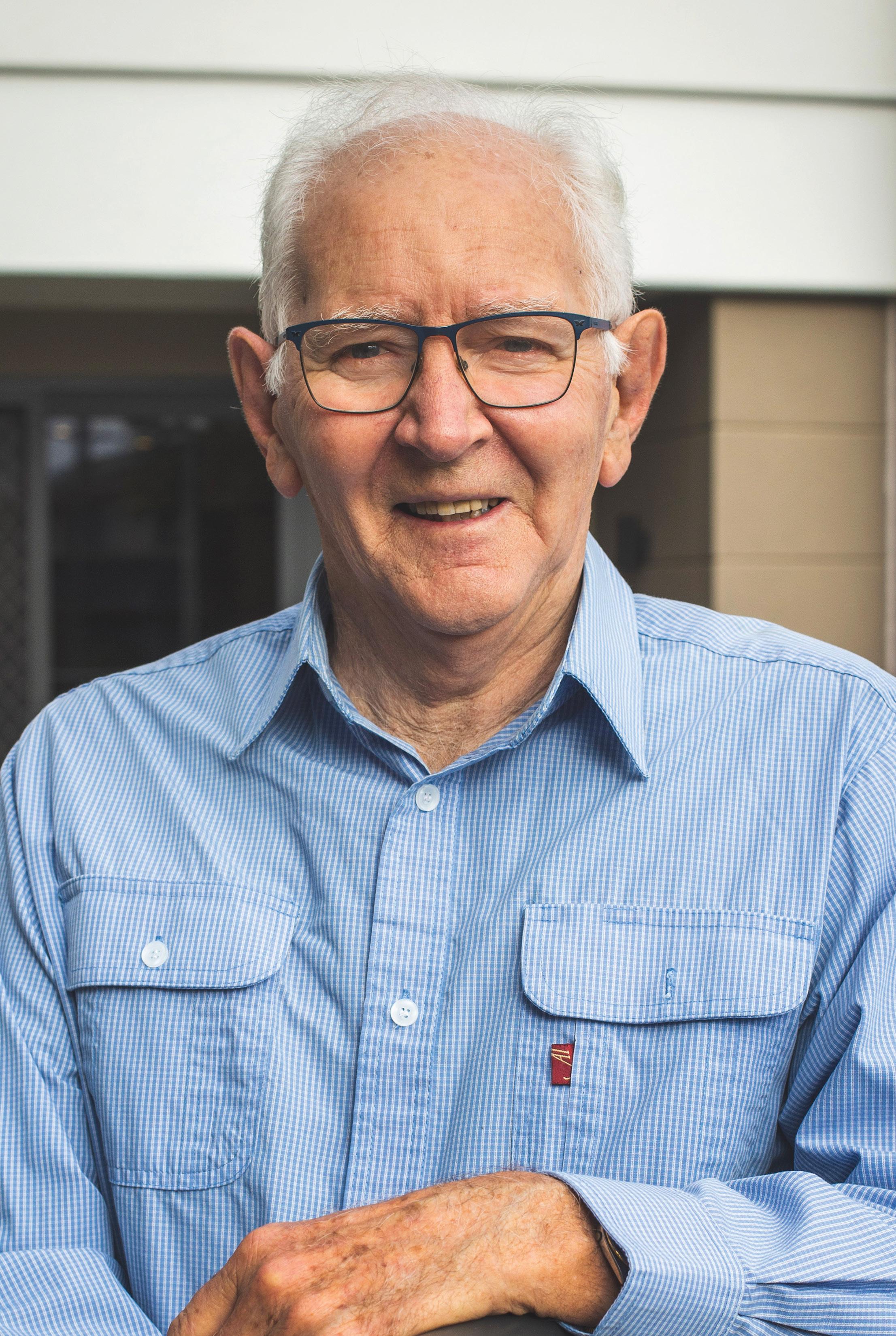
Anzac Day has always been an easy day for Howard (Clem) Robinson to remember, not least because it is his birthday. Clem was born on 25th April 1938.
Clem’s father, also named Clem Robinson, fought in the trenches of France during the First World War, and while the Robinson family avoided fighting in the Second World War, Clem was called for national service when he was 18.
“I passed the medical, so there was no getting out of it,” Clem said.
“I can’t say that military life appealed to me all that much as an 18-year-old, it was not really my cup of tea, but I must admit, it prepared me for a lot of things later in life.”
Clem completed his national service training at Campbell Barracks in Swanbourne, in Perth, Western Australia, during the summer break between his undergraduate and postgraduate Biochemistry studies at the University of Western Australia.
“After that basic training I joined the Western Australia University Regiment of the Citizen’s Military Forces,” Clem said.
“I was in it for the next three years, which was good fun, we went on annual camps and I’ve got lots of happy memories of those.
“We were fortunate that we did several weeks of basic training at Kingston Barracks on Rottnest Island [those Barracks are now a holiday resort]. We spent a good few weeks there training jungle warfare in what were not jungle conditions.”
But there were also challenging aspects of the training, including using equipment already well-used in two world wars.
“In one exercise we had to run and stab our bayonets into a big bag full of straw and I thought ‘can I really imagine doing this to another human being?’
“That was not a happy moment.
“I thought this was pretty horrifying.”
In 1960 Clem was awarded a Hackett scholarship from the University of Western Australia which enabled him to undertake further study at the University of Oxford.
“I went off to England and that cut my military training short by a couple of months,” he said.
“But I was very lucky and privileged to also meet my wife Ida there (Oxford).
“Being there was certainly a world changing experience for me.”
His time in the national service and Citizen’s Military Forces was formative.
“Whether it be military, or some other form of national service, I think the training is probably beneficial for many young people, Clem said.
“It was certainly good for me.
“I look back on it now with some fondness.”
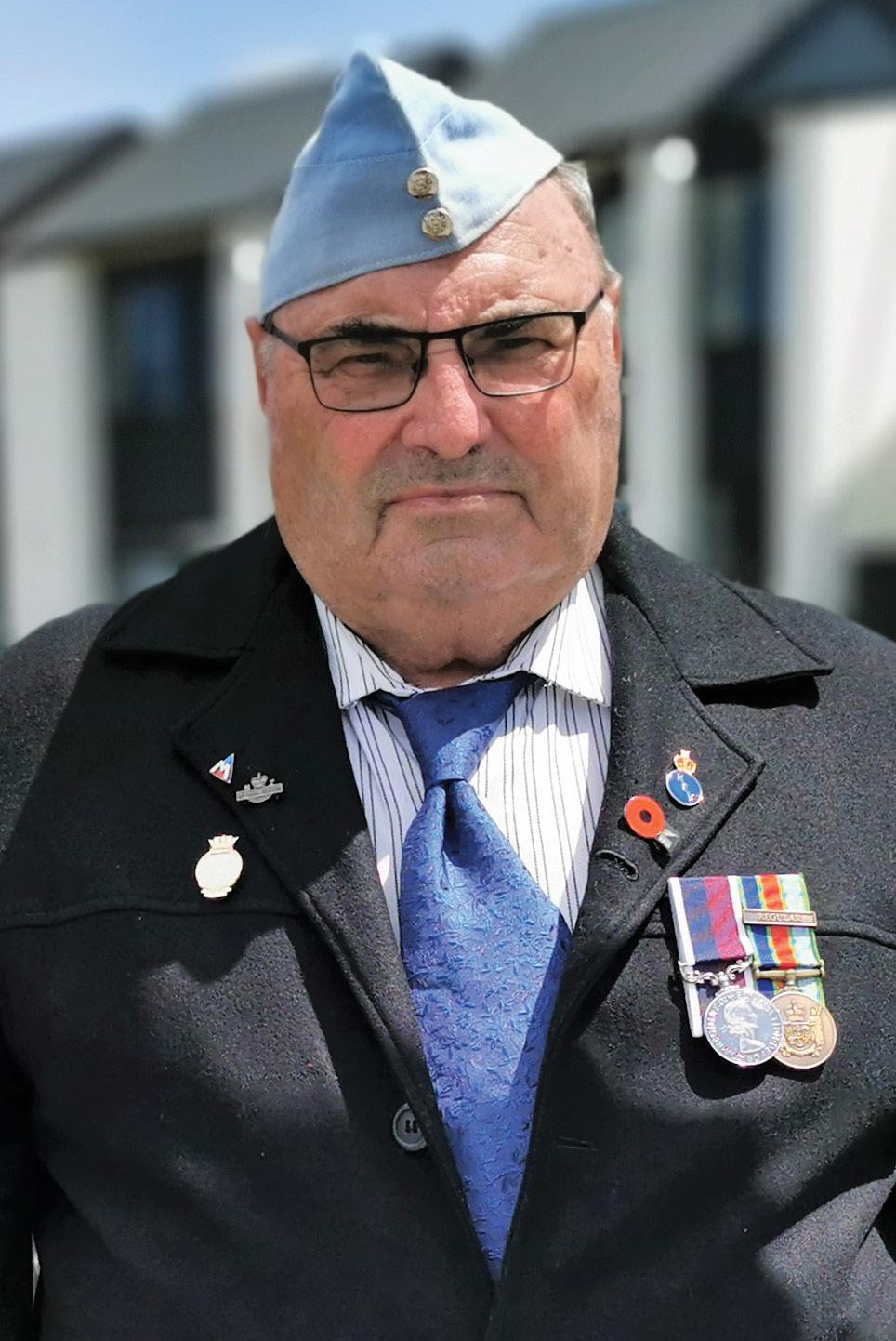
While many associate the military with war and fighting, for Don Bennington, a 25-year career in the Royal New Zealand Air Force was an overwhelmingly life-affirming experience.
“I felt that we New Zealanders were not the aggressors and in fact most of my time in the service our time was spent preserving life, in search and rescue missions, assisting with hurricane relief in the Islands, and, during my time on the HMNZS Canterbury, to be available to rescue citizens off the beach in Fiji during Colonel Rabuka’s coup.”
Settling on the air force in 1965 as the ideal way to learn a trade Don started out at Wigram followed by Hobsonville for basic engineering training with an eye on becoming an aircraft technician. He worked on Vampire Jets, DC3s, Harvards, Devons, Briston Freighters, Orions, Iroquois and Wasps all around the South Pacific and Asia.
While a lot of his work involved search and rescue and emergency relief missions, his most hair-raising experience was in New Zealand, with a mayday landing after the Iroquois helicopter he was in suddenly stalled while flying over the Auckland Harbour Bridge!
“As we were coming down, we thought it would be best to land at Hobsonville, and we made it to the end of the airfield. As we hit the ground the ambulance and fire engine were on the scene, it was pretty dramatic!”
One highlight during his 2 and a 1/2 year posting in Singapore was being part of the crew flying over the South China Sea and being asked to search for the very latest Russian submarine passing underneath.
“Standing there in the flight deck and seeing the submarine passing under the nose just 200 feet below was a tremendous feeling, realising that had this not been peace time, this was what we were all about, searching and destroying submarines.”
He finished his air force days with two years serving on HMNZS Canterbury from 1985-87 and then as Warrant Officer at #1 Technical Training School before retiring in 1989.
Since retirement he has been an active member in the Warrant Officer and Senior Non-Commissioned Officers’ Mess, Hobsonville Old Boys’ Committee and a member of the 3 Squadron and 5 Squadron Associations.
Don is proud to have attended Anzac Day services every year since retiring from the RNZAF.
“For me it is very important. I remember my great uncles, Alex Bennington who was killed in Gallipoli and his brother Spencer Bennington who flew Sopwith Camels in Europe but luckily returned after the war, and also my father and his brother who served in the Islands in WWII and who both returned.
“It is also a time to remember my fellow airmen and women who have since passed, including one just recently who is now buried here in Hobsonville.”
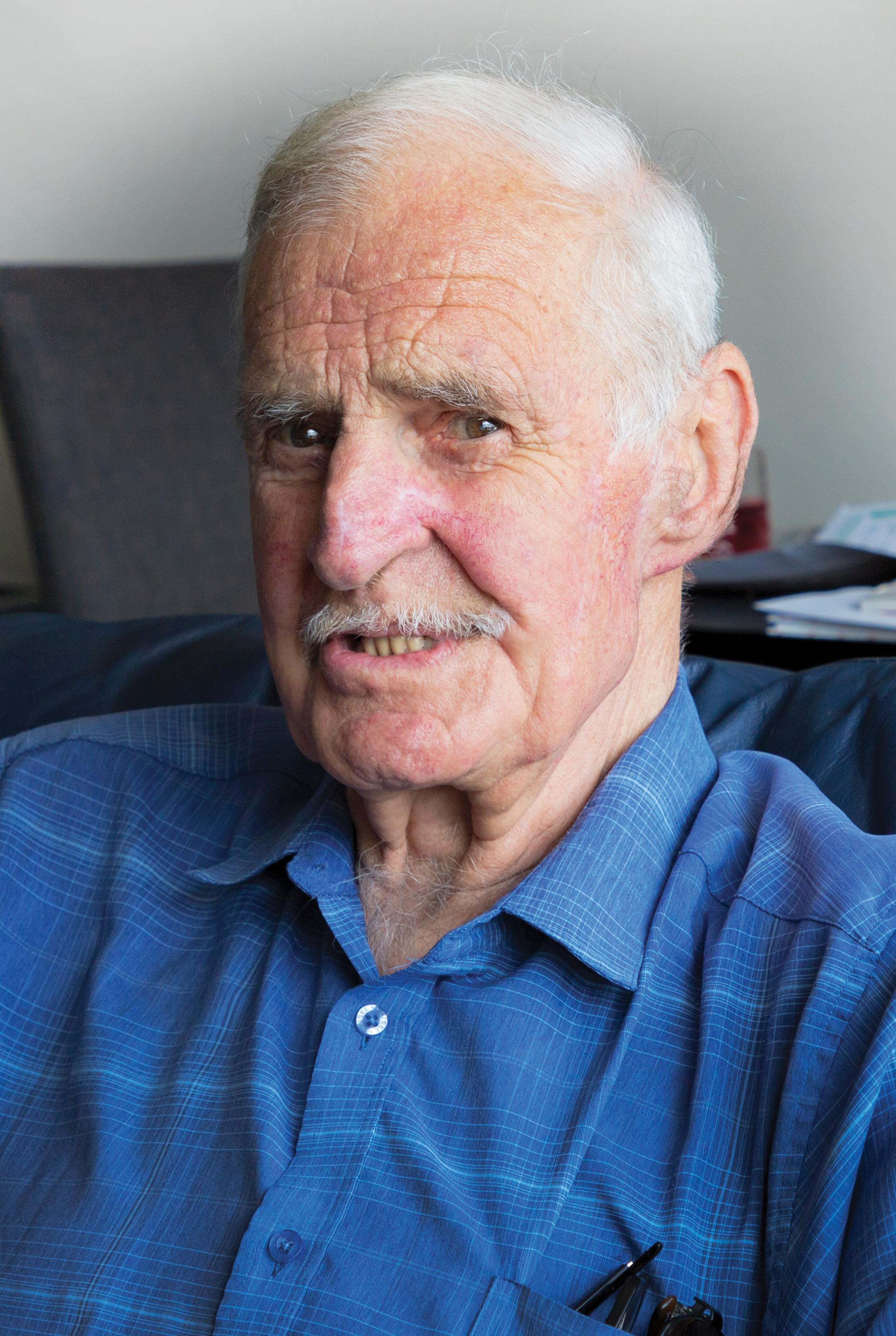
Frank was born in 1939 in Waipawa, Central Hawkes Bay and grew up in small town Ōtāne where his father had the general store, before moving to Napier when he was 12 years old.
It had always been Frank’s dream to be a pilot, but his father wasn’t keen, so Frank followed his wishes and joined the bank for 18 months.
But the dream didn’t fade and finally Frank got to join the RNZAF aged 18, training at Wigram for his pilot wings, then Ohakea for the engine conversion course and finally at Whenuapai on Bristol Freighters, graduating in 1959.
“I was involved in the Indonesia-Malaysian Confrontation outbreak on Borneo.” This was the same year New Zealand became involved in the Vietnam war.
“The Indonesians were inserting people in behind the borders and they, [the British] were worried they were trying to take over Borneo.”
This was what Frank had been trained for and he was happy to go overseas.
It was 1965 and he got engaged on a Friday.
“On the Monday the boss said to me, ‘I have a posting to Singapore in two weeks.’ I told him I had just got engaged and he ask me if I could get married in a fortnight! I got married and then left for Singapore for two years.
“I was based in Kuching. I would do two weeks there, then four weeks back in Singapore.
“It was peaceful doing sorties first thing in the morning flying Bristol Freighters with supplies to support the army on the ground. The Bristol Freighter can carry five tons.
“We used to be finished by 11am. It wasn’t a hardship.”
One aircraft was hit by machine gun fire after it accidentally crossed the border, but no crew were wounded.
“The confrontation was diplomatically resolved, and Indonesia backed down.”
Frank also flew to Korat in Thailand and was involved in the Vietnam war flying in supplies. “We were not posted there. We were there to support the Americans.
“In 1967 I returned to Wigram as an instructor for four years, then went to Ohakea Air Base flying DC3s on the VIP squadron.”
He travelled to many places including Nepal and Antarctica and in 1979 helped in the recovery after the Erebus disaster.
After 22 years Frank left the air force and joined Air NZ as a simulator instructor for 19 years, but the desire to fly was still strong.
Germany offered that opportunity and Frank trained on the Dornier 228
He spent 12 months in Papua New Guinea training pilots, then returned to Germany for three years doing simulator training on the newer Dornier 328
Frank’s extensive flying career has left him with many memories.
His eyes light up as he says, “I always wanted to fly. It was my boyhood dream that came true.”
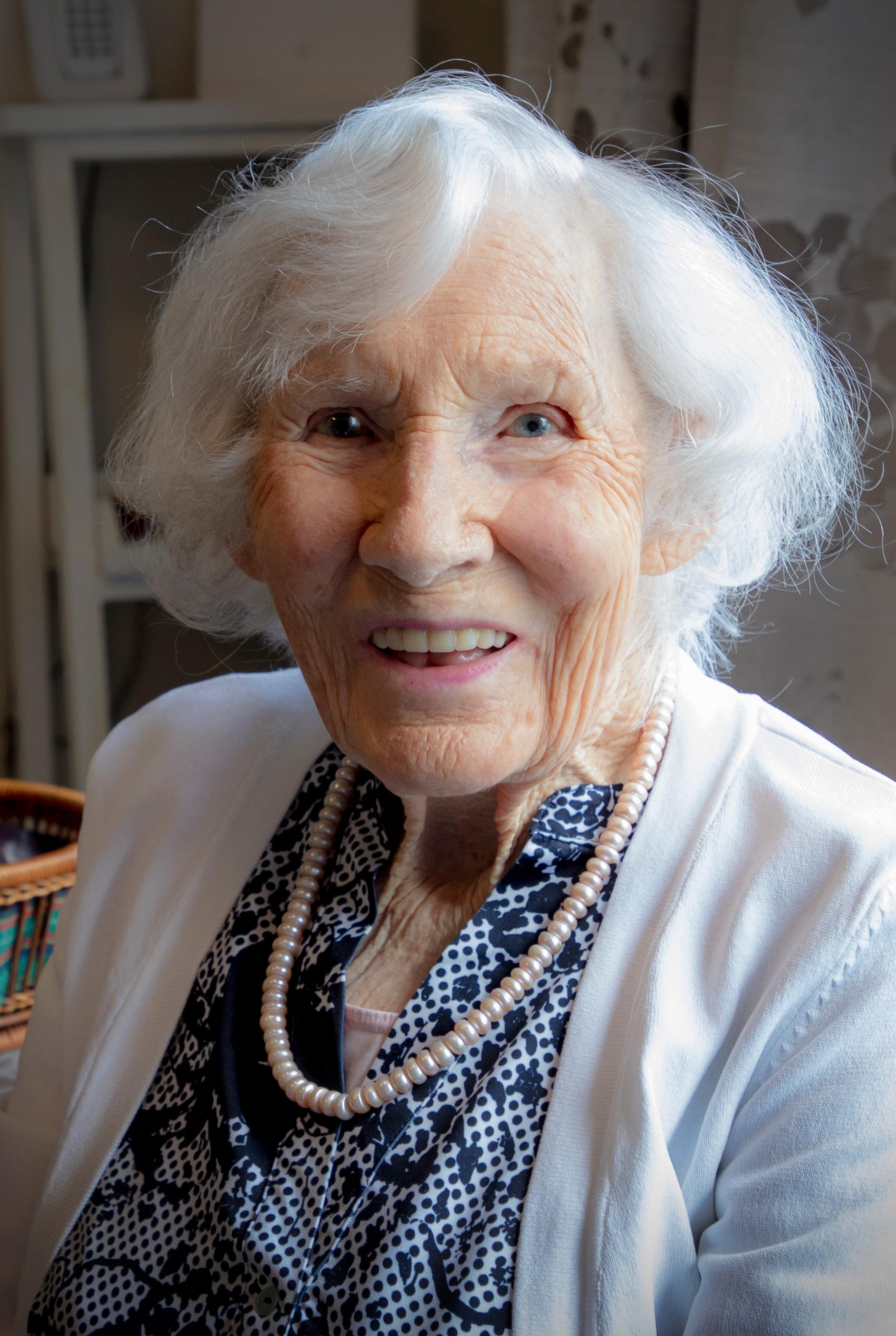
It was a snowy winter’s day in the city of dreaming spires, Oxford, England, when Kathleen (nee Reilly) Burke was born in 1924.
Years later when the war began, Kathleen was living with her parents in Tunbridge Wells, Kent.
She chose to volunteer. “There’re not many options unless you are qualified, so it was better to volunteer. I didn’t want to work as a land girl or be sent to a factory.
“I joined up in the WAAF as an aircraftwoman, second class. I trained for two months at Morecambe learning to march and salute, and then I was sent to RAF St Athan, in South Wales. I hated it there, so I put my hand up when they asked for volunteers to re-muster as teleprinter operators.”
Following that she trained at RAF Cranwell in Lincolnshire. “We worked six-hour shifts learning to touch-type on a teleprinter with our hands covered.
“We had to type 25 words per minute. You got up in the morning had a big mug of tea and a piece bread with margarine. Then off to work, sitting there from 6am – 12:30pm.
“We lived in barracks – 12 of us to a room and slept on bunks. Each bunk had three ‘biscuits’ we called them, [like a divan cushion]. We had inspections. Biscuits were stacked, folded sheet next, then blanket with the pillow on top. It all had to be regimental.
“You are totally immersed in uniform. We had flat black shoes, grey stockings and service underwear we called blackouts!
“I always sent my shirt collars to get starched at the local laundry, so they didn’t curl.
“The first night my feet were frozen, so I tied knots in a jumper to keep my feet warm. You couldn’t get a hot water bottle as the rubber was needed.
“In the afternoons we studied. Teleprinting was the only secret method of sending messages. It could not be tapped as the cables were underground.
“But, once you typed it you couldn’t erase it, you could only write at the bottom ‘correct word after,’ and repeat it.
“I was in the WAAF for six years – five of them as a teleprinter operator at Abingdon in Berkshire. I made lots of friends there. We walked or hitch-hiked a lot as we only got 10 shillings a week.
“Going to a café for a cup of coffee and piece of toast and honey was a real treat. We thought that was marvellous!
“I came out of the WAAF as a LACW (Leading Aircraftwoman) with two month’s pay and I was trained, so I got a job at Cable and Wireless in London.”
But Kathleen found the 12-hour night duty too much. “Heathrow Airport was under construction in 1946 and I got a job with Civil Aviation. I stayed there till I came to New Zealand. A friend wrote and said, ‘why don’t you come out here? – You get free passage as an ex-servicewoman.’ It sounded exciting. My friend and I thought let’s give it a go – we can always come back!”

Pam Lewis was born and bred in Gisborne and is very proud of it.
“I loved growing up in Gisborne.”
Pam chose not to continue with her secondary education as she was keen to earn money so she could buy her own clothes.
She started working at the Gisborne Herald. She stayed there for five years, until the war started and then she moved to Wellington for war work.
“We volunteered because we knew we were going to be called up anyway.”
Pam went to work for the Canadian owned Ford Munitions Factory in Lower Hutt, where there was a severe shortage of female labour to help fuel the war effort.
It was one of many workplaces now employing women in jobs traditionally held by men, to free them up to serve in the armed forces.
Buses collected them to take them to work from the purpose-built women’s hostel.
“They were very good to us there. It was a huge factory and we worked much longer hours than I was used to.”
“One of my jobs was to put the fuses on to 25-pound shells,” explains Pam.
“Our work was regularly checked and if we did 10,000 and one was wrong, we had to do them all over again.
“We just got stuck into it, we were moved around testing different components. It was very noisy. I worked on a great big machine feeding bits of steel into it.
“If you worked in the powder room packing explosives into grenades you got paid a lot more money, but they had to shower and change their clothes after their shifts and their skin went yellow.
“I loved it and met new friends. It seemed such a lot of money we were earning. But I had been really frightened of the Japanese threat living on the East Coast.
“VJ Day was absolutely marvellous –everyone was on the streets.
“When the war ended, they begged us to stay on in Wellington as they were so short of office workers. We had our choice of jobs! I was enjoying it down there and I had relatives I could board with. I chose to work for Government Life, (now Tower Insurance).
“Later I transferred to Auckland but I knew I would always come back to Gisborne.”
The Ford factory assembled and filled nearly six million hand grenades and 1.2 million mortar bombs.
Women were encouraged to do their bit for the war effort and Pam agrees. “Women really came into their own after the war.”

The early death of his father in 1955 prompted Carl’s mother to enrol him in the Royal New Zealand Air Force as a Boy Entrant.
“I was underage at just 15 and the youngest of that 115-entrant draft, but she probably thought I needed the supervision,” says Carl, who was born in Gisborne and schooled in Rotorua and then at Wellington College.
After several years of training at Woodbourne, Carl served with Ohakea’s 75 Squadron as a light-alloy specialist.
“Aircraft are mostly built from Duralumin alloy which is quite difficult to work into the complex curves needed for all sorts of parts, so it’s a specialist trade.”
In the early 1960s Carl was detached with 75 Squadron in Singapore, which was operating out of Tengah Airport during the Malaya Emergency.
He spent the time there servicing Canberra bombers supporting English RAF Venom aircraft bombing terrorist targets in Malaya. Fortunately, his focus remained on the work in hand, and he never felt in danger or scared.
“Only the aircrew saw the dangerous stuff,” he says.
In fact, the biggest physical harm Carl came to was back in New Zealand when his car was hit head on by a drunk driver, leaving him in traction for two months at Palmerston North Hospital.
That also signalled the end of his work on aircraft, so he retrained and finished out his nine-year service enlistment within the Ohakea Photographic Section.
“You name it, we did it!" he said.
“My most satisfying task was photographing a Canberra bomber from nose-on, then doing a very large print on metre-width roll paper that was six metres long.
“It was used as part of the hangar display for an Ohakea open day and at the time was believed to be the largest photo print ever done in New Zealand!”
Carl remains extremely proud of his air force career: “That’s what helped me grow from a boy to a man and also become a skilled engineer.”
After discharge he worked for Airland, a company that operated several DC3 and Lodestar heavy topdressing aircraft and he recalls some ‘very interesting’ low level flying in large aircraft amongst the hills on post-servicing test flights!
He retired from Airland aged 47 and furthered his sports interest by establishing an archery manufacturing business as well as taking up competitive shooting.
Since moving into the village with his wife of more than 50 years, Lyn, Carl has played an active part in Anzac Day commemorations.
“I am happy that more and more young people are recognising the efforts of this country’s past service people.
“Sadly, there will always be wars and the world will always need ‘policemen’.
“On the day my reflections are often towards the majority of my 115-draft who are no longer with us."

Adesire to see the world led 16-year-old
Jim Newman to join the navy as a Seaman Boy in 1949.
Hamilton-born Jim grew up on a farm near Morrinsville and had gone to school at Mangateparu Primary and Morrinsville College but at 15 decided there was more to life than school.
His first ship was HMNZS Black Prince on which he did the Coronation Cruise to mark the Queen’s coronation in 1953, going to the UK, through the Suez Canal, and around the Pacific, his dream of seeing the world quickly being realised.
“I went through a number of different countries, some of them I’d never heard of.
“It transformed my life from a benign existence to one that made me think about the wider world around us,” he says.
He was then posted to South Korea for a year on the frigate HMNZS Hawea but it was during his second trip on HMNZS Kaniere in 1956 that he had a very close call. Now an Able Seaman with the role of Radar Operator, he was one of a group who asked the ship’s captain if they could make their way to Seoul on land.
Says Jim: “Fighting had stopped at that stage so there wasn’t much chance of getting shot at.”
Or
“We went up to the top of Hill 355 in a Jeep and as soon as we got up the top the North Koreans started to mortar us.
Luckily there was a foxhole under a big tree and as I hopped in there a mortar fragment whizzed past my ear. A little Korean kid was inside and waved me in. He was braver than I was, I think!”
Jim picked up the fragment and has kept it to this day, a stark reminder of the cold reality of war.
“I don’t like war, I think it’s ridiculous and should be avoided at nearly all costs. If you can’t avoid it, you’ve got to think very seriously about what the outcome’s going to be.”
He says his eight years in the navy shaped the direction his life would take, not just his love of travel – he has visited 64 different countries – but also the ‘discipline and knowledge I had learnt while serving which was to hold me in great stead later in life’.
He was also president of the New Zealand Korean Veterans' Association from 2009-2013 and his work lobbying for war veterans was recognised with the award of a Queen’s Service Medal in 2013.
He has been back to South Korea many times since his near miss with the mortar, marking special occasions with New Zealand dignitaries such as then Prime Minister Helen Clark.
“I love the people and I love the place,” he says.

It was an ad in the paper looking for volunteers to go to Malaya that prompted Ross McLay to join the army at the age of 22.
As the second to youngest of 12 children originally from Taumarunui in the King Country, Ross had been working at the Post Office in Wellington having left school aged 15.
He had done his Compulsory Military Training in 1959 and then returned to the Post Office.
“It appealed to me I suppose,” he says. “I was a young fellow, and the jungle warfare was a challenge.”
Ross was part of the 2NZ Regiment, the last battalion to leave New Zealand on the ship TSS Captain Cook before it was decommissioned.
During basic training Ross had been given the job of barman in the officers’ mess and was rather dismayed when this role continued, on landing in Malaya.
“When you join the army, you don’t tell them what you’re going to do, they tell you. You don’t get a choice!”
Seven months later, Ross was given a new role in transport platoon. It wasn’t in the rifle company as he’d hoped for, but it was certainly a position of great responsibility.
Ross was appointed driver for the battalion’s commanding officer, Lt Col Aitken.
“It was very interesting. It was a position of trust because you were privy to a lot of confidential information.”
Despite their difference in rank, the two men got on very well.
“He was a real good man to drive. He was like a father in a lot of ways. We’d have some very good conversations about what was going on,” says Ross.
Ross says they arrived in the late stages, but they still had to train up and go out on jungle patrols.
“We trained with live ammunition and hand grenades. You’ve still got to learn how to use them. Once bullets start flying you don’t say ‘when do I shoot?’ you just fire!”
Jungle patrols could be gruelling, especially in the muggy, humid heat.
“We went in with extra stuff they needed and were met on the river by longboats. Then we’d walk through the jungle to the campsites.”
Ross left the army in 1962 after completing his three years and went on to marry Gretta with whom he raised four children.
He attended army reunions every two years and even caught up with the Colonel years later at his home in Australia where he shared some of his history with them.
Ross is philosophical on the topic of war but unequivocal when it comes to marking Anzac Day properly.
“It’s important to remember those people who have done a service for their country be it conscription or otherwise.”

Noeline was born in Auckland on Boxing Day, 1917 and finished her school days in Papatoetoe.
Noeline had been a member of St John Ambulance service since she was 12, first-aiding at local events, so, on hearing the army were looking for women to recruit to work in the Middle East, she decided she would like to go.
She was 23 when she showed the application forms to her parents. “My mother started to cry, and my father was grumpy, so I thought, this is no good – I’ll tear it up and not go.
“Six weeks later, the New Zealand Air Force wanted recruits, and I thought, I’ll do my bit. Being in New Zealand – that was ok.”
Noeline was placed at Whenuapai to work as a medic. “The matron said, ‘I don’t think you’ll stand up to it my girl.’ I said, ‘I think I will’.” And Noeline proved her wrong. She stayed in the air force until the end of the war in 1945
At Whenuapai they worked in the small hospital located in a nearby house. For living arrangements, they were billeted in local homes. There were a lot of accidents from the Tiger Moth training, and that meant some serious injuries to treat, as well as diseases and sickness like influenza.
She worked at Whenuapai for about 18 months before she was transferred to Seagrove Station, just out of Papakura.
It was a small station on an old farm. The accommodation was in the lower part, and the hospital up the top of the hill.
“We had to walk about a mile to the hospital. On early morning duty starting at 6 00am we got a lift up the hill from the transport men. When matron heard about this she was not happy. She said, ‘You’ll not waste petrol. You will walk!’.” So, walk they did.
She was also sent to Hobsonville, No.1 hospital. There they were treating “the boys coming home with skin complaints.”
Noeline says, “It was like an ordinary job, but we had shift work till 10 00pm. You were restricted, and you couldn’t leave the station without a pass and had to be in by 10.00pm.
“You had a life on the station. I wanted to go to Suva, Fiji and gave my application to the matron. My mother had been in hospital and I had earlier applied for leave to look after her. The matron would not allow me to go – ‘you won’t get leave from Suva to care for your mother,’ she told me.”
After the war Noeline married. Trying to arrange a marriage with her in Auckland, and a fiancé studying in Dunedin was difficult. Noeline remembers the day he sent a telegram to say he had managed to get enough navy suiting fabric to make a wedding suit.
“Navy was a bit out of fashion – dark grey was the thing in those days,” she said. “I sent back a telegram saying, ‘Hold suiting; letter following.’ He looked at it and thought – God! She’s going to jilt me!” she laughed.
They finally got married with the groom wearing the colour of the day – a dark grey suit.

Norman Forsey says he was one of the ‘lucky ones’, called up just as the UK’s National Service was winding down.
But his service stint, meant he not only got to train in Wales near where his father had more than 40 years before, but also travel with his regiment to the desert area of Libya.
Norman was part of the Royal Welch Fusiliers.
He remembers life in the desert, there had been landmines laid during World War II, but many had not been cleaned up.
Forsey was in the intelligence service and part of the regiment’s job was to work through the battlefields where the 8th Army had been.
The regiment for part of their three-month Libyan service stayed in Derna, where they took leave. “We’d wander about. We used to go into the market there. So that was okay.”
Forsey was originally drafted for two years into National Service in 1959, as the second last intake before the service was cancelled much to the relief of many young men in Britain.
“Some (youngsters) didn’t like the service at all, and for others it was all they had. They suddenly had three square meals a day and a comfortable bed to lie in. Lots of the guys were taking it pretty rough and we also had a lot of unemployed steel workers and miners and so forth, particularly in the Welsh regiments,” Norman says.
Norman remembers as part of his service, he started training near Andover, on the Salisbury Plain. The wooden Carter Barracks he lived in 24/7 were located near Bulford Garrison.
“The odd thing was, in 1914 my father was stationed in the same place, later serving with the Somerset light infantry regiment.”
Norman ended up as a Lance Corporal in charge of the sniper section, and he and fellow territorials went out on the Plain to conduct training runs. Norman says he became very proficient both with a rifle and a Bren gun. The sniper training also allowed him and his crew to pot a couple of pheasants, with a few passed on to the officers of the Barracks and bartered for whiskey, cigarettes and the like.
“As my old man said you can’t beat the system, but you can bend it.”
“You lived the life, it was full on army,” he says of the experience.
Norman says he has fond memories of his time in the service, but even before he completed the two required years, the next part of his life was beginning.
He got married to his sweetheart Chrissie while on leave, and when his period of service finished, he moved up in his chosen profession to eventually become the Wardrobe Master to BBC Wales, a job he loved.
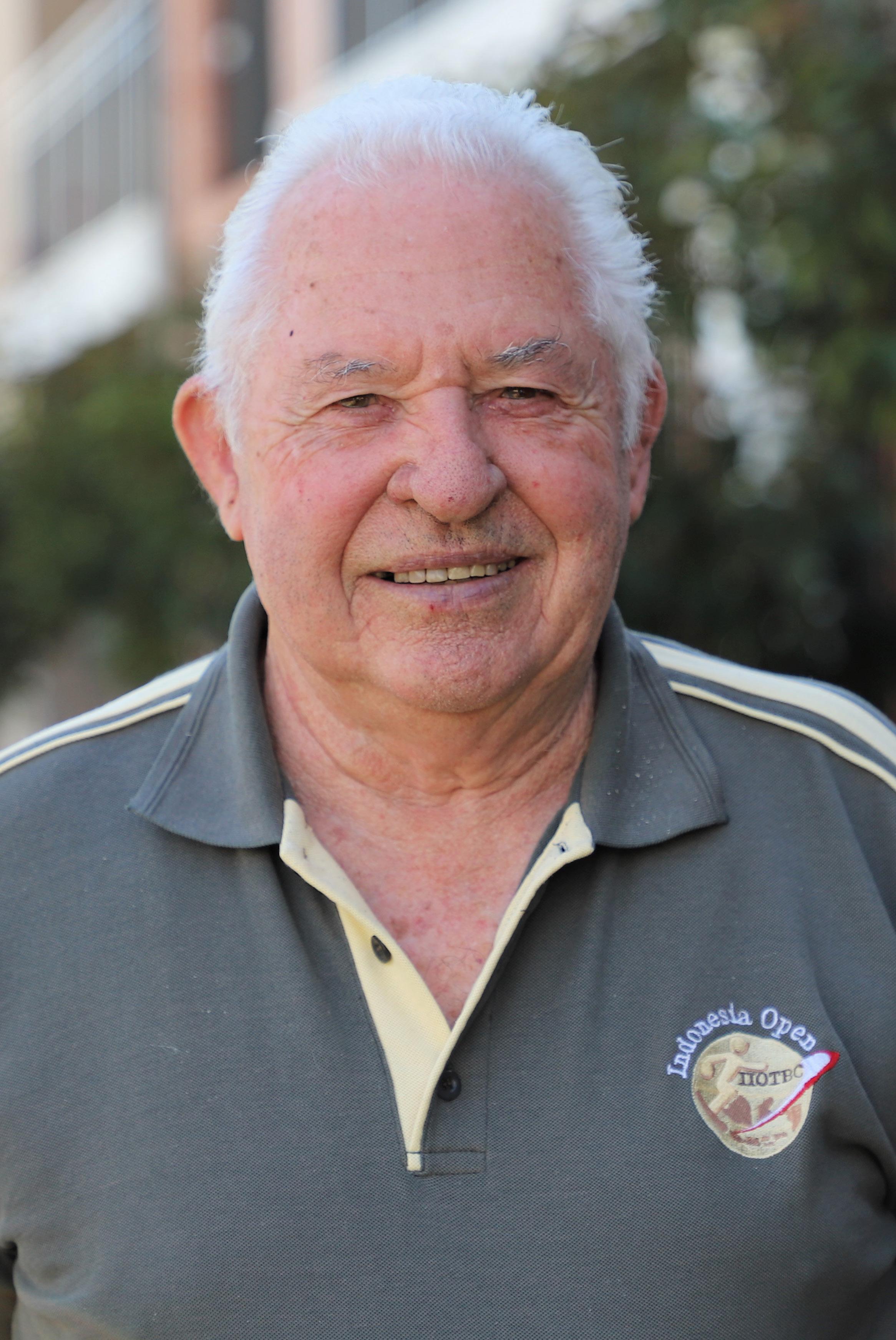
With nearly 36 years of service in the Royal New Zealand Air Force, George ‘Shorty’ Madeley has earned his long service medal several times over and thanks to his sons Mike, Bruce and Alan, who also joined the Force, the family have racked up 136 years RNZAF service between them!
The air force wasn’t Shorty’s original plan however, which was more about wheels than wings.
After leaving Whakatane High School, Shorty started a motor mechanic apprenticeship, but it was interrupted when he turned 18 with the requirement to carry out Compulsory Military Training (CMT).
“I wanted to travel, and I managed to get onto the last CMT draft to enter the RNZAF at RNZAF Hobsonville,” says Shorty, who signed an eight-year contract as a result.
The mechanical training stood him in good stead as Shorty became a mechanical transport driver and operator. He would drive all manner of vehicles and was involved in the maintenance of them all plus training others to do the same.
“I did all my courses, pulling equipment, aircraft, fuelling, lifting with cranes, driving tractors and bulldozers, I qualified with them all.”
He certainly got his wish to travel too, with two stints in Singapore totalling three years, a few months in Fiji and at RNZAF bases around New Zealand including Hobsonville, Te Rapa, Woodbourne, Shelly Bay in Wellington and Whenuapai.
The first time in Singapore was at Tengah with 75 Squadron from 1961-62. They went on an exercise to the Philippines for three weeks, where driving on the other side of the roads was a disconcerting experience.
“The communists were still fighting in Malaya which was a bit scary at times.
“But you just did it, it was part of the job.”
The prospect of war never fazed him though. “I had uncles who had served so, I had good advice.”
Shorty married Christine, who he met in high school, at the RNZAF Hobsonville Chapel on base in 1963.
Looking back on his career he says:
“It was varied and a lot of fun too.”
He became actively involved in racing stock cars around the country, playing rugby and raising four boys, including an adopted son.
It was a proud moment seeing three of his sons follow in his footsteps to join the RNZAF.
“It was their decision to join, and I was very proud and supported them,” he says.
In 1980, having reached Warrant Officer, he switched divisions to become a New Zealand Cadet Force Advisor, looking after cadets aged 13-21 from the army, navy, and Air Training Corps.
“You’re training them to what military life is like, learning bush craft, even learning how to iron and cook their own meals! And being there to offer advice of course.
“It was really rewarding.”
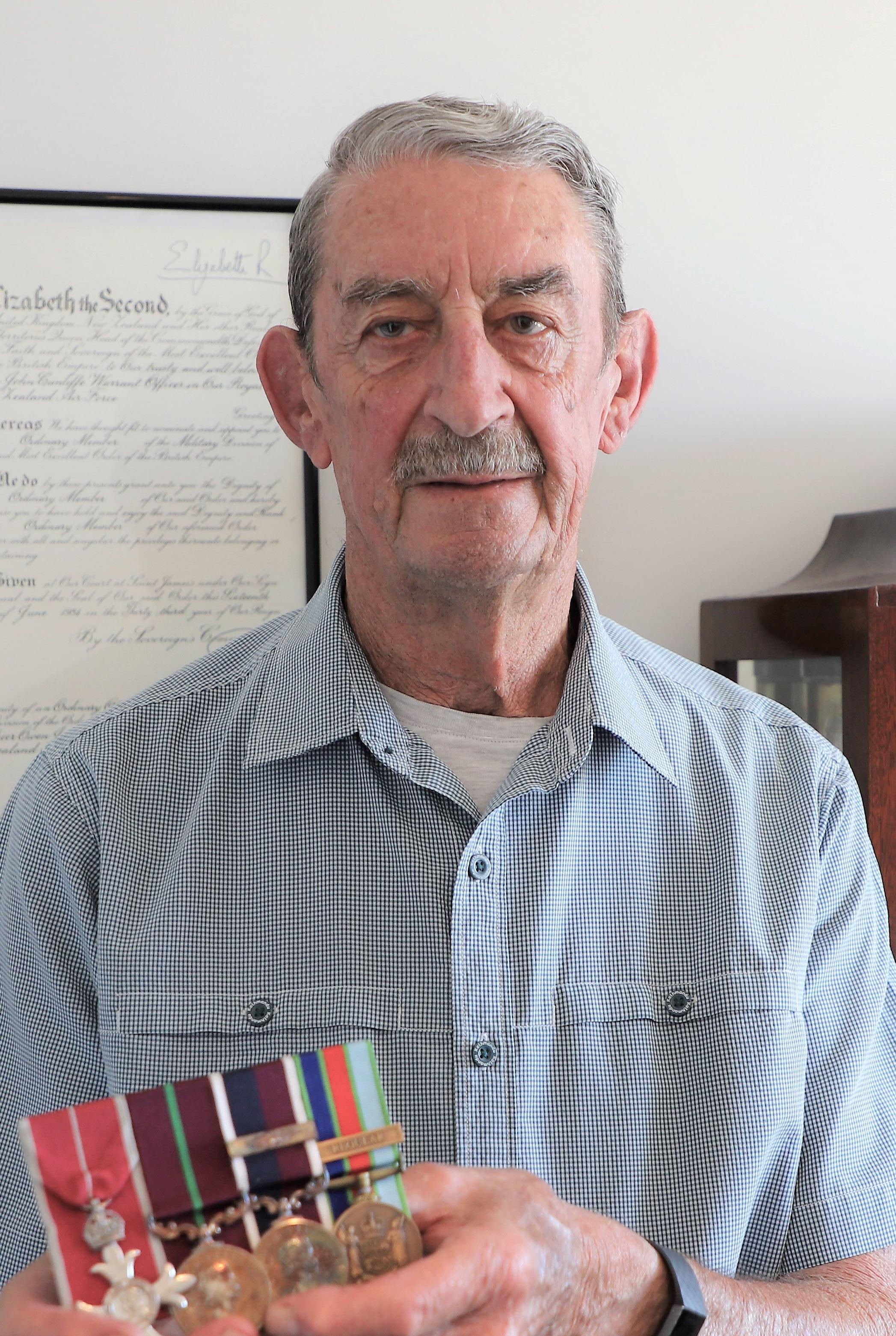
Spending more than 37 years working in the RNZAF was more than a career for Auckland-born Owen Cunliffe.
It also led him to his wife-to-be, many lifelong friendships, an MBE and plenty of interesting and sometimes downright frightening challenges along the way!
With a love of all things aeroplane sparked from an early age, Owen joined the force as soon as he left Putaruru District High School.
He completed two years of military and basic trade training at Woodbourne with a set of guys he is still friends with 65 years later!
“We got to know each other pretty well and formed a bond which has lasted until now.”
In 1964 he was picked to go to the States to train on C130s at Travis Air Force Base for six months.
“It was at the Battle of Britain Ball in San Francisco that I met my wife, Bridget who had just emigrated there from Ireland!” he laughs.
The following year Bridget joined Owen in New Zealand and the pair were married two months later.
Owen worked up the ranks to Warrant Officer and in 1979 was posted to Singapore for two years operating Iroquois helicopters.
Thanks to his technical skills on the T56 engine, Owen had developed a programme for monitoring engine condition which required him to present at conferences overseas twice a year. Later he regularly toured the States giving presentations.
He was awarded an MBE in 1984 for his welfare and liaison work with 3 Squadron who were on detachment in Sinai as a peacekeeping force plus his maintenance planning work.
Owen says he loved the variety his work offered him: “You’re always tackling different sorts of things, from working on engines, to man management, to writing signals out to the boss, and then those skills broaden and you’re making decisions on things you never thought you would when you first started out.
“And of course, the comradeship has been wonderful.”
His final role before leaving the force in 1993 was as Flight Commander at the Technical Control and Planning Centre (TCPC).
He and Bridget, who was made an affiliate member at the Base Auckland W/O’s & Sergeants’ Mess where they meet military friends every Friday, look forward to Anzac Day at Miriam Corban.
“It’s good seeing the young people come in wearing their father’s medals,” he says.

The newly rebuilt streets of Kure, Hiroshima were a world away from Leonard (Len) Rees’s childhood in Murgon, Queensland.
But, one year after the end of the Second World War, and “virtually immediately after” he joined the Australian Defence Force, Len found himself travelling to Kure, 30km from Hiroshima to join the occupation forces as a supply driver.
“It’s hard to imagine, but in Japan the workmen were so fast they could have a catastrophe and the next day it’s cleaned up,” Len says.
“So, there wasn’t lots of wreckage around, people had got on with it and were fixing it.”
Over the next two years Len came to build a life in Kure, learning “enough Japanese to get by”, helping to unload ships, as well as driving dignitaries.
“A lot of the time I was driving dignitaries here there and everywhere, so I knew the whole surrounds well,” he says.
Later, while doing the same job in Osaka, Len drove Sir Edward ‘Weary’ Dunlop.
“He had people with him, so I didn’t talk much, but he was very nice, a very decent man,” Len said.
When not working he enjoyed getting to know Japanese culture.
“I made some good friends over there,” he says.
“The food was different, but I enjoyed it.
“I left home when I was very young, and I think I was probably looking for an experience and that’s what I got.”
During his time serving in Japan, Len returned to Australia once for a break, however he was eager to get back to work.
“When I first went to Japan, I went on a ship which took about two weeks, the other times I flew, which was good,” he says.
“But I enjoyed it over there, and I enjoyed the army.
“I learned more in the army than I did anywhere else I think.”
Len was married and had his first child within 12 months of returning to Australia. While the army offered “very good help” for people returning to civilian life, Len chose to “go it alone”.
“I just went and got a job as a metal polisher and had a family and left it behind,” he says.
“There wasn’t any real reason I decided to go it alone and I didn’t get into any of the programmes.”
For Len, Anzac Day and Remembrance Day are also no more significant than other days. But, the strength of character instilled in him during his time in the army has stayed with him forever.
“I learnt real discipline, which was very important, and I learned to be very respectful of people and that you can learn a lot from different cultures.”
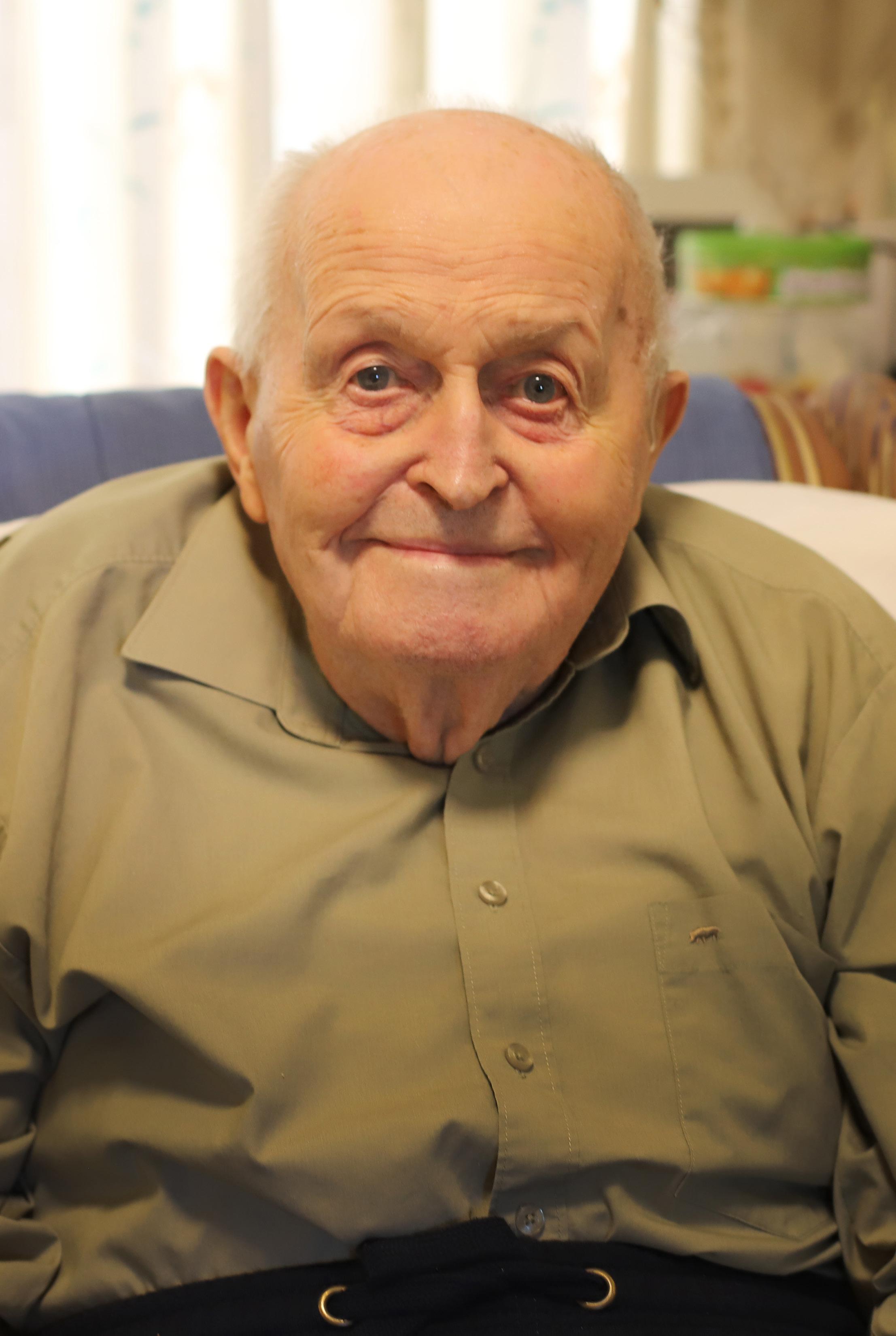
Forbes Taylor says when he was near the front line as part of the Korean War it really was a matter of luck as to whether he and other fellow servicemen survived.
It was June 1953 and the Ngaio Marsh resident had not long been flown into Gimpo airport, near Seoul. He had joined the Signals C or ‘Charlie Troop’ to help service the telephone lines that were used by 1st Commonwealth division troops including in the ‘Battle of the Hook’.
He remembers desperate night-time attacks by the Chinese, trying to capture Hook valley territory before the July ceasefire was called. During this time repairs were needed on the telephone lines. “The Chinese were repelled by United Nations forces,” he says.
On one frontline occasion, a shell exploded about 40 yards away. But it could have easily been much, much closer. “I thought, good heavens, I could have been there (under the shell). I came to the conclusion: surviving war is a matter of luck,” he says.
At the age of 21 he volunteered for service, entering Burnham Military Camp for basic and signals and radio operator training from December 1952 onwards. He was eventually made a 2nd Lieutenant in the New Zealand signals division, having been to Waiouru for officer training.
Because he’d arrived towards the end of physical warfare, Forbes spent much of his 18 months of service during the period of ceasefire. There were moments of tension, but also the chance for R&R. While the Americans would fly the Kiwi contingent to Tokyo, Forbes would sometimes push on to other destinations including the post-atomic bomb Hiroshima.
It was quite a trip home from his period of service. He’d sailed from Busan, to Brisbane where he and other troops marched and were cheered by the crowds, on to Kingsford Smith Airport, Sydney and New Zealand. On his arrival back in Christchurch his Mum was there. He was also greeted by Government representatives at the King Edward Barracks in the city.
In one way his volunteering for the Korean War service was a way out of a family situation. His father had passed away and his mother was struggling to keep their farm at Wakanui, near Ashburton, as a going concern. Eventually the farm was sold, and his mother moved to Christchurch. “The amazing thing was that she never complained about me joining the army... she never questioned me.”
Forbes is very proud of his siblings. One older brother Lloyd served in “Sunderland flying boats” safeguarding convoys in WWII. His other brother Ross, was involved Nasa’s space programme. He was the first geochemist to get his hands on the samples of moon rock, picked up by Neil Armstrong and Buzz Aldrin, and brought back to Earth by Apollo 11.
Forbes has kept up with the Korean political standoff and has been part of Christchurch-based recognition of progress between the two sides. In April 2018, North Korea and South Korea agreed to talks to end the ongoing 65-year conflict.
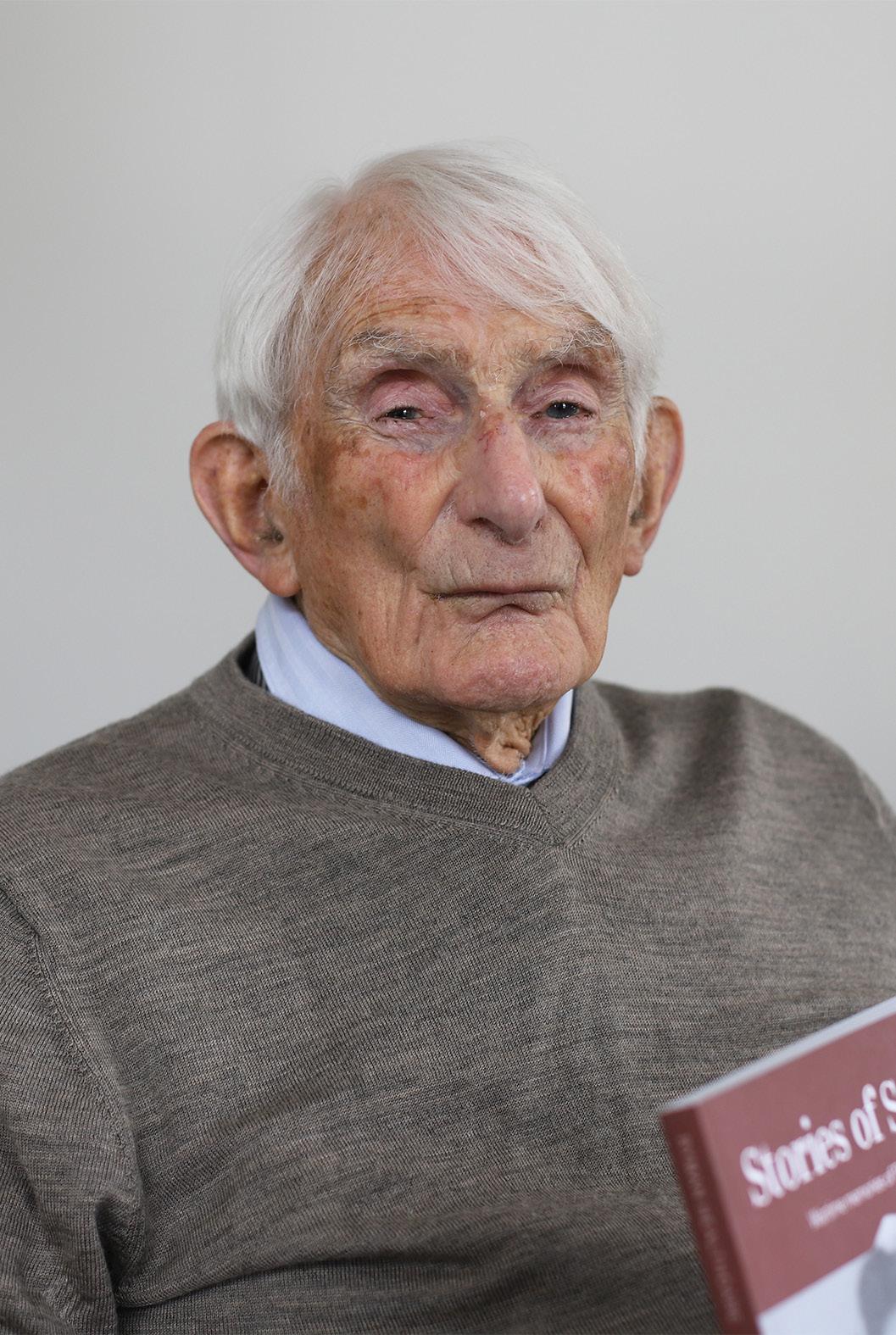
Medical orderly Gordon Parsonson saved lives in World War II, working hard to ensure the troops fighting for and defending the Solomon Islands did not die of malaria or dysentery.
Gordon started in the army, enlisting in 1942, but transferred to the Royal New Zealand Air Force in January 1943, attaining the rank of Leading Aircraftman and staying in the Air Force until December 1945. He received the British Empire Medal for this service in 1945.
Signing up saw him fly on a Douglas DC-3 from Ohakea to the Solomon Islands, where several major land, sea and air battles took place, including the Japanese invasion of Tulagi and the battle for Guadalcanal.
Gordon was a medical orderly attached to a unit on the island of Malaita. In addition to caring for the RNZAF personnel he also cared for some of the 60,000 Melanesians on the island. In New Zealand he’d trained with the St John healthcare service.
In a RNZAF book By Such Deeds, by Group Captain CM Hanson, Gordon is said, as a medical orderly, to have displayed superior initiative, and helped maintain morale.
“Many cases of malaria and jaundice occurred, and as the nearest doctor was some eighty miles away, the responsibility of treating and caring for the patients fell upon Aircraftman Parsonson, who nursed them with the utmost care and sympathy,” the book recalls.
Gordon says it was a seemingly endless task, looking both after the unit’s 60 men and the locals from a wooden house that acted as the medical centre. He treated those with malaria and prevention with quinine or atebrin. As here was some hesitation amongst men, he asked them to follow his example of swallowing a pill.
“There was a lot of suspicion. But I think they grew to trust me,” he says.
Given the unit’s access to radio communication plus radar, the war and incursions by the enemy seemed very close. “One (Japanese place) came over on Christmas day,” he says. There was little chance for rest and recreation.
There were also some unusual fauna on the islands. “By his extreme devotion to duty he undoubtedly played a large part in saving the life of one airman who was critically ill after being bitten by a poisonous centipede,” the book citation says.
“As a medical orderly, I’d have to deal with anything that came up. When people got abrasions and cuts. Mostly it was people suffering from malaria... I kept them, I nursed them back to health, for three weeks perhaps,” Gordon adds.
Gordon was attached to the RNZAF’s 14 squadron, but upon arriving to Guadalcanal transferred to the 3 squadron before again being transferred to the 53 radar unit at Tolobaita, North Malaita. After he suffered a severe bout of malaria himself, he came home.

Desmond Mitchell’s first experience on joining the New Zealand Army as an 18-year-old was as an orderly clerk in the company office.
“They assumed I’d wanted to do that because I worked in the Audit Office, but I requested a posting as a soldier instead,” he recalls.
He had been steered into this career direction by his mother who was determined for her only child to have job security by securing a good government job.
Desmond was born in Mt Eden on 20th March 1923 and grew up in Pukekohe. He went to Pukekohe High School before landing his role in the Audit Office in Hamilton and making both his mother and his bricklayer father very proud.
With the war breaking out in Europe, however, Desmond followed in the footsteps of his father, who had served in WWI.
The young private had his request to become a soldier within the Waikato Battalion granted, and when Japan entered the war, he was transferred to Claudelands Racecourse before proceeding to Papakura Military Camp, after a four-day march.
After two years in the army, and with the loss of two friends during training exercises and with his father’s WWI stories of bayonet charges now resonating, Des saw that the RNZAF was recruiting air crew and he volunteered.
“I thought if I were to meet my demise, at least in the air force it would be quicker that way!” he laughs.
He was transferred to Blenheim Training Centre and was assigned the dual roles of Bomb Aimer/Navigator Trainee.
Desmond’s parents waved him off from Auckland where he sailed to San Francisco, Vancouver, then Bellevue for a bomb aimer course and then on to do a navigator course on Prince Edward Island.
He was finally shipped to London where the proximity to war made things feel suddenly very real.
“We were travelling from Liverpool to Brighton and there was an air raid in London with the Germans dropping flying V2 bombs.
“They stopped the train and while we couldn’t see anything we could hear the explosions.
“It was very frightening but that was the nearest I got to it, fortunately.”
After his final transfer to Pembray in South Wales the European war was declared over and a relieved Desmond began his trip home.
His connection with the war was far from over though. After retiring from his job aged 63, the RSA asked him to become secretary/treasurer, a role he did for the next 28 years!
Now Patron of Pukekohe RSA and the RSA Pipe Band, Desmond takes his Anzac Day commitments very seriously.
“I go to the RSA in the morning and then attend the village ceremony in the afternoon where I have done the Ode in the past.”

Being brought up on a farm, it was a natural step for Dorothy (Dot) Landon to put her hand up for the Land Army to do her bit for the war effort.
She was born on 1st September 1923 in Hunterville, the third of four children, and did her primary schooling at Bulls Primary School.
At 16, she moved to Auckland, initially staying with her grandmother in Ponsonby and joining her older sister at work in a shoe factory in the CBD.
By then, both her father and her older brother had joined the war effort and when Dot read in the paper about the need for Land Army volunteers she decided to sign up.
“It just appealed to me, to do something to help,” she says. “I was glad to be contributing. It felt good that you could do something.”
Dot was sent to a farm at Springdale, just outside Matamata where she lived with the family she was working for and later moved to one at Mangatāwhiri.
Contrary to popular representations, the life of a Land Army girl was not necessarily a group of girls having a great time together working on the land.
Most of the time the girls were just there on their own to help the farm owners and the work was pretty physical too.
“There was all different kinds of farm work, milking cows, collecting firewood, driving a horse and cart or wagon, anything that a man did.
“I had always been with horses but I don’t think I’d ever driven a wagon until then.
“And the milking, in those days it went from vats into these cans, which you then had to roll from the ground up a plank in order to put them on the back of a truck.
“I can remember using a horse drawn plough too.
“I don’t think that was very easy. People didn’t have tractors the way they do now.”
Dot even featured on the front page of the Auckland Weekly News on 16 September 1942 wearing gumboots and leading a horse.
For Dot and her family, the war effort was all about doing their bit. Even her mother made uniforms for the military service.
There was much relief in the family when her father and brother returned home safe and sound.
“My dad was invalided home because he was a very bad asthma sufferer and my brother came back too, so we were probably lucky that things went pretty good after the war for us.”
Her Land Army days were formally recognised when John Key was Prime Minister and she was presented with a special certificate which she displays proudly on her wall at Possum Bourne today.

Being part of the first ever intake of Compulsory Military Training (CMT) in May 1950 shaped the course of his whole life, says Ron Howard.
Born in Plimmerton on Waitangi Day 1932, Ron then moved to Whanganui where he went to Aramoho Primary School and Whanganui Technical College after which he embarked on a five year engineering apprenticeship.
It was during that time that 18-year-old Ron set off for six weeks of basic training at Linton Military Camp then another six weeks at Palmerston North before being allocated to the Royal Armoured Corp in Waiouru for regimental training.
“I was excited at the prospect, and I enjoyed every day and moment, as did the majority of the recruits,” he says.
“The routine of advanced training on mechanics was very informative and we learnt quickly the value of military discipline.
“This, coupled with good sporting opportunities, good food and the value of camaraderie was paramount.”
While they were initially looked down upon by the regular force soldiers as mere ‘toy soldiers’, Ron said they eventually proved them wrong.
“At one stage we were advised that we would be on permanent stand by for covering duties that our combat soldiers carried out overseas.”
At the very least it was a notable transition into adulthood for most of the men, he says.
The group was required to return for annual camps for the next three years and Ron says they enjoyed the privilege of being trained by WWII veterans who in turn enjoyed the routine of training youth but without the constraints of warfare.
“Our commanding officer was Major Wilson Handley, of Maxwell and a brilliant officer in all aspects, so there was absolute contentment.”
Ron was promoted annually and was appointed Transport Officer for all vehicles and tanks.
Ron went on to attend Marine Engineering College in Wellington in 1955 before joining the NZ Shipping Company Vessel as 12th Engineer on RMS Rangitiki. He also served four years in the British Merchant Navy before leaving to become a naval architect.
On returning to New Zealand with wife Isobel he was appointed as site manager on the Manapouri Power Construction in 1962 before later establishing his own engineering company in Otahuhu and Pukekohe.
While Ron says he is fundamentally opposed to war, he believes more strong and capable politicians are needed to keep war at bay.
As a long-serving member of the Franklin RSA, including three years as welfare officer, Ron fully supports the commemoration of Anzac and Armistice Day services, and spends the days reflecting on the sacrifices made by members of his family.
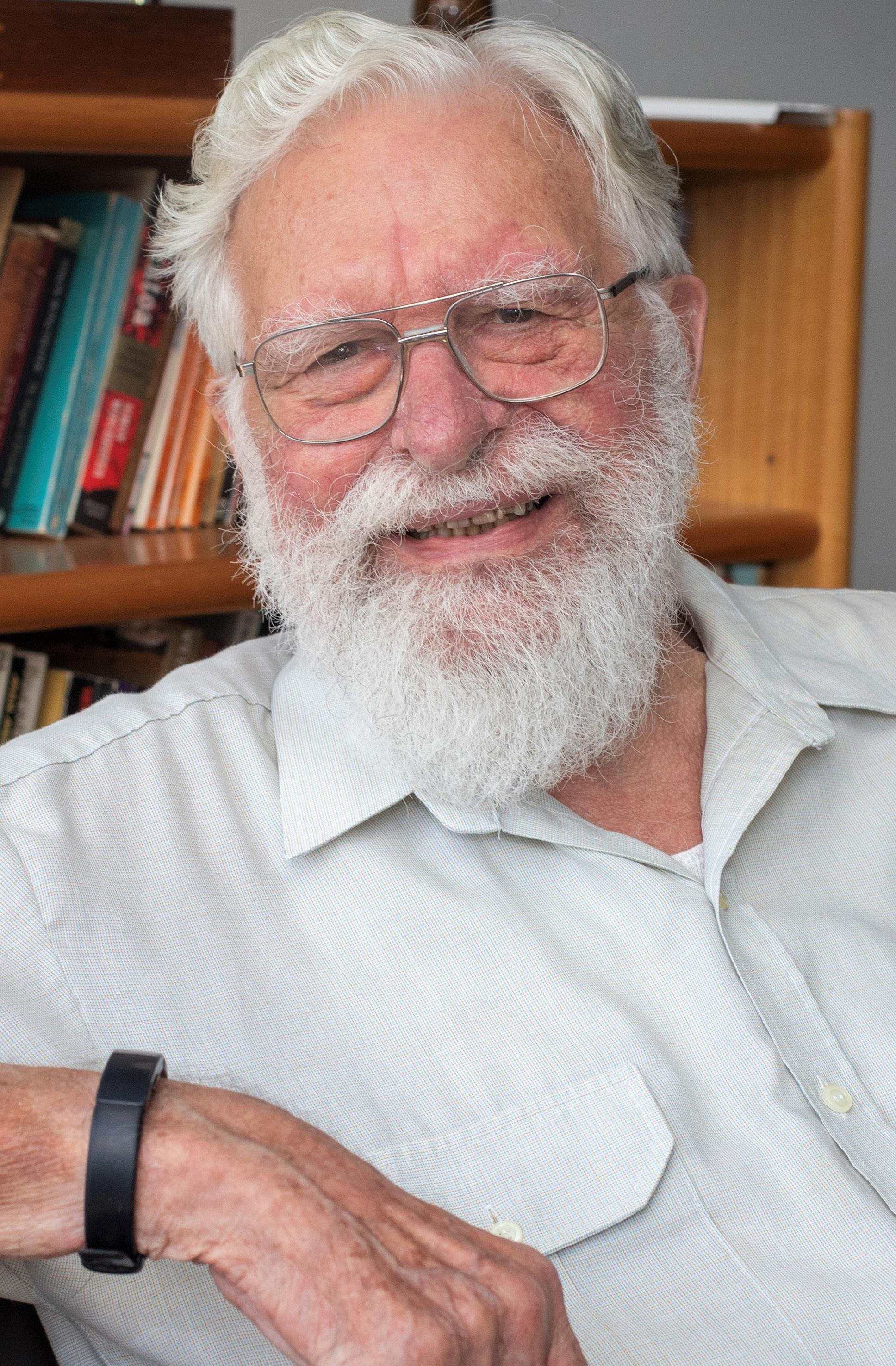
Born in London in 1937 Gordon Masters enjoyed just two years of life before the sound of bombing started to punctuate his days.
“I can remember going home from primary school one afternoon and hearing the sound of a doodlebug (V1 flying bomb) stop, which was a sign to find shelter quick,” he said.
“The V2s were even worse because they just went off and that was it.”
Gordon’s life had already been changed by WWII with his father protecting the home fleet in the Orkney Islands as an ack ack gunner for the entirety of the war.
While the war had long ended by the time Gordon was 18, two years National Service was still compulsory in 1955.
“After I finished high school, I found myself with University Entrance two years away, which was pretty convenient because I spent two years in the RAF,” he said.
“To do your National Service in the marines was unheard of, to do your National Service in the navy you probably had to have a relative in the navy, but to do your service in the air force they had a predisposition for picking people out of grammar schools, rather than comprehensive schools, so that’s how I got in.”
Gordon went for kitting out at Cardington, a former Royal Air Ship Station, in Bedfordshire.
“It was quite convenient because we were able to learn the elements of marching and military drill undercover in the hangers,” he said.
Later, he completed training at a former Women’s Auxiliary Air Force base in Hednesford.
“My abiding memory of that was at the passing out parade the corporal in charge of our flight had laryngitis and when he gave the order to about-turn we did not hear him and we marched into a dip of the parade ground.”
While serving at Locking in North Somerset, Gordon was trained to use ‘Chain Home’ equipment.
‘Chain Home’ was the first early warning radar network in the world and is credited for helping to win The Battle of Britain.
On the day Gordon’s flight graduated the last ‘Chain Home’ station was decommissioned.
“So, we graduated and the skills we had were useless,” he said.
“Eventually they hauled us back into Locking and they trained us with ground-controlled approach equipment.”
He also completed part of his service at RAF Leeming in North Yorkshire.
While Gordon finished his time with military in 1957, he maintains ties with others who served.
“I go to the Coburg RSL where I’ve got a group of friends and we chew the fat,” he said.
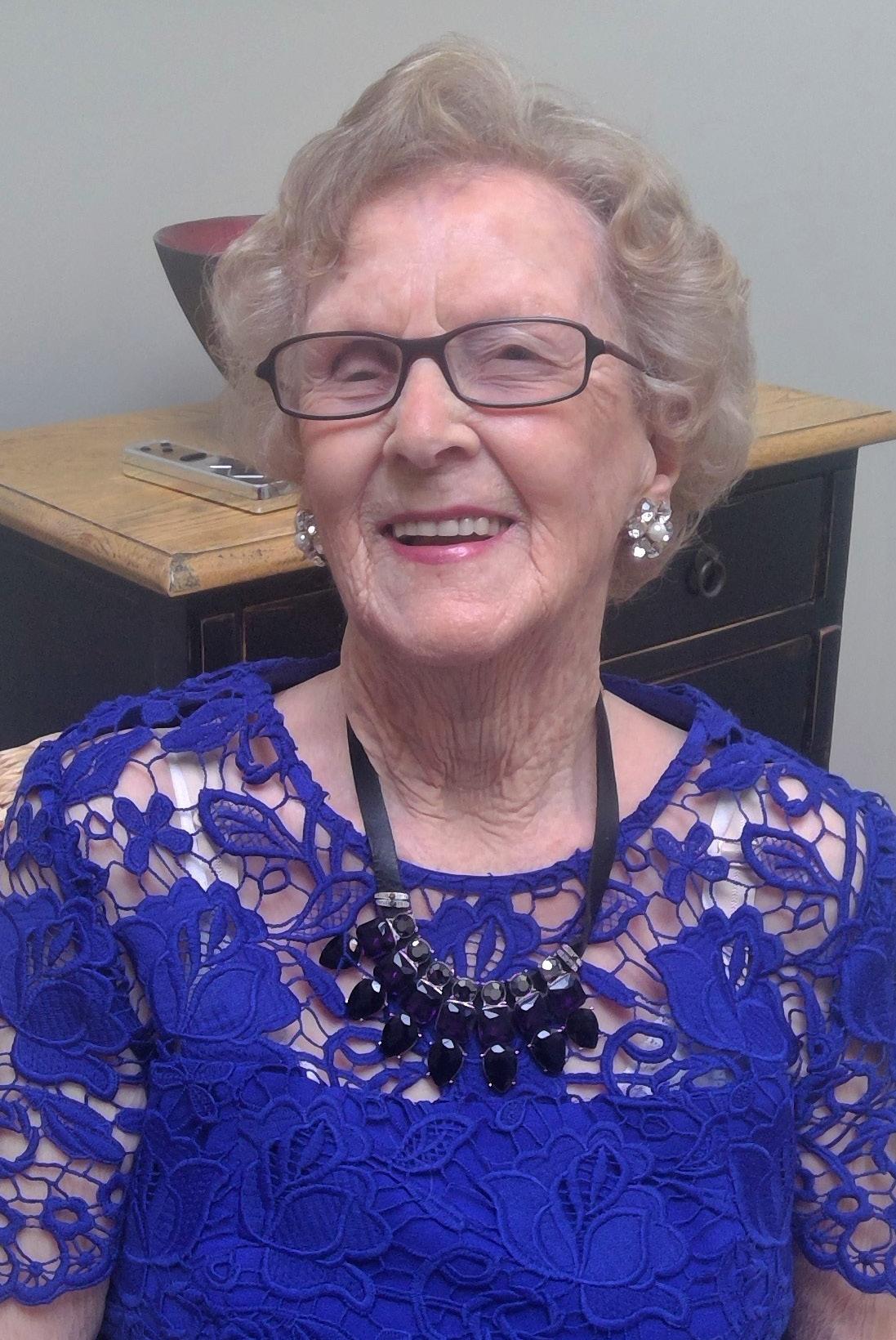
Brenda Hicks was born in Invercargill on 7th March, 1919. Twenty or so years later World War II figured large in her life.
She was keen to be involved, joining the New Zealand Women’s Army Auxiliary Corps (WAAC) in 1942. At its peak in 1944 the corps had 4600 women serving in New Zealand and overseas.
Brenda became a dental assistant at Trentham Military Camp, and remembers a great camaraderie was felt amongst the fellow WAACs. She loved the Trentham lifestyle.
The WAACs had the privilege of sleeping just four to an army hut, while the men tended to be housed in larger groupings. In her work uniform, she helped provide dental care to hundreds of men. Sending the troops off overseas, knowing their teeth were in good shape, gave her satisfaction.
She loved the lifestyle. “Everyone was so good to me. I couldn’t have enjoyed that part of my life better really, it was a great time for me because I was meeting so many people.”
Men’s teeth were also checked and repaired, before the soldiers were discharged.
By VE (Victory in Europe) Day on May 7th, 1945 she was back in Invercargill. It had been an exciting time for her, and the day itself was very memorable.
“We all danced on the streets (including Dee Street and Tay Street). It didn’t matter who you danced with, you just grabbed somebody, and everybody was so happy because it was the end of the war.”
She had been invited by a couple of dentists to stay on working in Wellington but said the pull home was too strong.
She married George Hicks in 1946, after he returned from the frontlines. The wartime experiences and marriage provided some of the most exciting times of her life, but there were sad moments of course amongst the happiness.
Many men never returned from the war fronts. Some of her friends had to face up to the brutal truths of war.
She and George later enjoyed running a Bernina sewing machine business for a good number of years. “George, my husband, he was a man who could turn his hand to anything.”
Husband George died in mid-2017, two days before his 98th birthday. His service included being an anti-aircraft gunner in Egypt, Syria and Italy. He also cooked for his gun crew.

In December 1941 the UK government passed the National Service Act which allowed for the conscription of women. Women could choose to go into war work or join the WAAF or its army or air force equivalents, the ATS and the WRNS Women joined the WAAF from both the UK and overseas.
Bet Hunt was living with her parents in Kirkcaldy, on the north shore of the Firth of Forth. Scotland. She was called up and sent to “the Highlands” airfield Balado, near Kinross which opened in 1942
Although her parents were both from Scotland, Bet was born in Auckland, New Zealand but the family returned to Scotland when she was eight years old as her mother was homesick.
They were about to return to New Zealand when WWII started, so decided to stay in Scotland for the duration.
At Balado, Bet and other WAAFs worked to repair planes that had been damaged during battles.
“Because I was slim and could fit my upper body inside the plane between the body and the wing, they used to put me up inside there to spray paint the areas repaired.
“The bullet holes had to be repaired, riveted and painted so the planes could quickly get back into action.
“There was no protection – no masks; in those days they never thought about the fumes. Girls were getting sick. I was vomiting a lot. Dad asked me what I was doing and said that it was not right to be spray painting in the confined area without protection. Some girls got very ill from the toxic fumes.
“I kept doing that till the end of the war. It wasn’t till near the end of the war they gave us masks.
“We were young! I was given this job because I was small enough to fit inside.
“All the girls were about the same age, and the men were away so we had to do what they would normally do. We were all in the same boat. – that was life – you just did it.”
Sometimes it was frightening. Bet remembers the Luftwaffe air raids over Scotland.
After the German invasion of Norway in 1940, the east coast of Scotland was an easy target for the Luftwaffe. There were more than 500 German air raids on Scotland, including small towns causing terror amongst the civilian population.
“We were fighting for our lives.”
Bet’s mother had a vegetable garden to help supplement the family’s rations. “I had a little brother and Dad was doing war work, so Mum and I went without to let Dad and Bill have the rations.
“My Mother thought a growing young boy needed the nourishment and Dad was working hard. But I don’t remember being hungry. What little meat there was, my Mother gave to the men. It was different days.
“War is a such waste of lives,” she says.

Talented and creative Jean Reid, born 102 years ago in Nelson has an outstanding memory and easily recalls the beginning of WWII. “I was 18 years old and working for my father in the family nursery and florist shop. We grew most of the flowers ourselves in those days.
“I wasn’t happy about it – my brother and Jack [the young man who worked in the nursery and later became her husband] along with several cousins were of an age to be sent overseas. My father had been badly wounded at Gallipoli in WWI
“We were told by the authorities we had to stop growing flowers and only grow vegetables as they were needed to feed the country.” The nursery became an essential service.
Jean’s father was allowed to keep on only one man to work in the nursery, and he had to make the difficult choice between his son, and Jack. However, his son made the decision simple as he declared he was not staying there – “I’m going to war,” he said.
Jean’s life changed as she joined the WAAC and continued to work hard in the nursery.
“I’d had my driver’s licence since I was 15 so I had to drive the truck and do the vegetable deliveries. Jack didn’t have a licence.” The truck broke down often and each time Jean had to start the engine again with the crank handle!
She was sent to garages to learn how to fix cars although she doesn’t recall having to fix any!
In 1944 Jean and Jack married in Nelson. “My husband was a warden going around the streets at night checking for any stray lights during the blackout. You had to be very careful. I was alone a lot at night during that worrying time. The Japanese were a real threat and came close to New Zealand.
“We made cakes and biscuits to send to our boys overseas. Fruit cakes, Anzac biscuits and chocolate chippies were popular. We would pack them in tins then use old sugar bags to sew around the tin for posting.”
They were tough times to be sending extra food away. “The rationing was terrible! We had coupons for sugar, butter, flour and the petrol rationing meant we couldn’t travel very far.
“When the end of the war arrived, we were so delighted. We all went down to the Post Office at midnight and danced and sang and waited for the clock to chime midnight – it was wonderful! It had been such a long time. It was a big relief.”
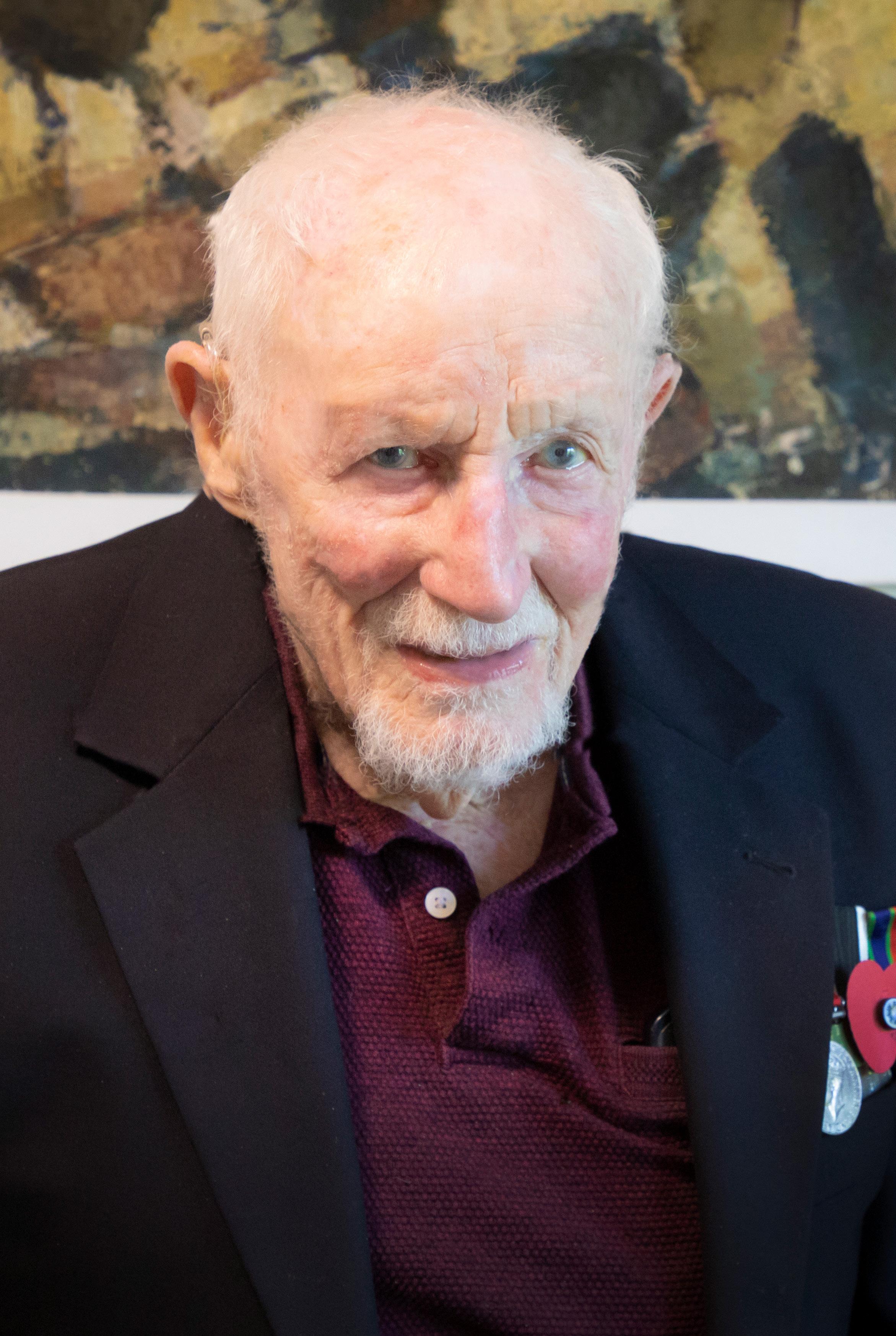
As a child, life for Roy Beeby meant hard work on a farm in Central Otago and moving around a lot.
He finally ended up spending his last years of school back in Dunedin, the city where he had been born.
After leaving school at 16 he became an apprentice typewriter mechanic.
Then in 1944 at 18, Roy got called up to join the services. He said he had one option: “Which service do you want to join? –I chose the air force because I’d been told the food was better!”
In Blenheim he was taught 'how to be a soldier'.
“It was three months of ‘square bashing,’ marching up and down a square, learning how to shoot a rifle and all that sort of stuff. Then I was told to go and learn to fly an aeroplane.
“I went to Taieri near Dunedin where I learned to fly a Tiger Moth ”
He wasn’t chosen to be a pilot as the war was coming to an end and fewer pilots were required, but he continued his training and was posted to Wigram where he was trained to be a radio operator and was then sent to Ohakea Air Base in the central North Island.
In 1945 Ray was posted to Laucala Bay, near Suva, Fiji.
“Our Morse operators monitored New Zealand allocated air-space. All aircraft flying in the Pacific were in communication with our Allied bases, except of course those from areas occupied by the Japanese.
“Our aircraft were out looking for submarines coming down towards New Zealand and Australia, as most of our forces were still overseas.
“The New Zealand forces were treated well by the local people, he says.”
After being demobbed Roy was given the option of staying in Fiji or returning to New Zealand.
It wasn’t a hard choice!
“If I had returned home, I would have had to go back my old job – that was the rule. I thought there were better things in life than fixing typewriters.”
Roy joined NZ Civil Aviation and stayed on at Laucala Bay, later transferring to Nadi. Eventually he returned to New Zealand and was based at Tauranga Airport. Years later with his family he returned to Nadi for a further five years with Civil Aviation.
He also worked in the New Hebrides (now Vanuatu) at Espiritu Santo. Then a huge change, moving back to New Zealand, Head Office in Stout St, Wellington.
Roy is a staunch member of the RSA and always commemorates Anzac Day.
And his thoughts regarding war? – “It’s good to be on the winning side,” he says quietly.
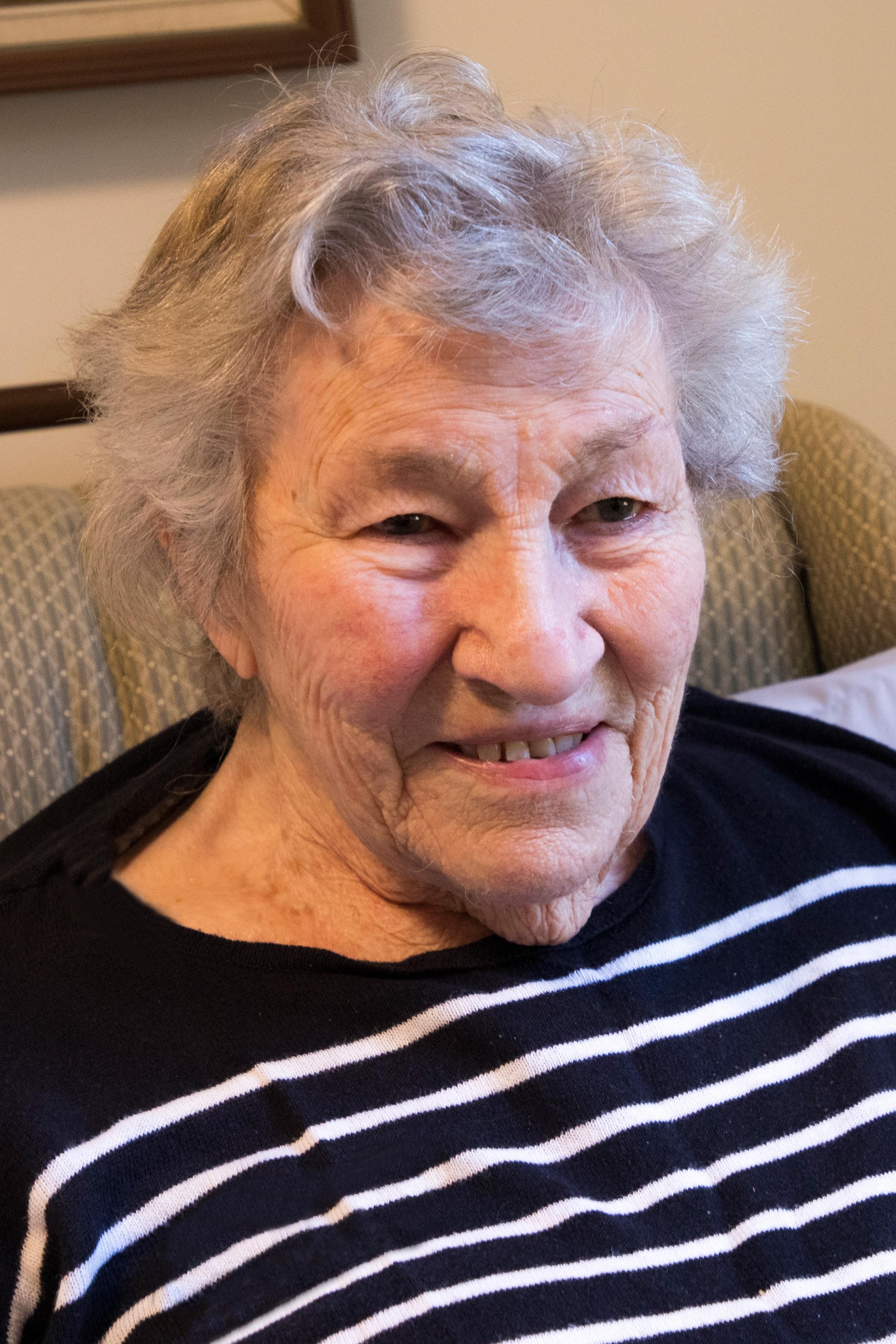
India was still part of the British Empire in 1935 when a young Sylvia Coles set sail from the London dock of Tilbury, on a great adventure with her family and her father’s regiment to Bombay.
For the next five years India was to be the home of the 13th Regiment of the Somerset Light Infantry and consequently eight-yearold Sylvia’s new home too.
When WWII was declared in 1939 Sylvia’s family was living in Poona and decided it would be safer to remain in India.
After two years in Multan the regiment was ordered to Kohat in the North West Frontier and so another uncomfortable train journey ensued. “For the first time in India I felt we were in real danger.”
A move to Bhopal offered 16-year-old Sylvia a new sense of freedom. She left school and wanted to join the Women’s Volunteer Service but had to be 18.
In an out of character move, her father finally agreed to change her age on the form and her first job was typist/clerk in the orderly room of the Air Gunnery School, Bhopal.
“My hours were 6am till 1pm. In the afternoons I spent my time in the motor pool where I learnt to drive trucks and an ambulance.”
In 1943 a young New Zealand pilot, Ted, was posted to the gunnery school to train Indians how to fly. There were frequent crashes at the airport.
Sylvia and the New Zealander struck up a friendship, but her father kept a close eye on her.
They finally became engaged but in September 1944 Ted had to join his new squadron in Calcutta.
Fierce fighting was going on in Burma and Ted joined the fighting there flying his P-47 Thunderbolt
Sylvia was following the news closely and was shocked to receive a telegram saying Ted was missing, and later another adding, her fiancé was missing, believe killed.
One evening in September 1945 the family was having dinner on the verandah, when her mother’s face turned white and she muttered, “I don’t believe it.” Hobbling up the driveway on crutches was a very thin and unsteady Ted, we were told he was killed in a plane crash but here he was alive!
The surgeons told him it would be best for him to return to New Zealand for the surgery. Meanwhile Sylvia and Ted decided to get married in Ranikhet, on her 18th birthday.
The couple left behind Sylvia’s family and sailed to New Zealand on the Glengole in November 1945.
Sylvia and Ted settled in New Zealand and had three children together. Tragically in 1951 Sylvia’s husband was killed in air crash in mid-Canterbury. She was left with three children under six years old when he was killed.
“He was such a good dad,” she said.

Steve Costelow was born in Melbourne on September 25th, 1946.
That date is significant because 21 years later it would be drawn from a ballot determining which young Australian men would be called up for two years’ compulsory military service during the Vietnam War.
“I found out living at home with mum and dad and I can remember mum sitting on the end of my bed crying.”
The magnitude of what was about to happen hadn’t yet dawned on Steve.
“It probably upset me to see mum crying, but I didn’t think much of it at the time. It probably took me a while for it to sink in.”
Steve was assigned to ordnance – “that was just luck of the draw, you couldn’t ask where you wanted to go” – which, after 12 months’ training in Australia, saw him deployed to the Second Advanced Ordnance Depot (2AOD) in Vung Tau, near Saigon. Steve would serve for a year before returning home.
“Once a month a ship would come in that we would unload. We had huge warehouses, and it was our daily job to issue something as small as a screw or as big as a tank. Arms, ammunition, whatever.
“It was always full on, and when the ship was in and unloading, we’d work all night.”
While Vung Tau was a relatively peaceful part of the county, the grim realities of the war were ever-present.
In some respects, though, the hardest thing for Steve and many Australian soldiers who served in Vietnam was returning home.
Public sentiment towards the controversial conflict had soured, and the returning servicemen bore the brunt of it.
“When I finally came home, you wouldn’t want to be wearing your uniform. People were spitting on you. They didn’t agree with the Vietnam War, but it’s not our fault – we got told to go.
“We didn’t have a choice – we were over there for our country, doing what we could.”
And the full extent of what those young men had gone through wasn’t yet apparent.
Several of Steve’s friends who served in Vietnam suffered post-traumatic stress disorder, some of whom ultimately took their own lives. Others were diagnosed with cancer attributed to their exposure to the defoliant chemical Agent Orange.
Vietnam soldiers weren’t officially welcomed back to Australia until 1987. Steve travelled to Canberra for the ceremony, and “that probably closed a lot of issues that most of us had.”
More than 50 years after that fateful letter arrived in the mail, Steve can see his service with the kind of clarity only time affords.
“I’m proud that I’ve represented the country. I like wearing my medals when I get the opportunity to wear them, and people’s attitudes these days have changed.
They now say, ‘well done’.”

Clive Sinclair’s 28 years in the NZ Army, many of them as a United Nations peacekeeper, saw him working with people from many different backgrounds, religions and nationalities.
It assured him that the training he received rated well compared with other armies in terms of peacekeeping and was certainly rewarding.
But just as rewarding, he says, was the seven years he spent living in Waiouru, working as both Chief of Staff and Commander and enjoying the strong sense of connection to the community there.
Clive was born in England on the 3rd of December 1946 and sailed to New Zealand with his family as an eight-year-old. Following his mother’s suggestion he joined the army and by June 1969 he had graduated as a second lieutenant in the RNZ Army Service Corps.
After postings in Palmerston North and Hobsonville, overseas service followed. In 1977 he was posted to the United Nations Truce Supervisory Organisation (UNTSO) in Palestine, also serving in Syria, Lebanon and the Sinai with his family in tow.
The work involved overseeing the peace treaty signed by Israel and its Arab neighbours and ensuring there were no violations such as over flights and land incursions, often with an observer from a different nation to ensure impartiality.
When Israel started a conflict with Lebanon, Clive was sent there for a month to evaluate the logistic capability of the UN battalions assigned to southern Lebanon along the Litani River.
Being unarmed, military observers were vulnerable to capture, vehicle theft, and death.
Clive says being unarmed could usually be your ‘greatest weapon’ as a peacekeeper.
“Because you aren’t a threat.”
Some parts of the world are so dangerous it didn’t make any difference if you were armed or not, and Clive took measures to lessen the risk. Or at least, feel like he had.
“Whenever I do these things I take a fatalistic approach. If you go anywhere with the idea of tiptoeing around I don’t think you can operate very well. If I’m going to be blown up, well then it’s my time.”
From 1984 to 1987, Clive was posted to Singapore with his family to take command of the NZ Transport Squadron within the NZ Force Southeast Asia.
This unit employed local civilians of Chinese, Malay and Indian origin as well as New Zealand soldiers, and deployments into the Malaysian jungle were a necessity to maintain soldier skills.
Clive retired from a 28-year army career after serving a two-year period as Commander Army Training Group Waiouru and finishing in Wellington in Army General Staff as head of Army Personnel Branch.
“The army and services generally do wonders for individuals; they give you self-esteem, self-confidence and I think you can become a great contributor to society,” he says.

At the pinnacle of his two-year National Service in the Royal Navy, David Canning was given standing watch at sea on his own – a position of great responsibility.
This was on board HMS Striker, ‘a fighting unit of 3500 tons’, in the Mediterranean with David responsible for decisions that had to be made.
This achievement was all the more impressive considering David failed his navigation tests on the first sitting.
“I was a man of languages, I’m not a very good mathematician. But the navy then did a very un-naval thing and gave us a second chance.”
Despite the second chance, he felt somewhat out of his depth when he was appointed to Navigating Officer.
Usually, National Service was completed in the army, but David had gone to great lengths to serve his in the navy.
His father was an Army man, indeed it was during his father’s posting to Alexandria in Egypt that David was born on 17th December 1930.
His younger brother Hugh also joined the Army, but significantly his twin brother Bill joined the navy straight after school and that’s where David’s loyalties therefore lay.
David became head boy and won a place at Oxford University to study Modern Languages, completing his degree before doing his National Service. He volunteered for the Navy Reserves during the long summer breaks to ensure his spot in the
Navy and he was accepted and soon found himself at the Royal Naval Barracks in Portsmouth in September 1952 for basic training.
His superiors obviously spotted David’s potential, despite him failing his seamanship test, he was appointed to HMS Reggio, part of the Amphibious Warfare Squadron in Malta.
David’s biggest challenge was his appointment to Navigating Officer aboard HMS Striker required absolute precision and certainty with the use of the sextant. This was needed to successfully plot the ship onto the target and calculate the critical moment that the stern anchor needed to be dropped, often on a moonless night while on a blacked-out ship.
It was his success with this, albeit feeling like a ‘special kind of nightmare’ that led to David’s watch responsibilities and later, an invitation to stay on in the navy.
However, he turned it down, leaving success with the Navy to his brother Bill, and turning instead to education and using the amazing mentoring he’d experienced to pass on to his charges as housemaster at King’s College when he later moved to New Zealand.
He continued to volunteer for the Navy Reserves for a few years in his new country and to this day takes an active role in Anzac commemorations, most recently in the village.

Ron Turner thought his life was already on track to become an engineer.
Born on 17th April 1945 in Auckland, Ron got a job with Alex Harvey Ltd after his schooling and had been doing that for a few years when, as Ron describes it, ‘National Service caught up with me!’
As part of the 17th intake, ahead of him lay 14 weeks of full-time service followed by part time for the next three years.
In Ron’s case, after the aptitude tests they selected him for officer training and near the end of the 14 weeks he was invited to join the regular force for a short service commission.
This was one year of training, one year in Vietnam and one year in New Zealand before going back into 'civvy street'.
On 3rd January 1967 Ron was commissioned as a 2nd Lieutenant into the Royal Regiment of NZ Artillery and was mixing with men who’d trained at Duntroon and Portsea in Australia and Sandhurst in England.
“I felt almost out of my depth with a variety of things,” he admits.
A year later and he was off to 161 Battery in Vietnam, which he described as periods of boredom and periods of intense activity and danger, ‘like every conflict’.
“Professionally it was satisfying, because you’re trained to be an artillery officer and you’re in Vietnam and you’re doing the job you’re trained for.”
Back home in New Zealand, he was invited to stay on in the regular army and he decided to do just that.
As Adjutant for 3 Field Regiment, a territorial regiment at Burnham Military Camp, he met people that he still sees to this day.
Next, back up to Waiouru, he was appointed as the officer commanding the Officer Training Unit, this time for the regular force and enjoyed another great posting, this one ground-breaking.
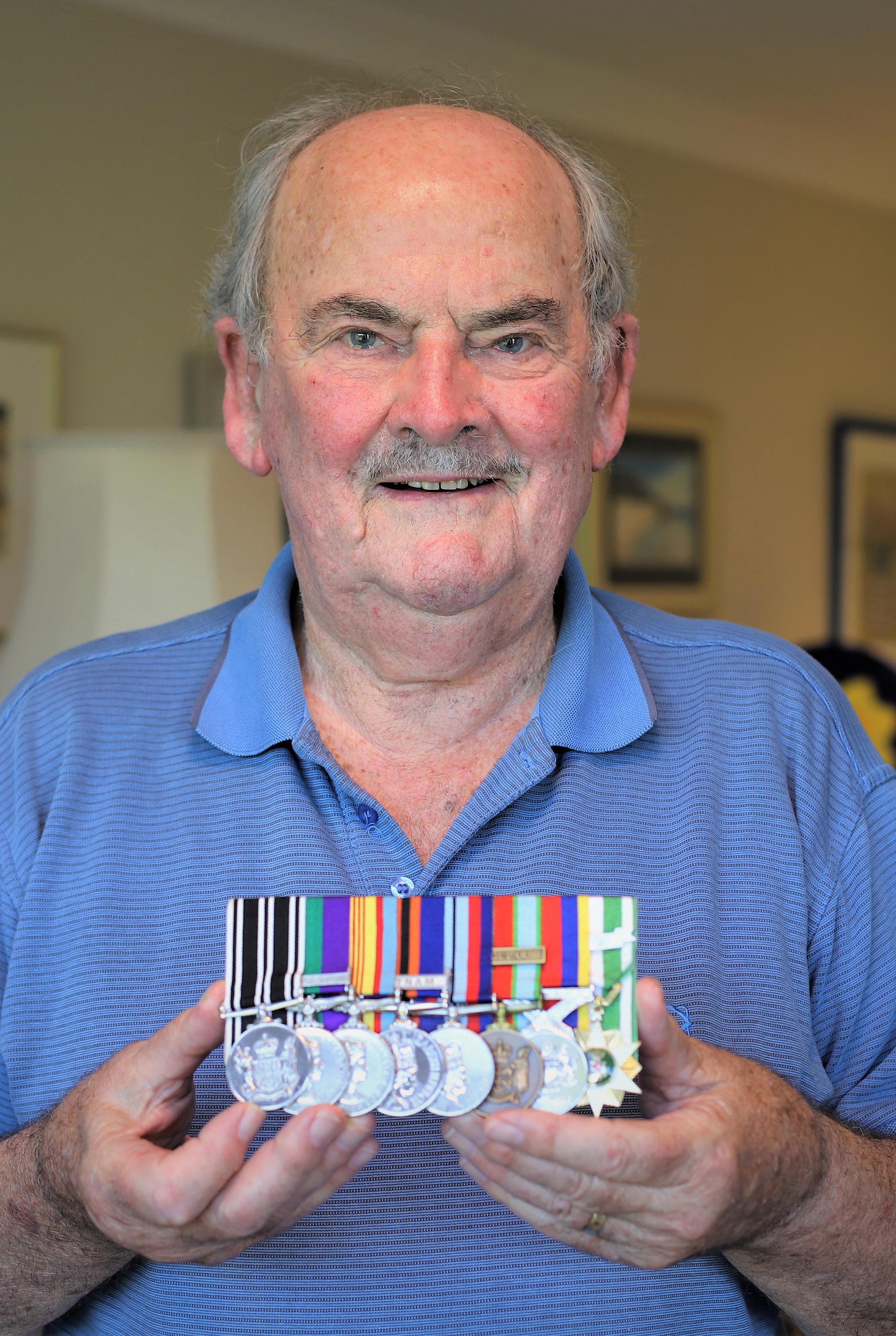
It was the wise words of his father that encouraged Quin Rodda to apply for officer training in the army.
He had started out as a regular force cadet aged 17 and had become a Lance Corporal when this opportunity presented itself. He was born in Christchurch in 1936 and went to Christchurch Boys’ High School.
“My dad said ‘surely there’s other officers that you admire, so model yourself on them instead.’”
So Quin applied, and Brigadier Leonard Thornton, the officer leading the selection board, clearly saw the same potential, despite the rest of the board’s view to the opposite.
Quin was determined to prove himself to both the Brigadier and his father.
On 8 May 1969 Quin was posted to Vietnam. As a captain, Quin was appointed second in command of Victor 4 Company, one of two NZ Infantry Companies to become part of the 6th Royal Australian Regiment operating as an Anzac Rifle Battalion under the formal title 6 RAR/NZ (Anzac) Battalion.
At this point, Army HQ had opened up the recruitment to anyone in the other corps who wanted active service and Quin says the result was V4 Company being a somewhat ‘rag tag bunch’.
Their new reality was brought into sharp focus on landing in Nui Dat. Quin’s role was to keep everything ticking along up and down the ranks.
“I had to work with the Company Commander Major Larry Lynch, so if something happened to him, I would be
aware of what was happening and take over. Luckily that didn’t happen."
There were also times when he would need to act as a father figure to the men especially in the aftermath of seeing a mate injured or killed.
“I had to identify our first casualty, who had only come in as a replacement about a week before.
“That was the first time I realised that was part of my duties as 2IC. It also shook the lads.”
Of the 37 New Zealanders killed in Vietnam, seven of them were from V4 and several others suffered life-changing injuries.
More shocking perhaps was the reaction from the New Zealand population on arriving home exactly a year later. There were no senior army officials or politicians to greet them, just sergeants handing out their pay and travel vouchers and telling them to change out of their uniforms.
That treatment really stung, says Quin, who credits his friend and fellow V4 Coy member Geoff Dixon for his hard work lobbying the government for an official welcome home and apology – something that was finally delivered by Prime Minister Helen Clark in 2008.
“A lot of them just needed to hear those words,” he says.
“I think like any soldier who’s been involved in war, you don’t want it. But I personally still feel that our contribution helped form south Vietnam as it is now,” he says.

Betty was born in the small town of Harvey, Western Australia, on 5th December 1931. Three years later her parents brought the family back to her father’s homeland, New Zealand. They settled in Invercargill where Betty attended Southland Girls’ High School.
Betty joined the New Zealand Women’s Auxiliary Airforce (WAAF) in 1949 after seeing an advertisement in the newspaper for recruits. She joined at the youngest age possible, which was 17 ½ . “I was 17 ½ and three weeks,” she said. “It sounded great, but it took my parents quite a while to agree to let me join.” The contract was for two years.
At the completion of the two year contract Bettym, now 19, was stationed at Woodbourne and her parents wanted their only daughter closer to home. They agreed to her extending the contract if she could be posted to Taieri, near Dunedin. She had qualifications in shorthand typing and went right through the ranks from aircraftwoman recruit, to aircraftwoman auxiliary 1st class, then leading aircraftwoman. She was promoted to corporal, then at 20 years of age, sergeant, and was later commissioned to became a flight officer.
Betty recalls, as a WAAF officer, one had to wear a hat and gloves, even in civilian dress. “It was very proper.”
Betty had several postings throughout the country, but after she was commissioned, she became the personal assistant to the chief of air staff and lived at the work officers’ mess, at Worser Bay in Wellington.
A highlight of her career was being chosen to represent the Taieri Station at Whenuapai when Queen Elizabeth II personally presented her Colours to the RNZAF during the 1953–1954 Royal tour of New Zealand. The presentation was made during a ceremonial parade on 28th December 1953.
After 13 years service, Betty resigned in February 1961. She was married and expecting her first daughter. “Not many girls stayed that length of time,” she said.
Betty met her husband at a tea-dance with the Victoria League. Betty has continued with that connection and is a former president of the Otago Branch of the Victoria League.
AOS Armed Offenders Squad
APHE Armour Piercing High Explosive
ATC Air Training Corps
ATS Auxiliary Territorial Service
CBD Central Business District
CMF Citizen’s Military Forces
CMT Compulsory Military Training
CO Commanding Officer
DFC Distinguished Flying Cross
HMNZS His/Her Majesty’s New Zealand Ship
HMS His/Her Majesty’s Ship
HMT His/Her Majesty’s Transport/Troop Ship
HQ Headquarters
J-Force NZ contingent of the British Commonwealth Force that occupied Japan after the Second World War.
K-Force NZ contingent of the United Nations Force that served in the Korean War.
KWSM Korean War Service Medal
LACW Leading Aircraft Woman
MBE Member of the Order of the British Empire
NANS New Zealand Army Nursing Service
NZ New Zealand
NZEF New Zealand Expeditionary Force
NZKVA New Zealand Korean Veterans Association
NZOSM New Zealand Operational Service Medal
NZSAS New Zealand Special Air Service
POW Prisoner of War
QSM Queen’s Service Medal
R&R Rest and recreation
RAAF Royal Australian Air Force
RAF Royal Air Force
RAMC Royal Army Medical Corps
RAN Royal Australian Navy
RCAF Royal Canadian Air Force
RFA Royal Freight Auxiliary
RM Royal Marines
RMS Royal Mail Ship
RN Royal Navy
RNVR Royal Naval Volunteer Reserve
RNZAF Royal New Zealand Air Force
RNZIR Royal New Zealand Infantry Regiment
RNZN Royal New Zealand Navy
RSA Royal New Zealand Returned and Services Association
SS Steam Ship
TA Territorial Army
TSS Twin-screw steamship
UK United Kingdom
UN United Nations
UNRRA United Nations Relief and Rehabilitation Administration
US United States
USAF United States Air Force
USS United States Ship
VAD Voluntary Aid Detachment
VE Victory in Europe
VJ Victory over Japan
W/O Warrant Officer
WAAC Women’s Army Auxiliary Corps
WAAF Women’s Auxiliary Air Force
WREN A member of the Women’s Royal Naval Service
WRNS Women’s Royal Naval Service
WWI World War One
WWII World War Two
Stories of Service is a book filled with memories from our Ryman village residents who served their country during wartime. If you are a resident, or you have a relative who is a resident who would like to be included in the next edition, please contact your village manager.